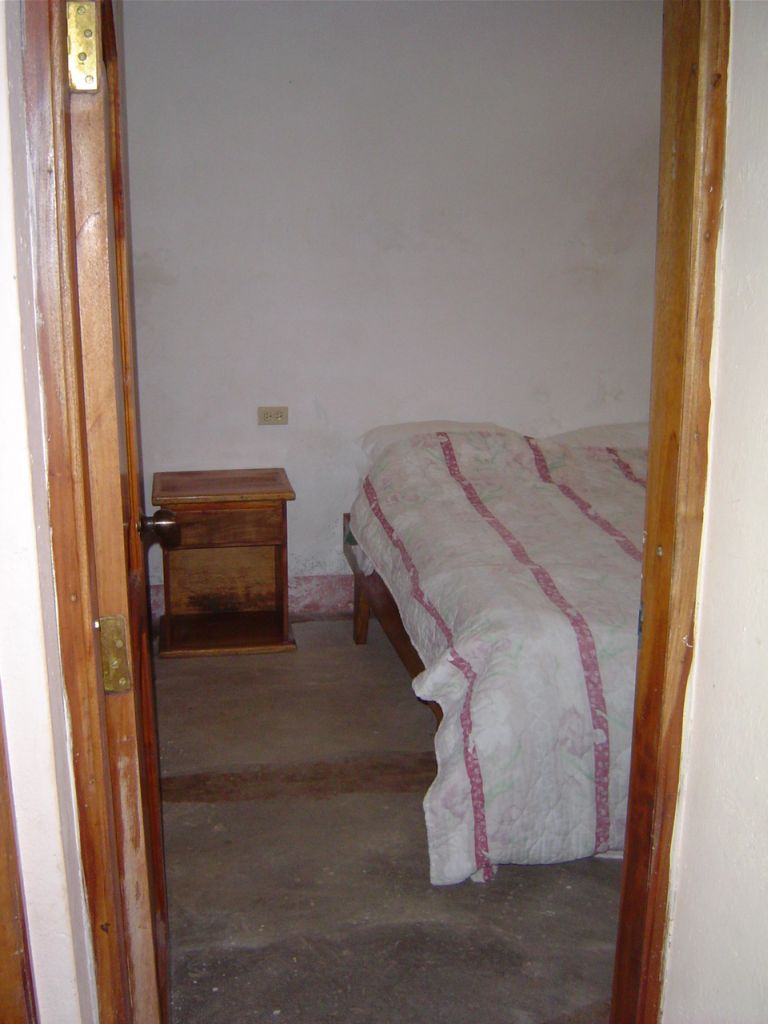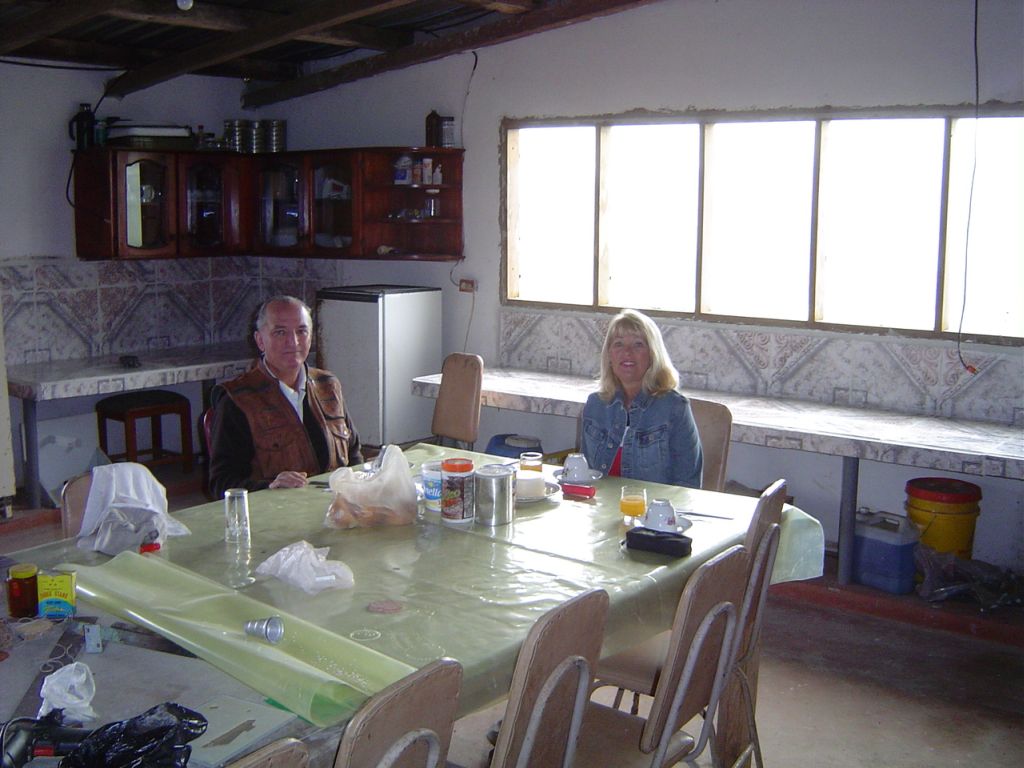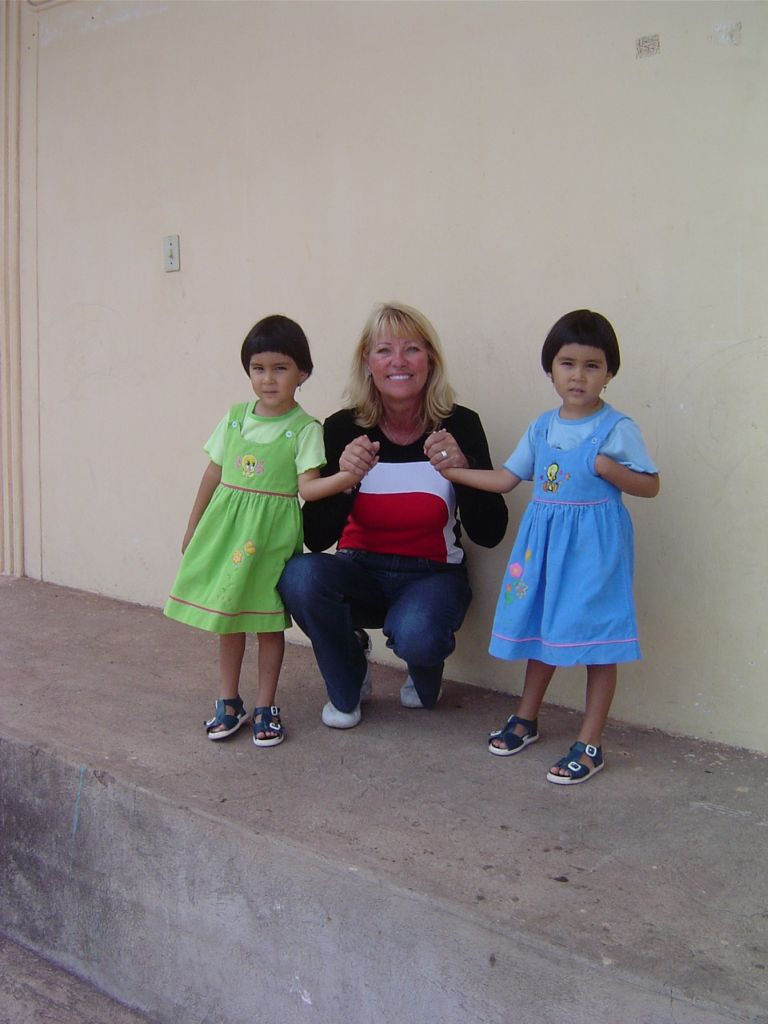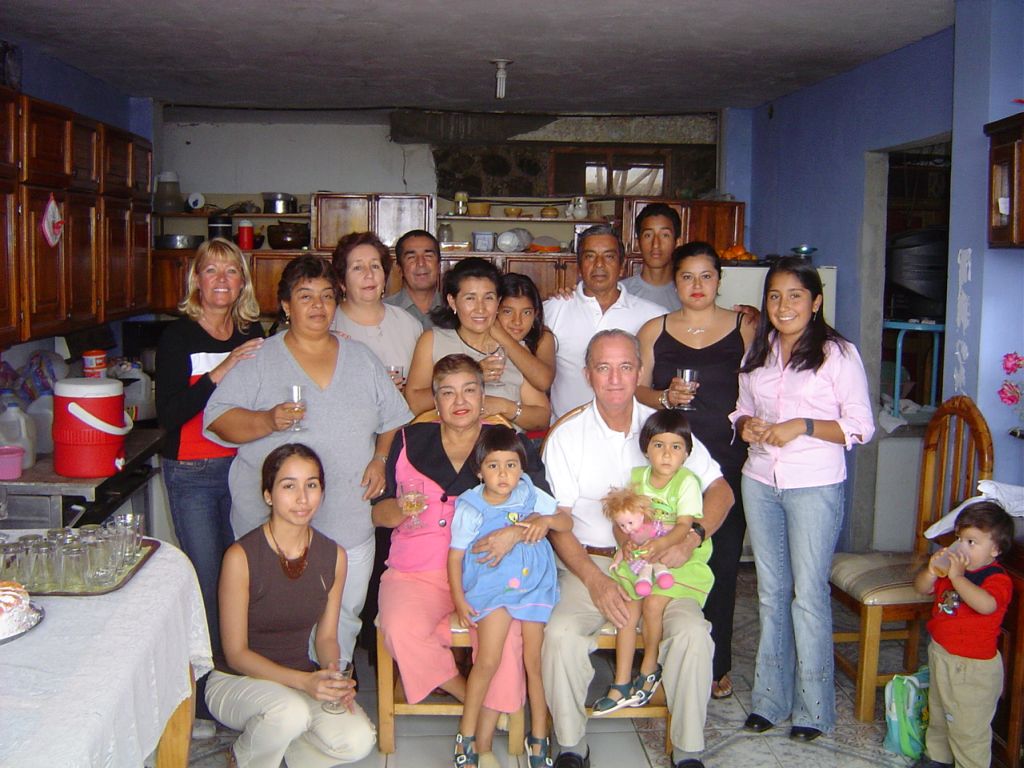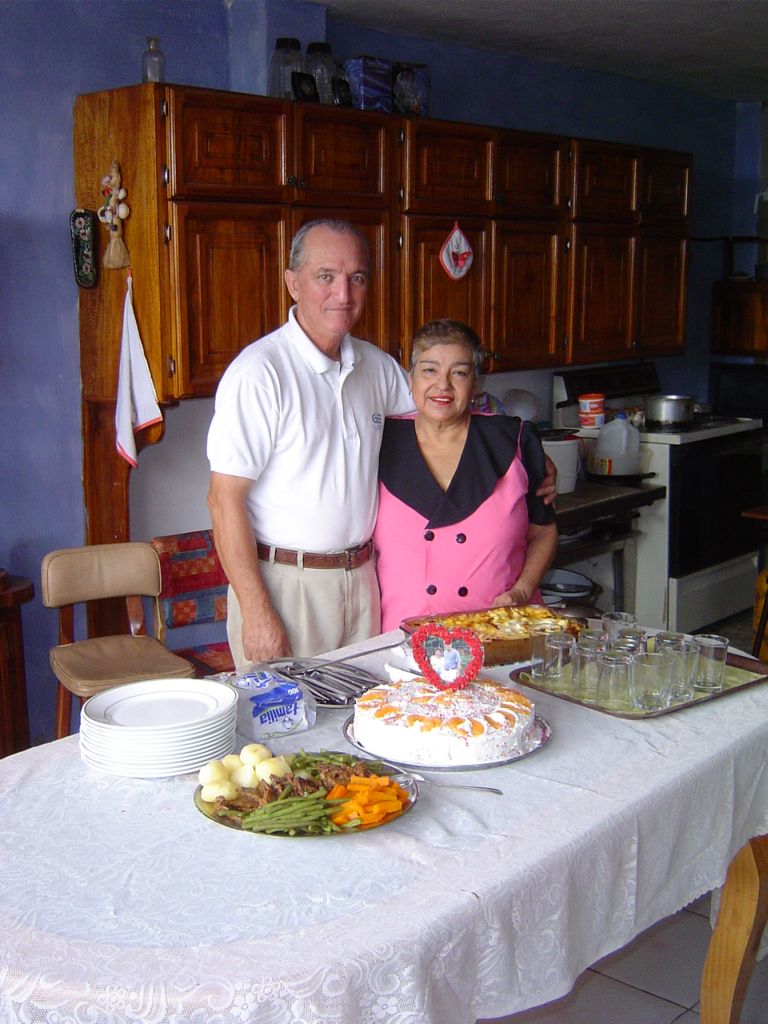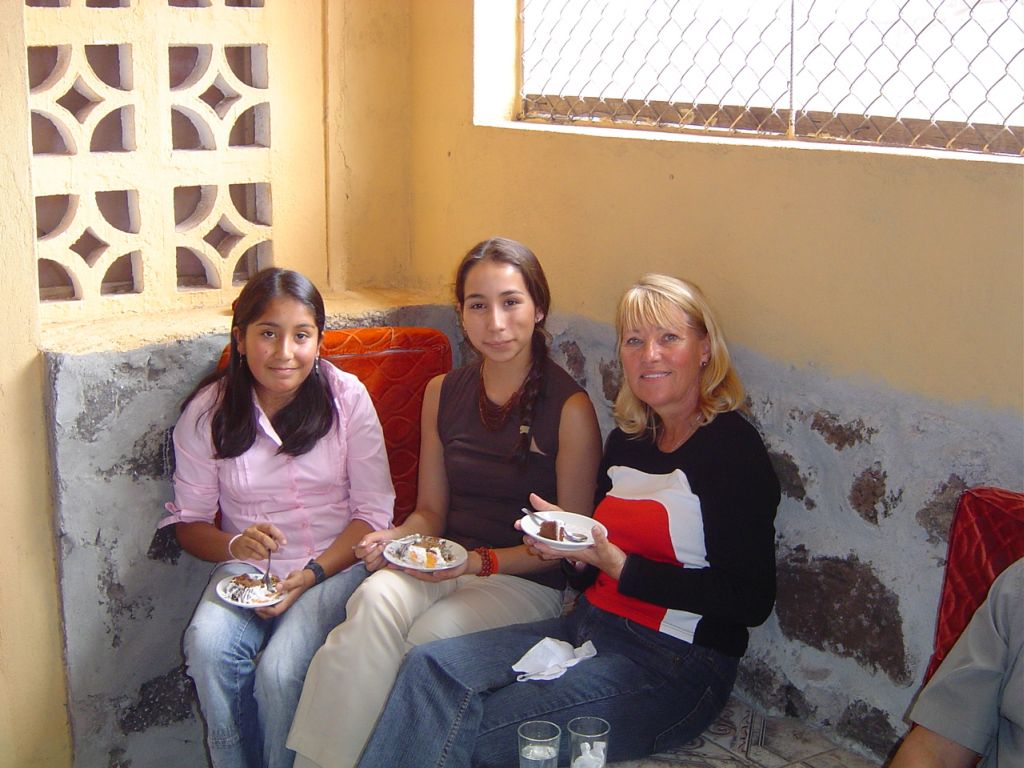Ecuador and the Galápagos Islands
July, 2004
July 25th
A day of Rest and Relaxation, lingering over breakfast coffee (best since Guatemala) lounging by the pool, watching HBO on TV.
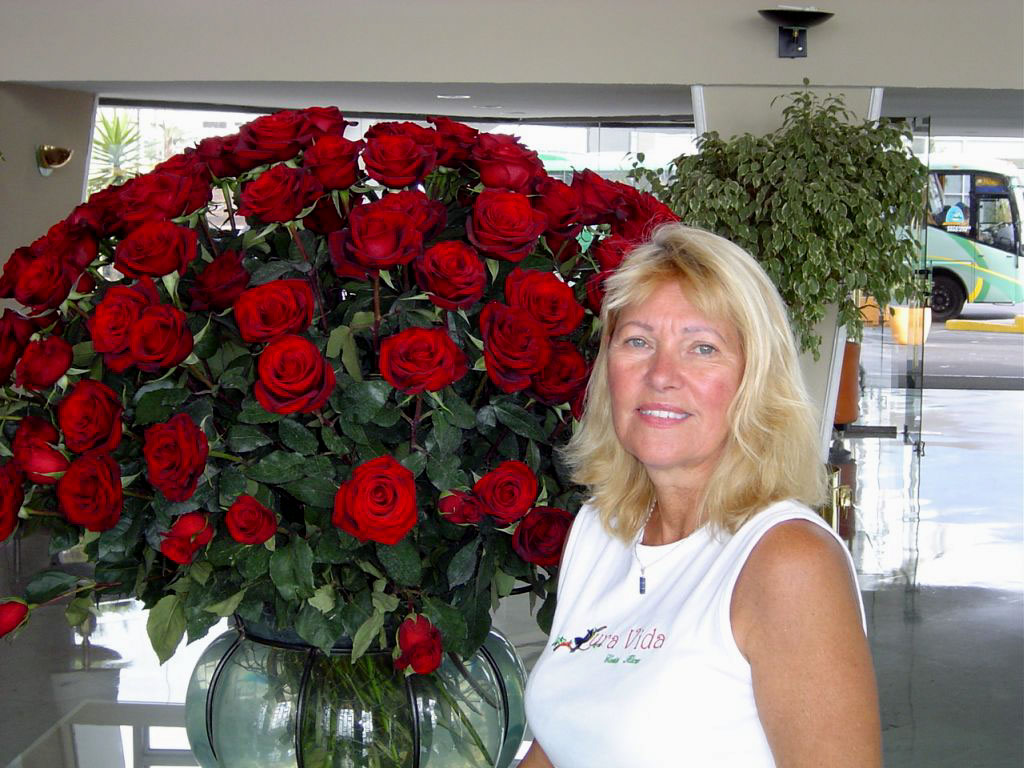
Ecuador is the world's supplier of roses
Huge bowls of roses were everywhere
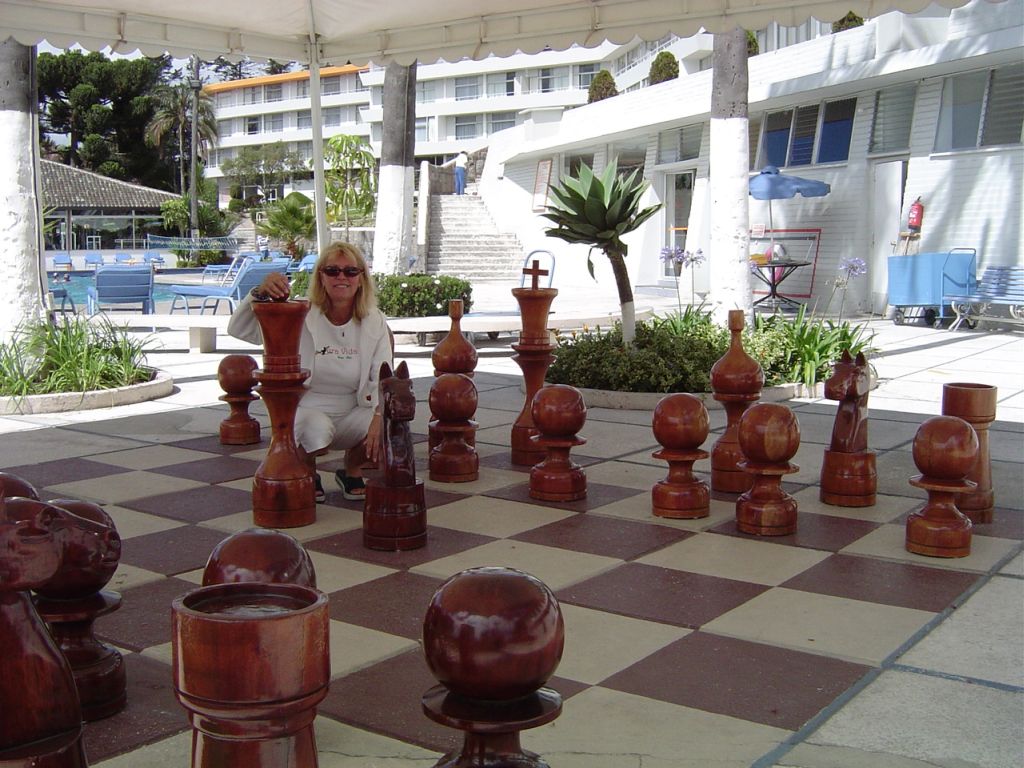
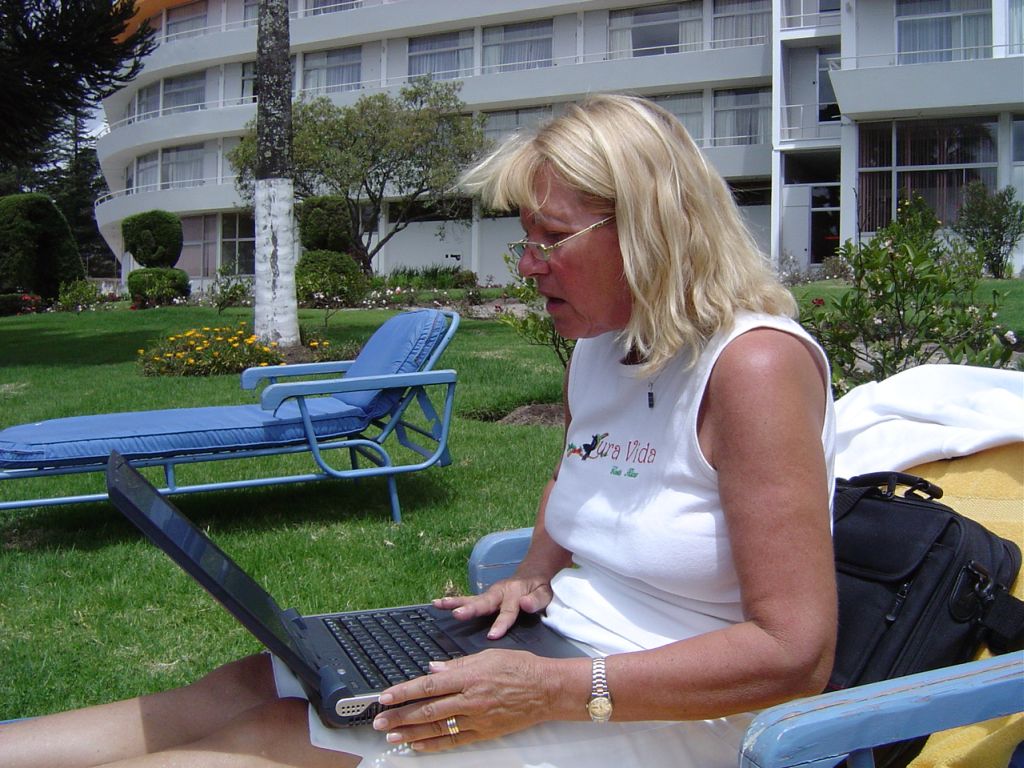
I'm going to kill this computer if it lost my letter again !!
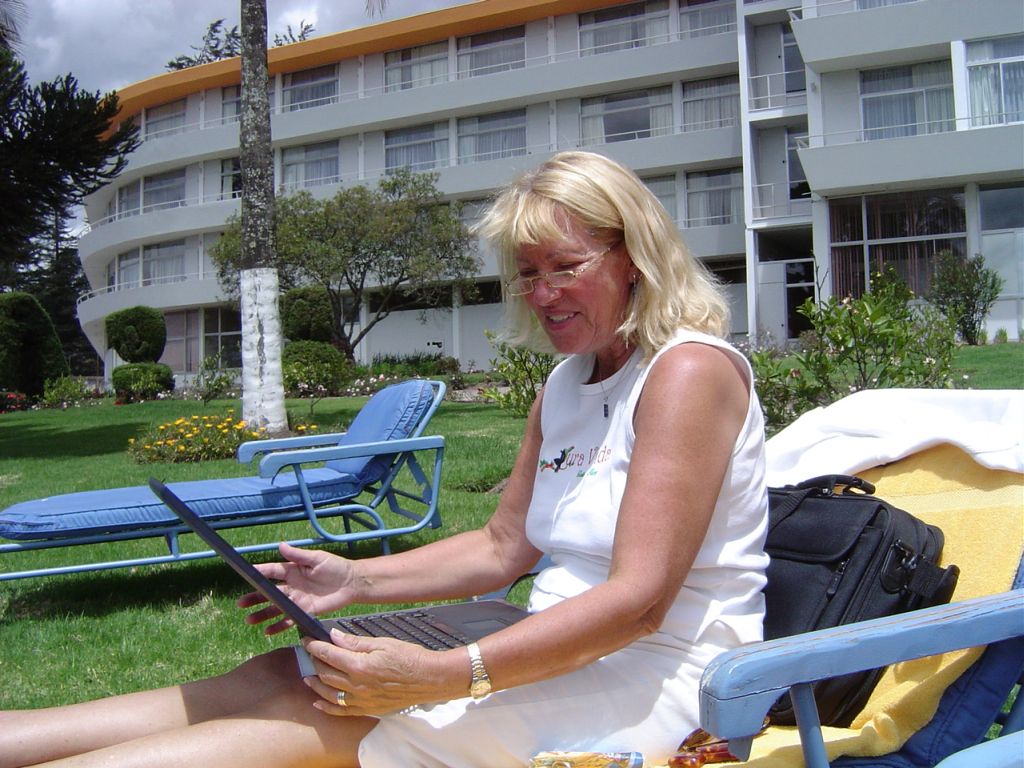
OK, never mind. I found it !!
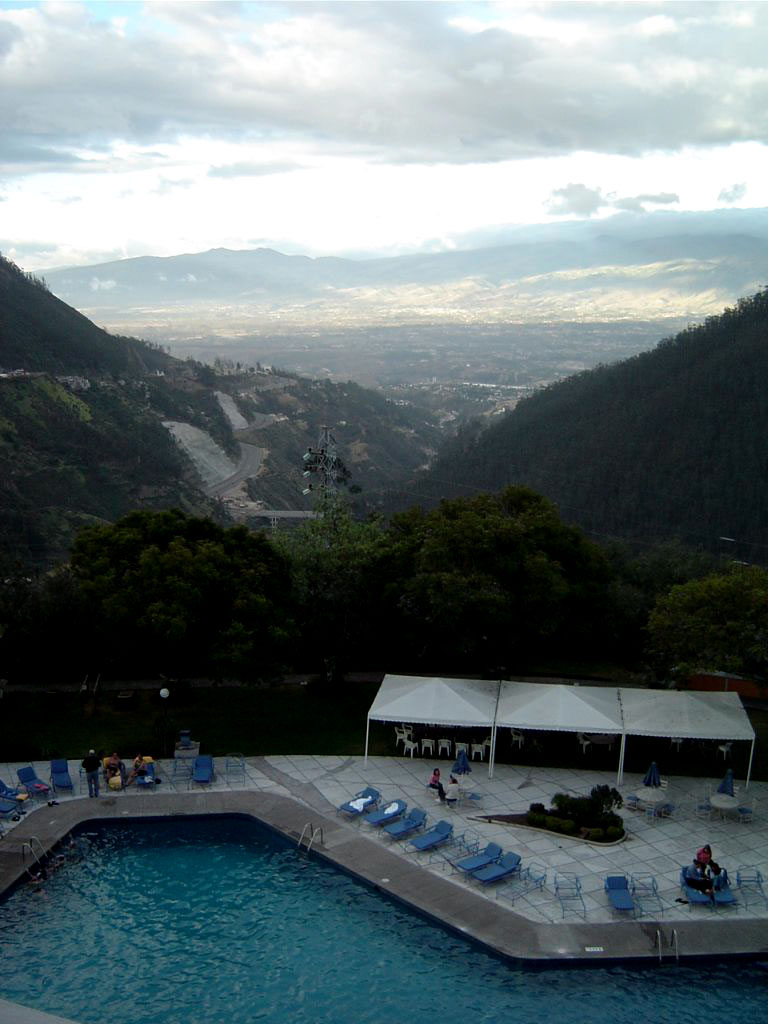
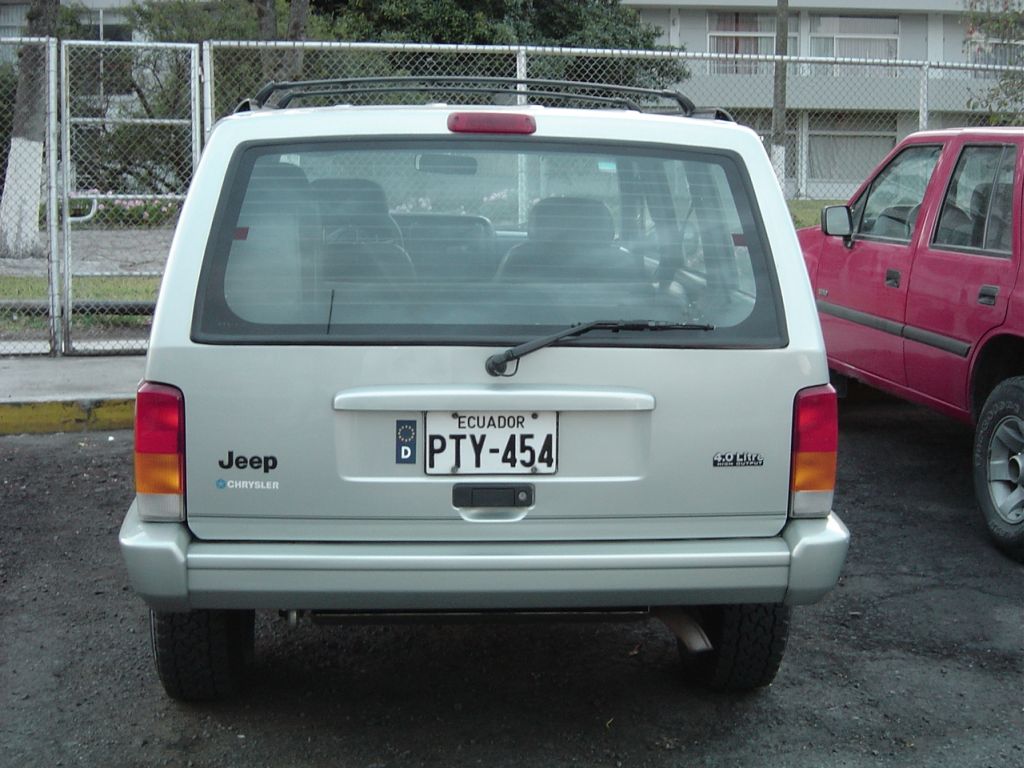
July 26th
Real information is hard to come by anywhere south of San Diego. Want to book a flight or make a hotel reservation? Computer reservations don't exist. Phone calls are a must. And then you start over for re-confirmation of every thing you thought was confirmed. Allow ten times more time than you ever expected to get simple tasks like this completed. We sat in the hotel's travel office for hours to get our flight and boat reservations for the Galapagos, something we expected to take only minutes. We walked out with transportation to (and lodging on) San Cristobal unresolved; getting the necessary information was beyond their ability and our patience. Life was simple when we had our Jeep and all we had to do was drive up to a hotel and walk in.
One complication we found in South America that we didn't encounter in Central America is that it's "high season" here. We were traveling during the rainy season in Central America and had the place to ourselves. Now we are facing competition from all sides. The waiting list for the 4-day hike to Machu Picchu is said to be 30 days...
After the dust settled at the travel office, we headed out to the HCJB transmitter site. Tim Zook gave us an in-depth tour, opening many of the transmitter cabinets and even taking us inside the solid-state modulator for one of their 100,000 watt transmitters. There is no modulation transformer; twenty-seven 500 volt power supplies connected in series, controlled by fiber-optics, deliver 13,500 volts to the final amplifier. Power for the station comes from a hydroelectric facility on the other side of the Andes. We did a walk-around of the antennas outside the transmitter building, arrays of 4-high by 4-wide folded dipoles and curtains covering many acres, all fed with 500 ohm balanced lines.
No wonder they provided such a strong signal when I first heard the station as a kid back in Iowa during the fifties. Visiting the site was a real treat.
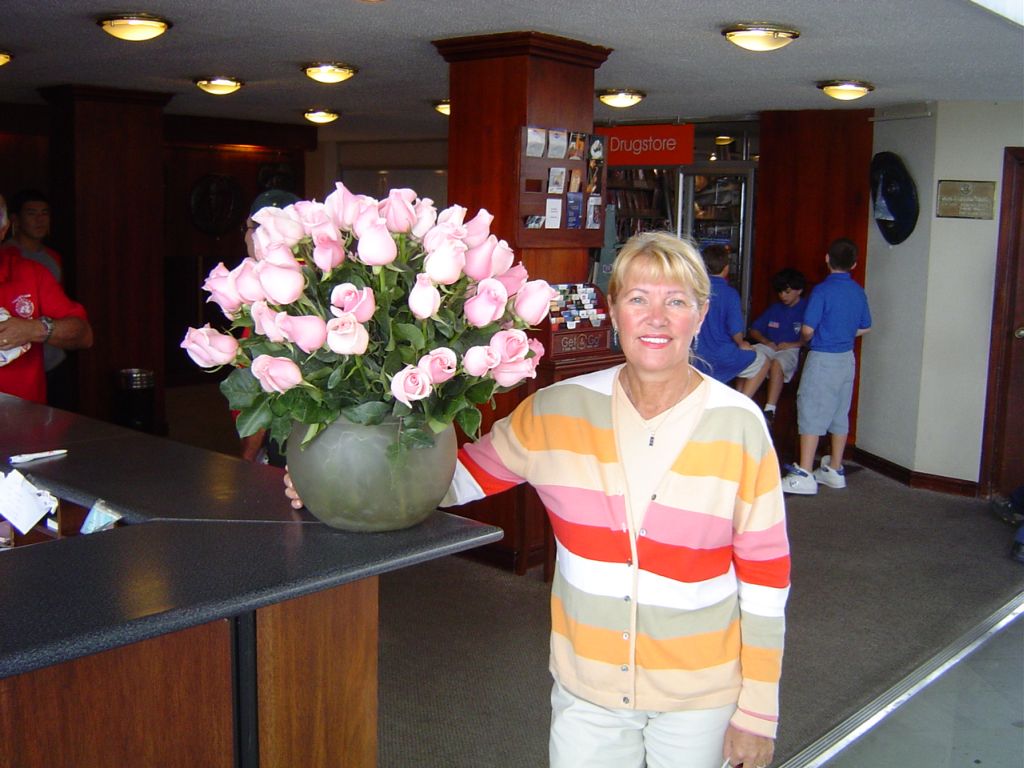
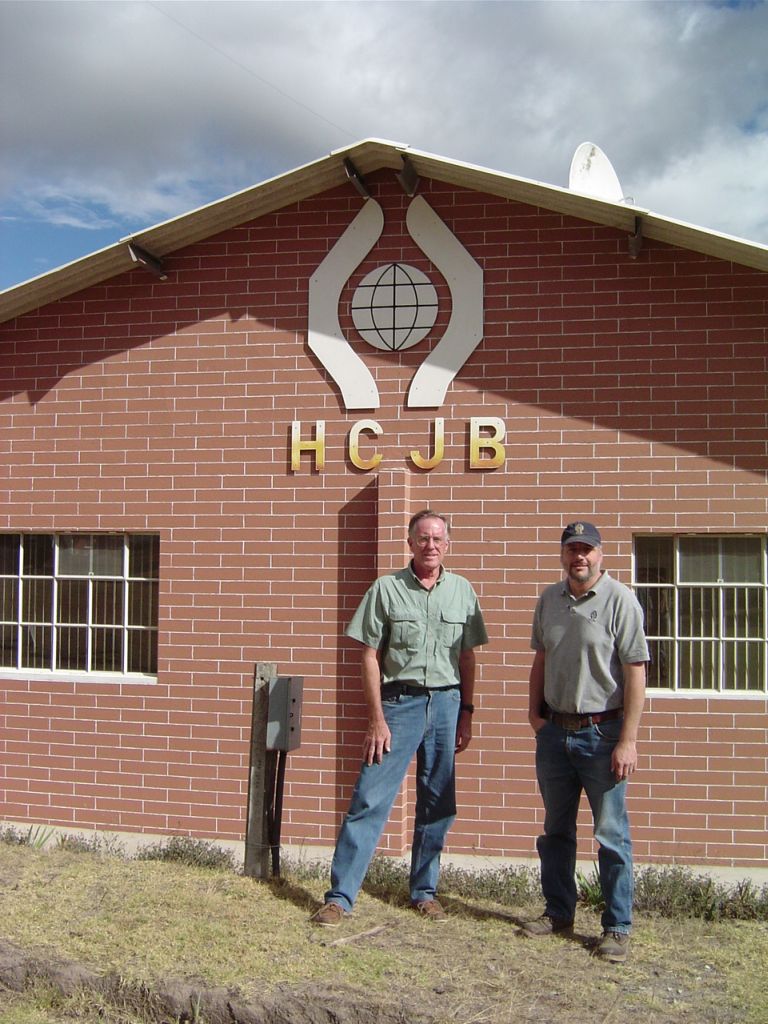
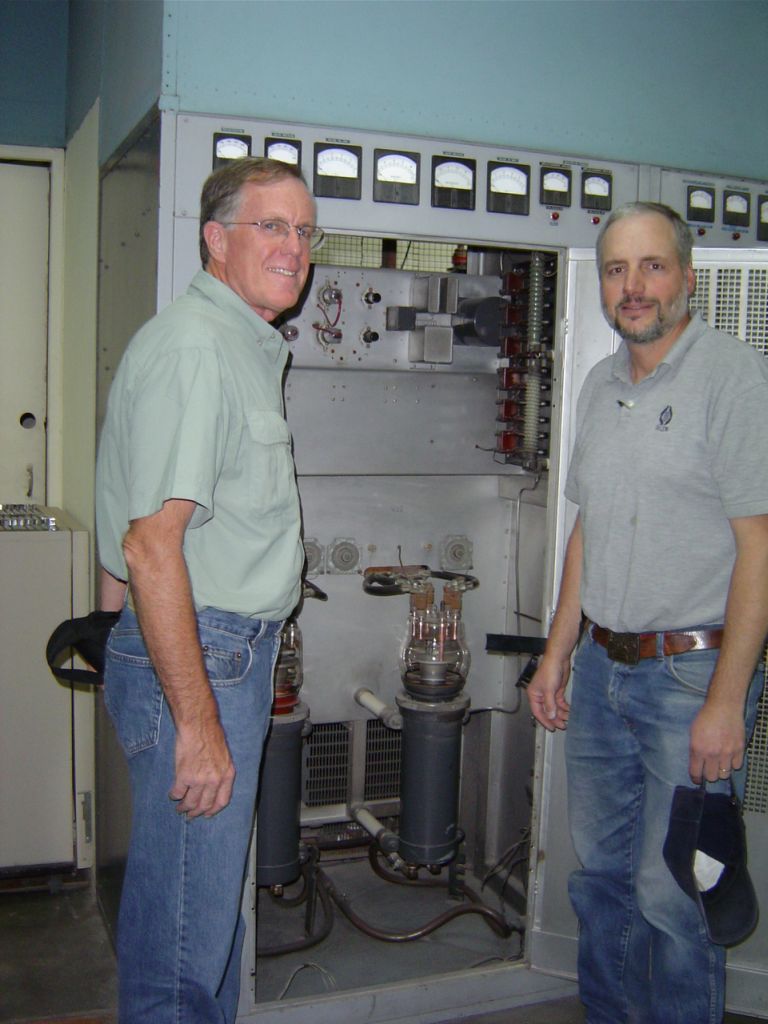
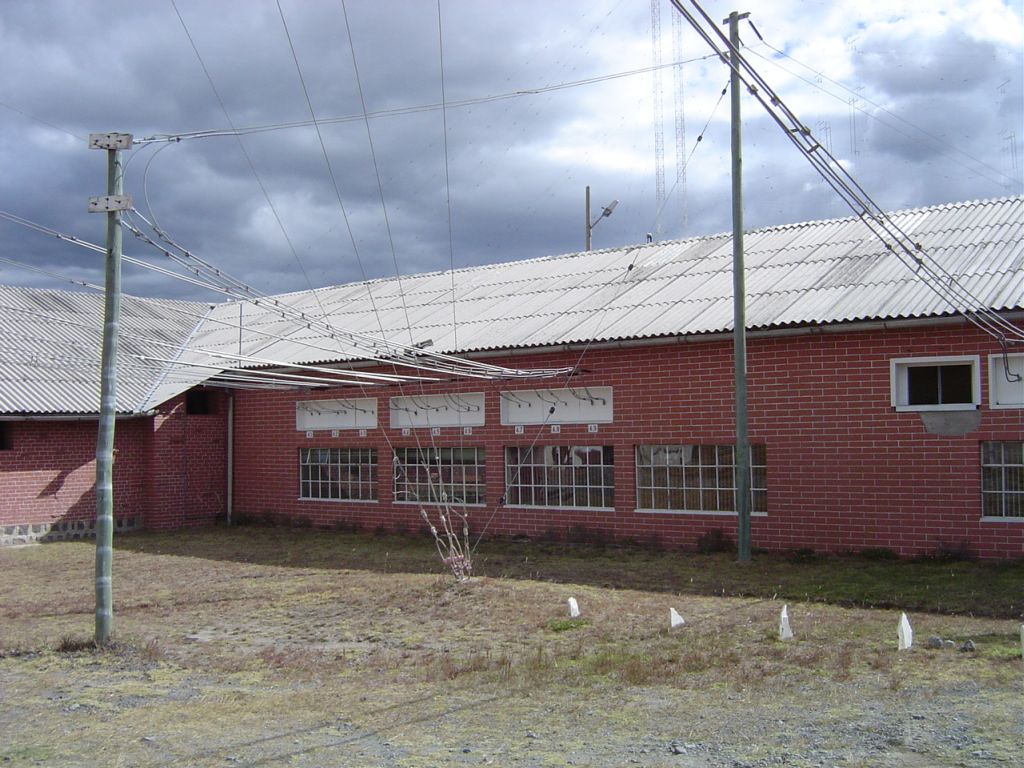
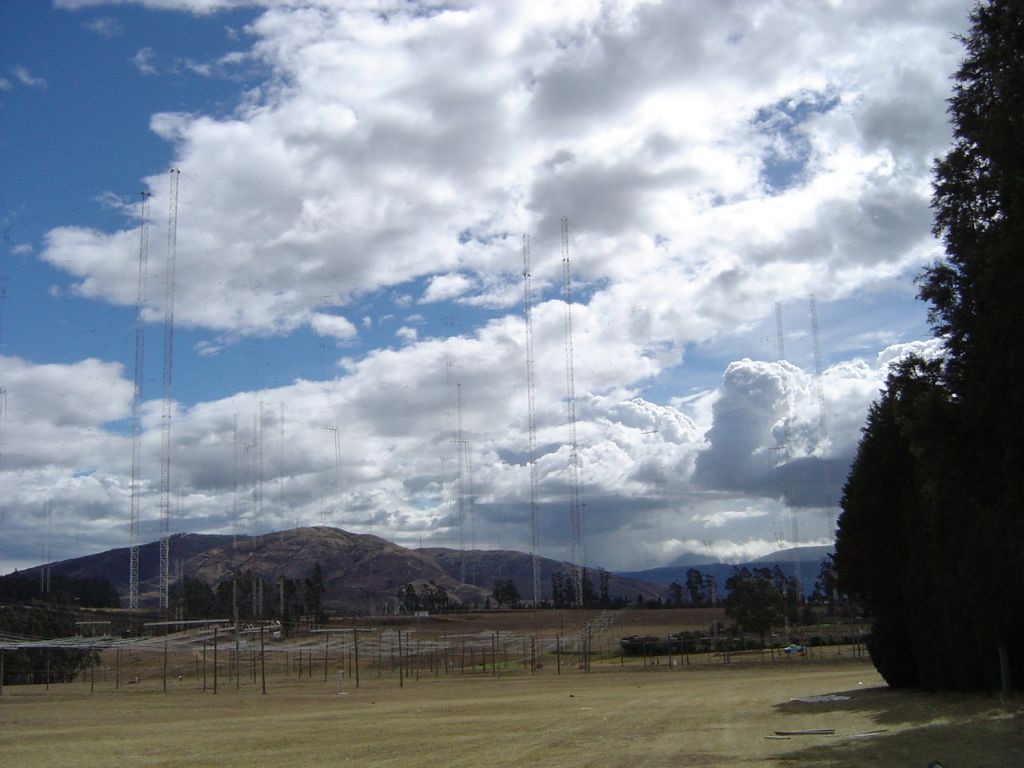
The most important part of any radio station is not the receiver or transmitter...
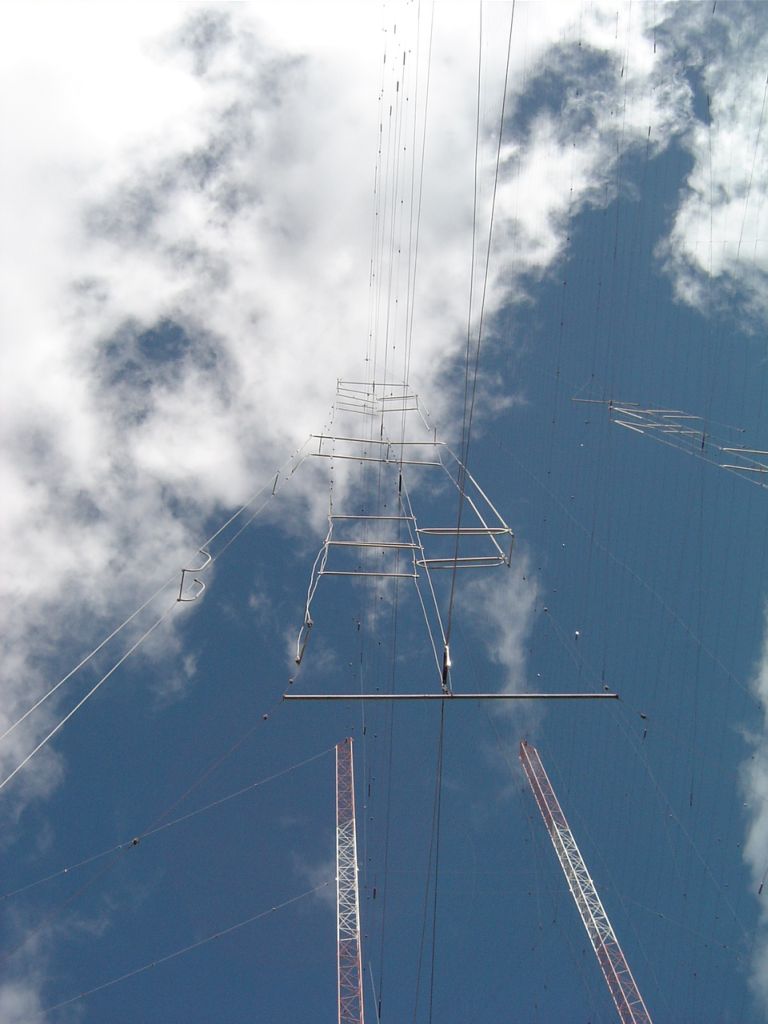
...It's the antenna
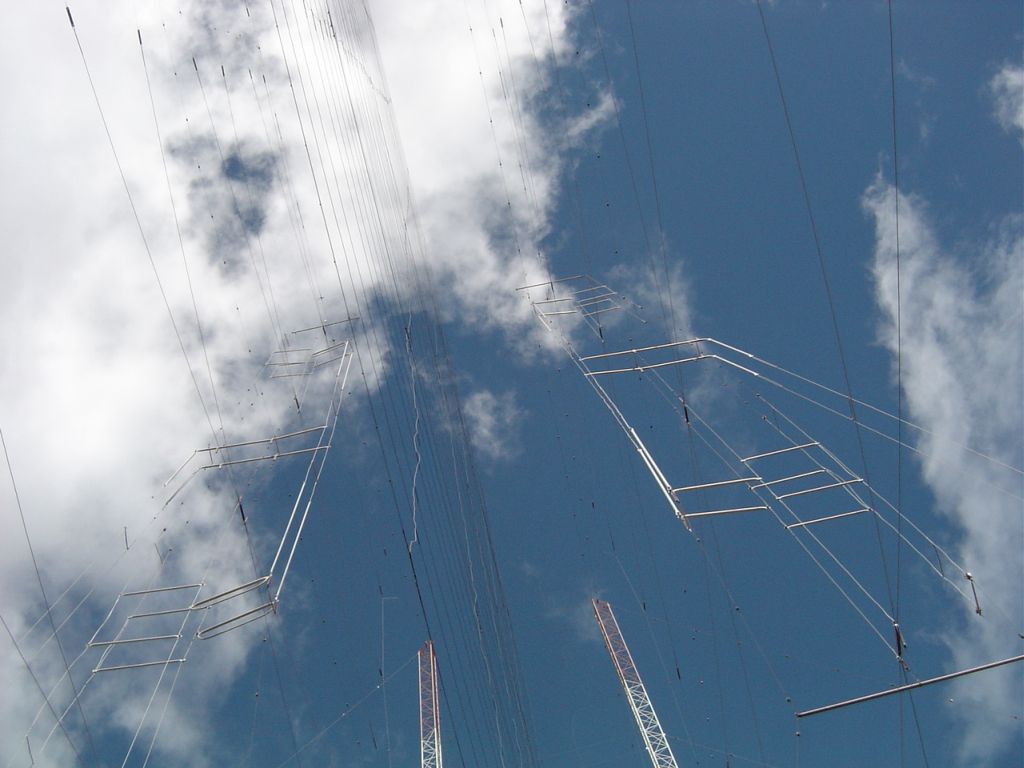
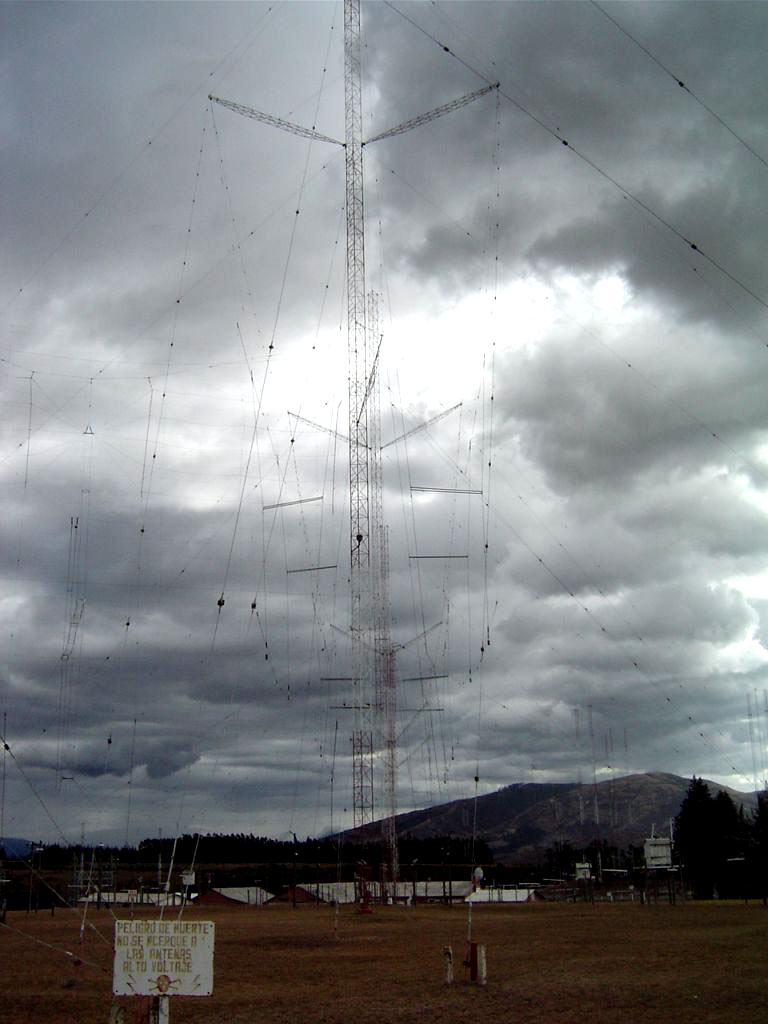
PELIGRO DE MUERTE NO SE ACERQUE A LAS ANTENAS ALTO VOLTAJE
danger of death do not approach to the antennas high voltage
It will hurt like hell the whole time you are dying
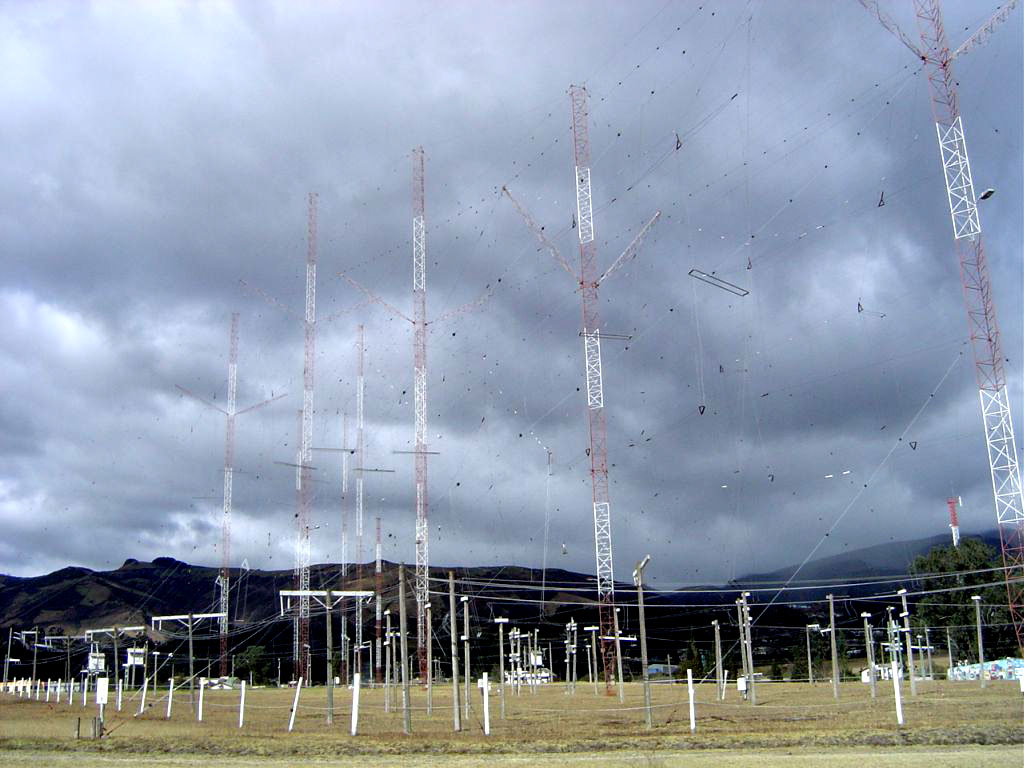
After nearly 80 years of shortwave broadcasting from Ecuador, Radio Station HCJB ended shortwave transmissions on September 30, 2009.
The international transmitter site in Pifo was dismantled to make way for the city of Quito's new airport.
July 27th
Return to the Galapagos
Departed Quito at 8:30 AM on AeroGal for Baltra Island, on which the airport serving Santa Cruz Island is located. A bus takes you to the ferry connecting the islands and another bus takes you into Puerto Ayora, where the cruise ships are anchored in Admiralty Bay. Our boat, the Galapagos Adventure I, was 27 meters long and carried 20 passengers, the right size for getting into the shallow water near the smaller islands. We were taken out to the boat in a water-taxi; our luggage had already been transferred aboard. Cabins were assigned by drawing a card from a deck. Since I had already indicated I would like a cabin low in the boat and near the center-of-gravity, they slipped me the Ace, giving me first choice.
The first trip ashore was to the Charles Darwin Foundation in Puerto Ayora, which we reached in an inflatable boat. The center's primary activity is incubating turtle eggs, raising them for 5 years and returning them to the wild. They have passed the 1000 turtle mark.
Lonesome George, a hundred-year old giant tortoise at the Darwin Foundation, has been provided with his own pen and two presumably willing females. After seven years without any off-spring, it appears that "Solitario Jorge" is going to be the last of his particular breed. On the other hand, Diego, who spent from 1906 to 1970 in the San Diego Zoo, returned to the Galapagos and provided 1000 baby turtles with his five wives.
Compared to my visit three years ago, the center seems to be in decline, with fewer people bustling about and a general lack of activity
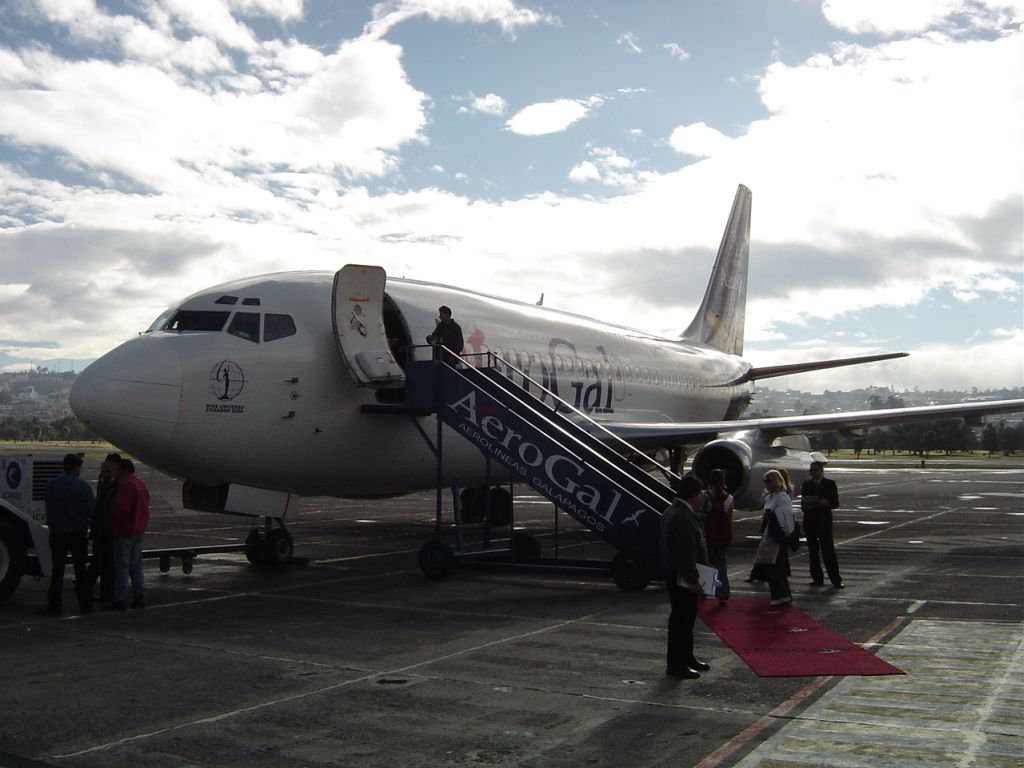
Departing Quito for the Galapagos
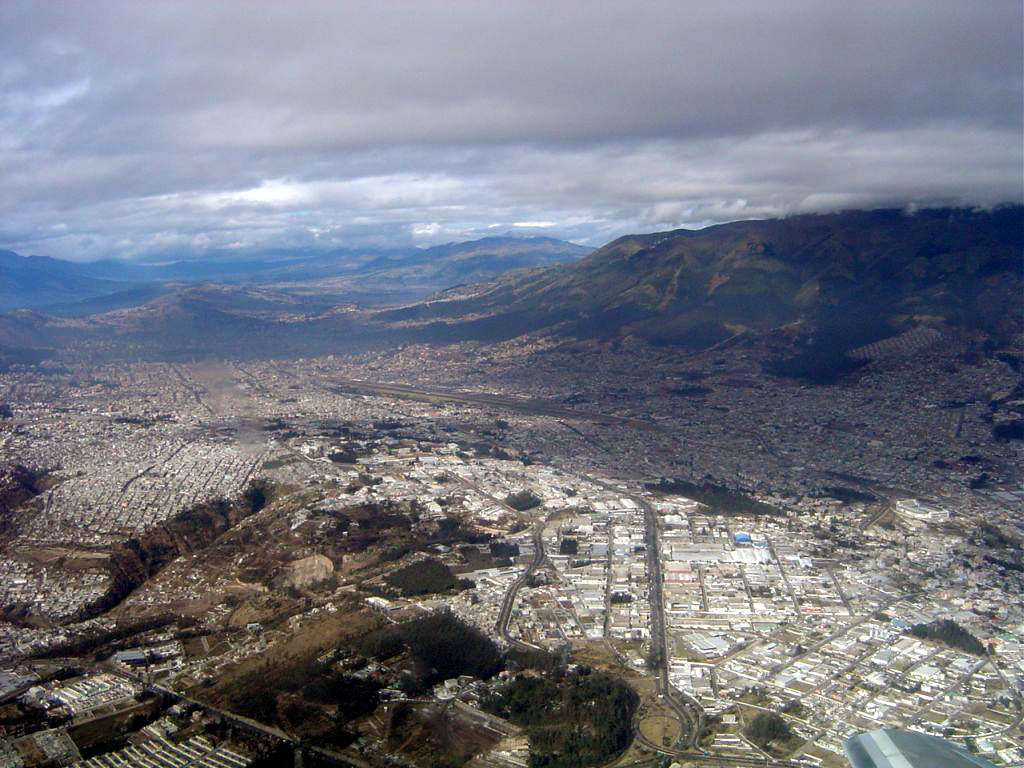
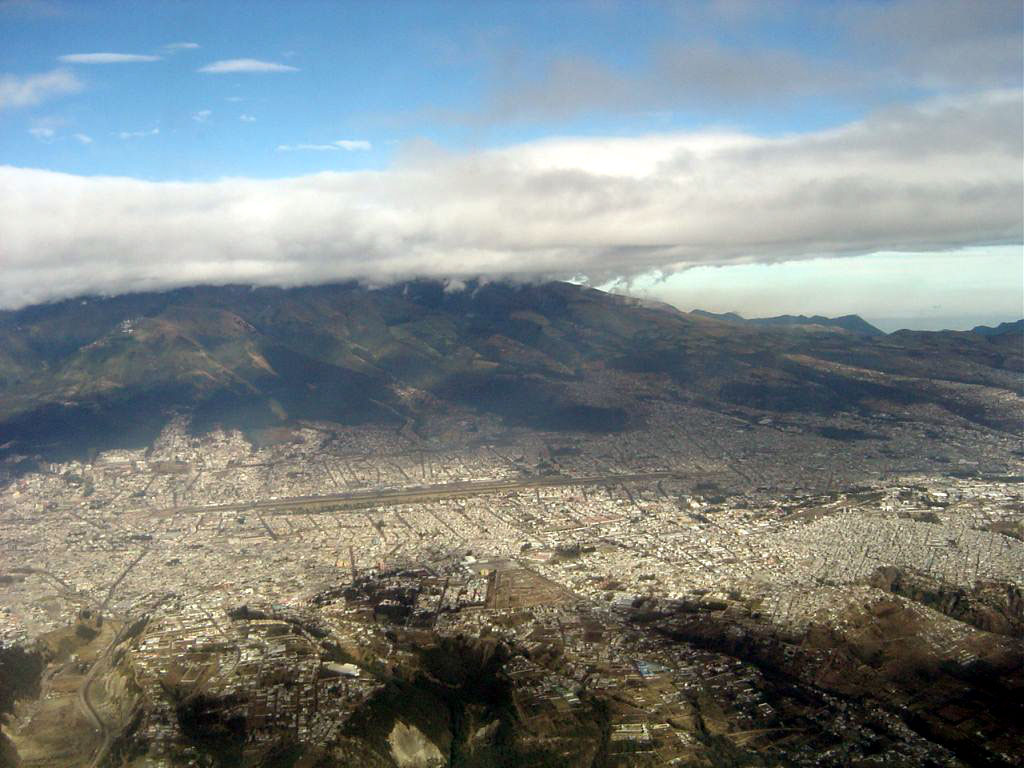
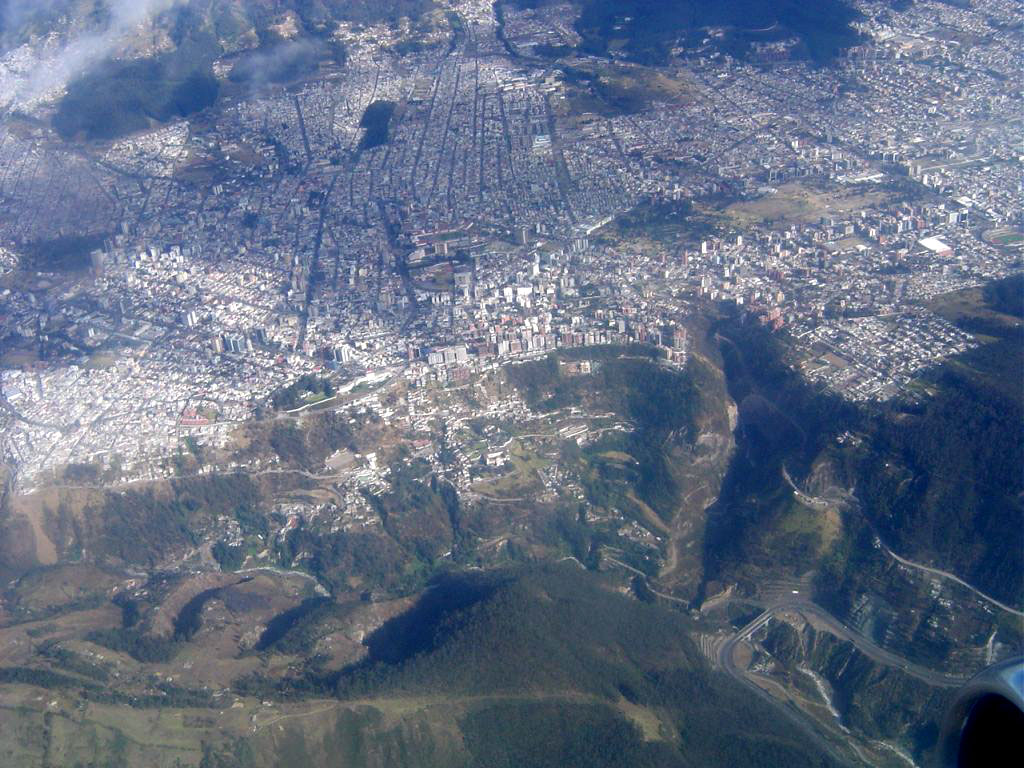
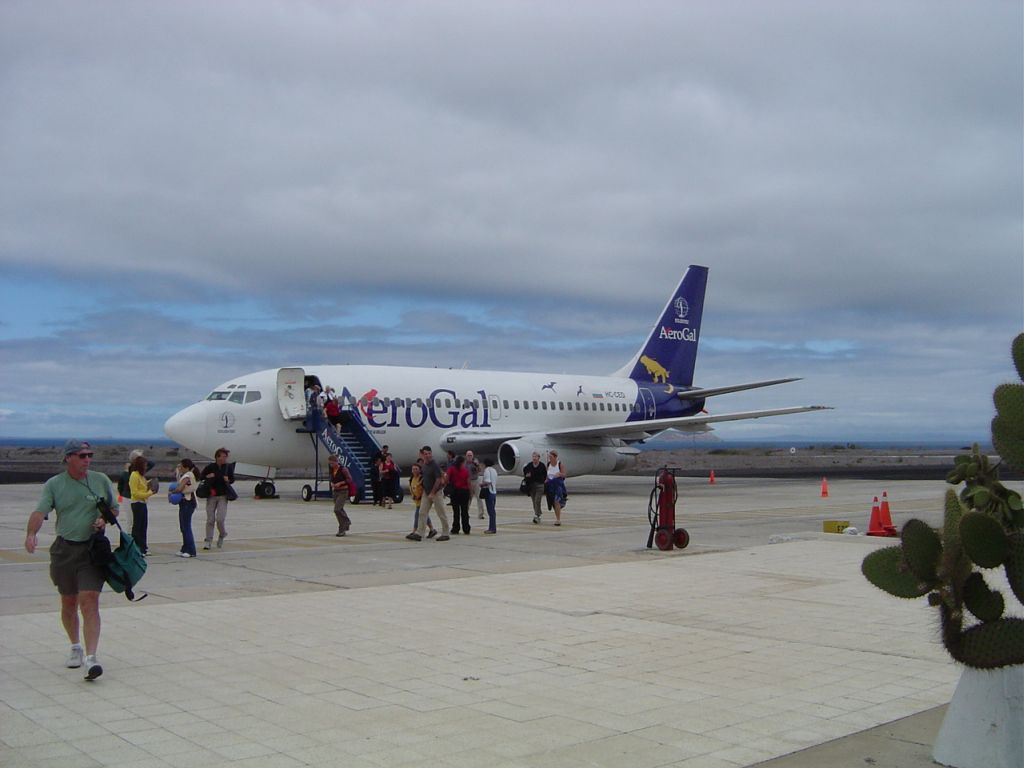
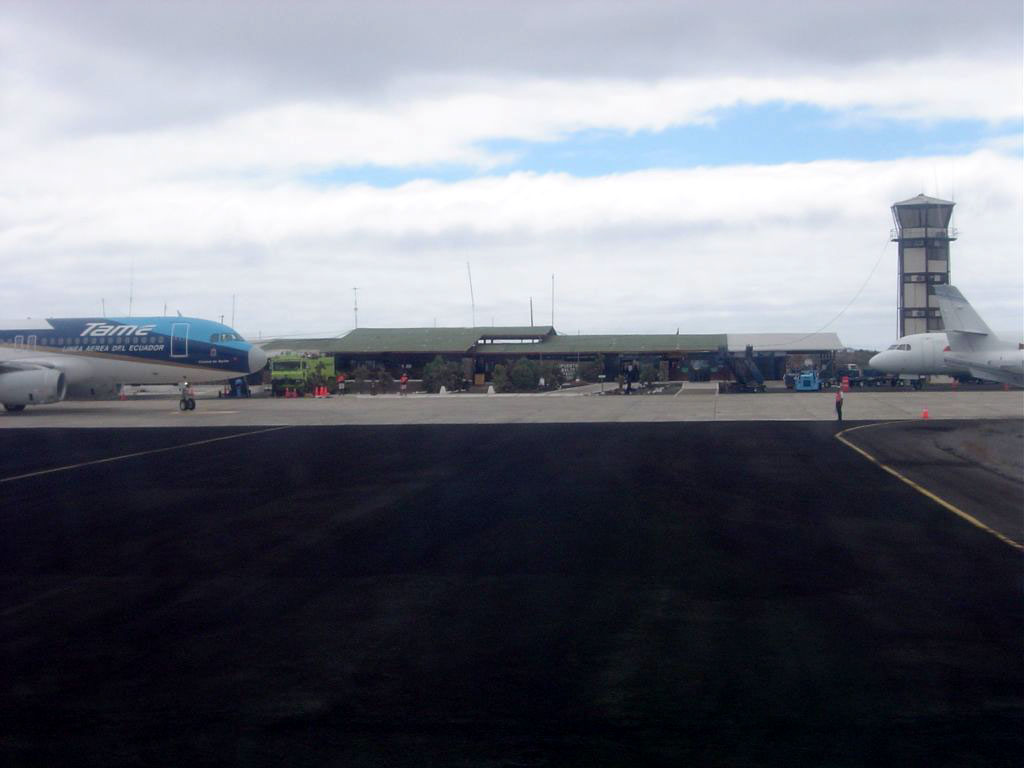
Aeropuerto de l'Islas de Galápagos
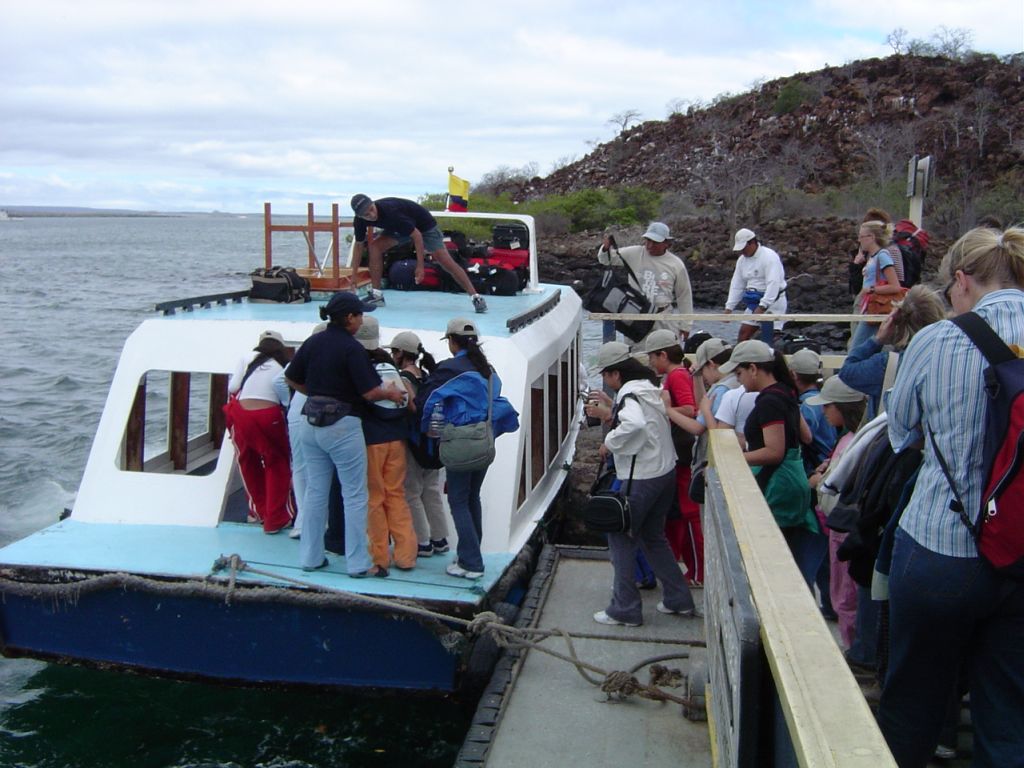
Boarding the ferry from Baltra Island to Santa Cruz Island
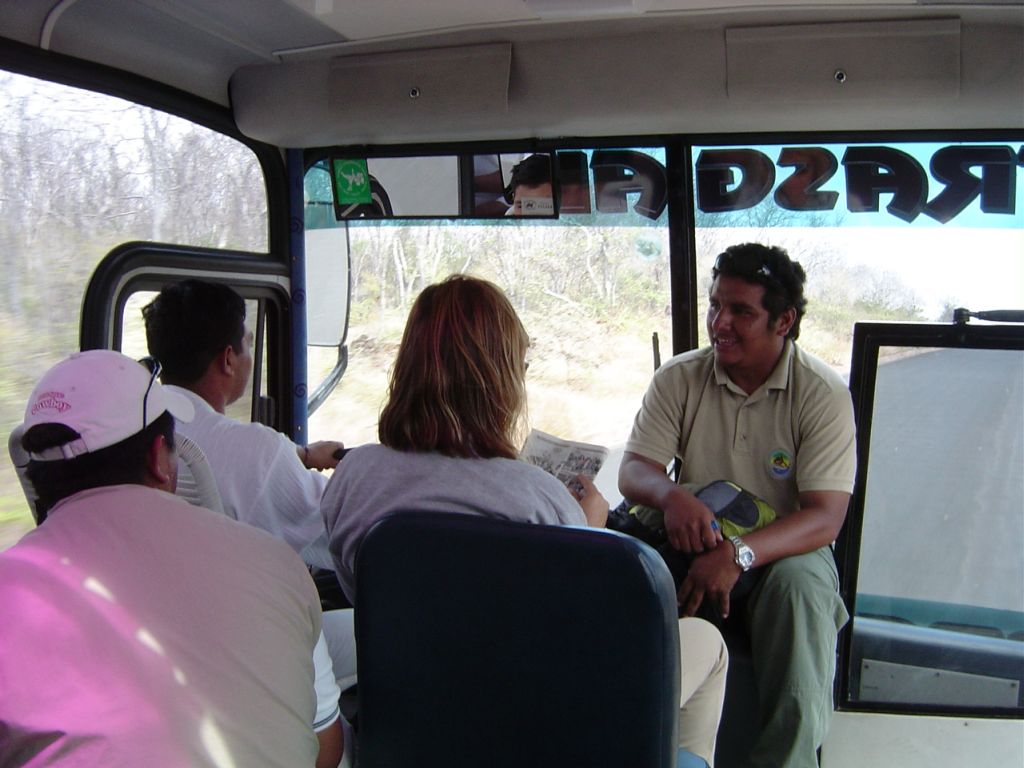
On the bus to Puerto Ayora
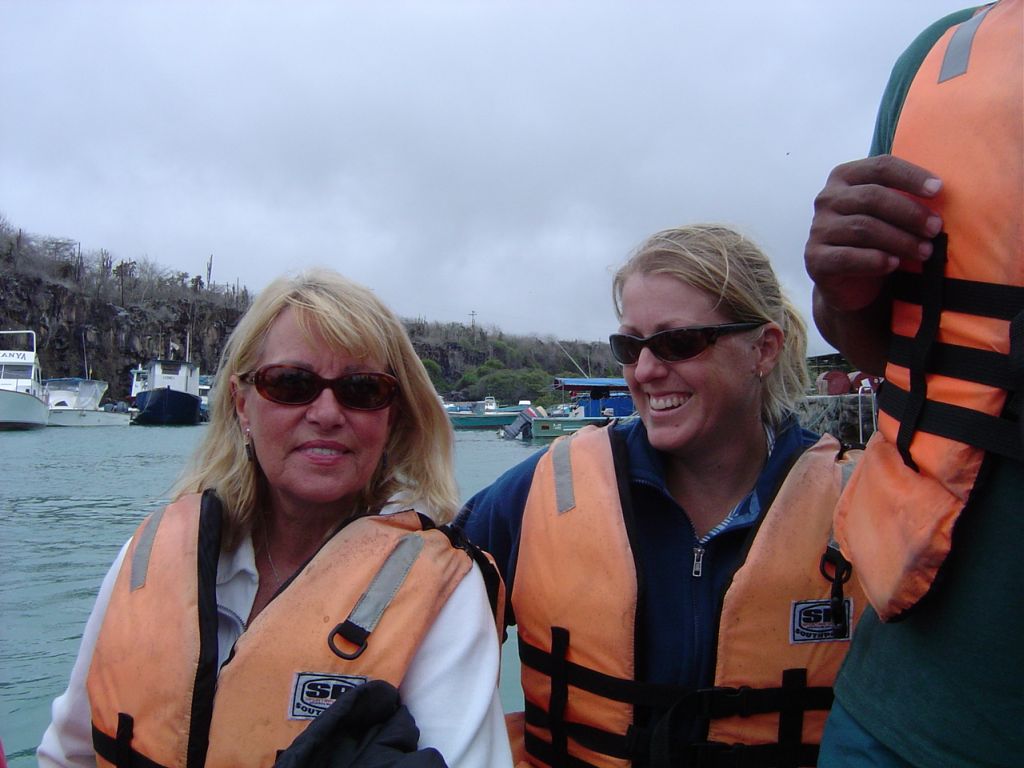
Our soon-to-be ship-mates, Natalie Williams (with whom we're still in touch)...
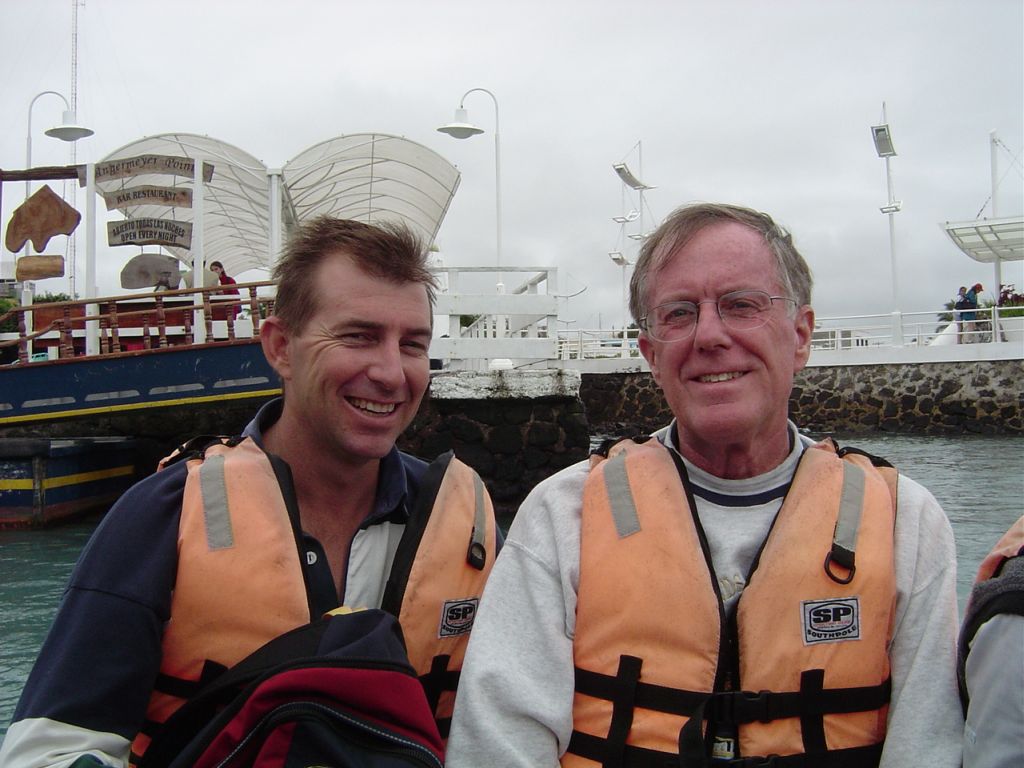
... and husband, Glenn Williams. They are now divorced.
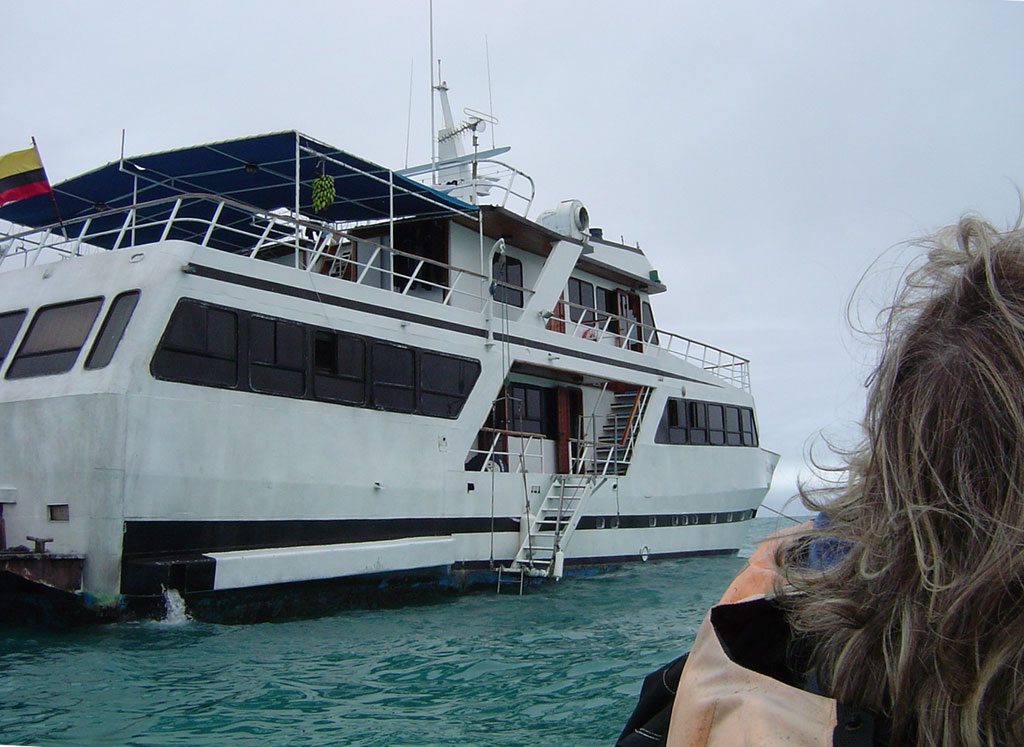
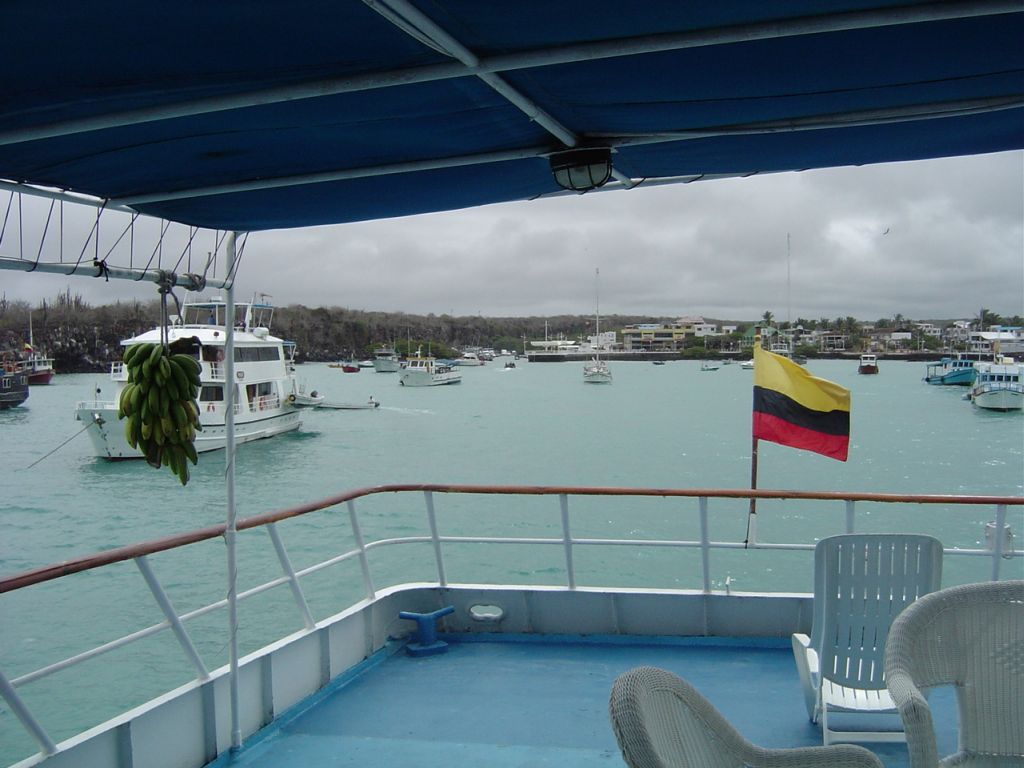
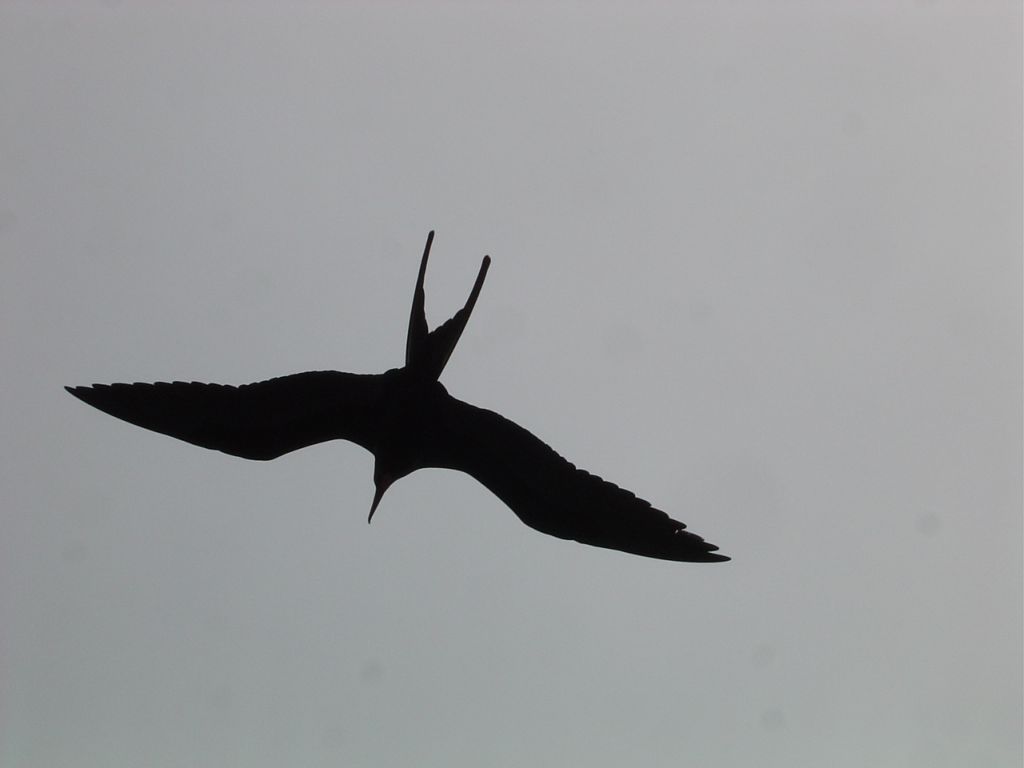
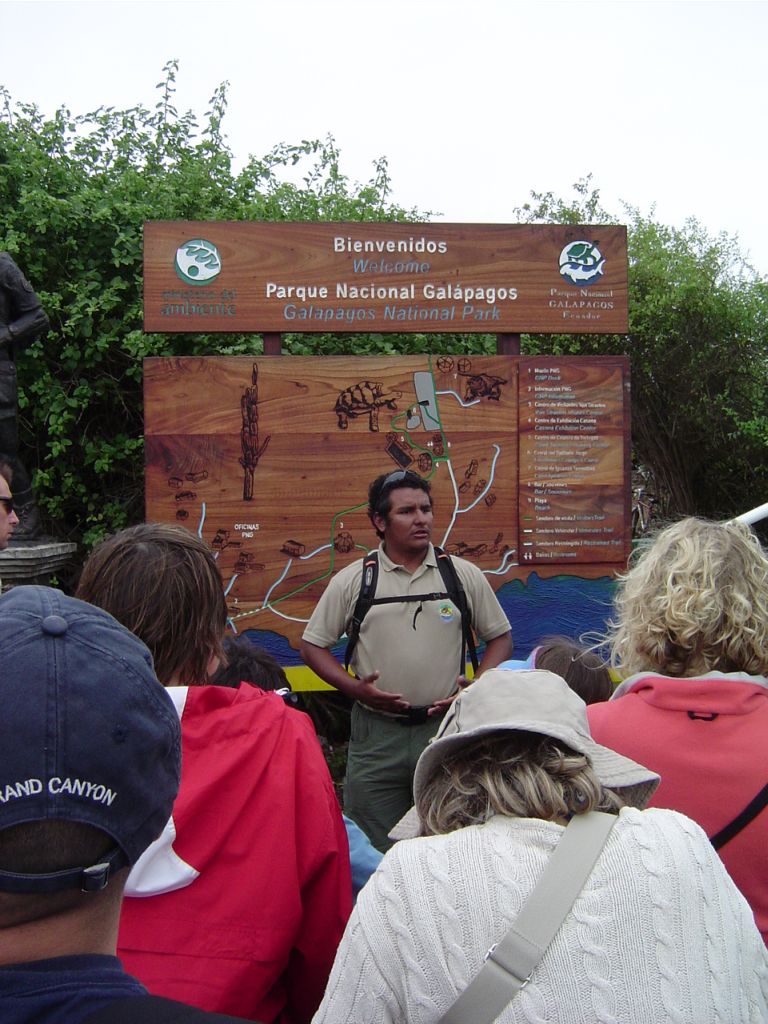
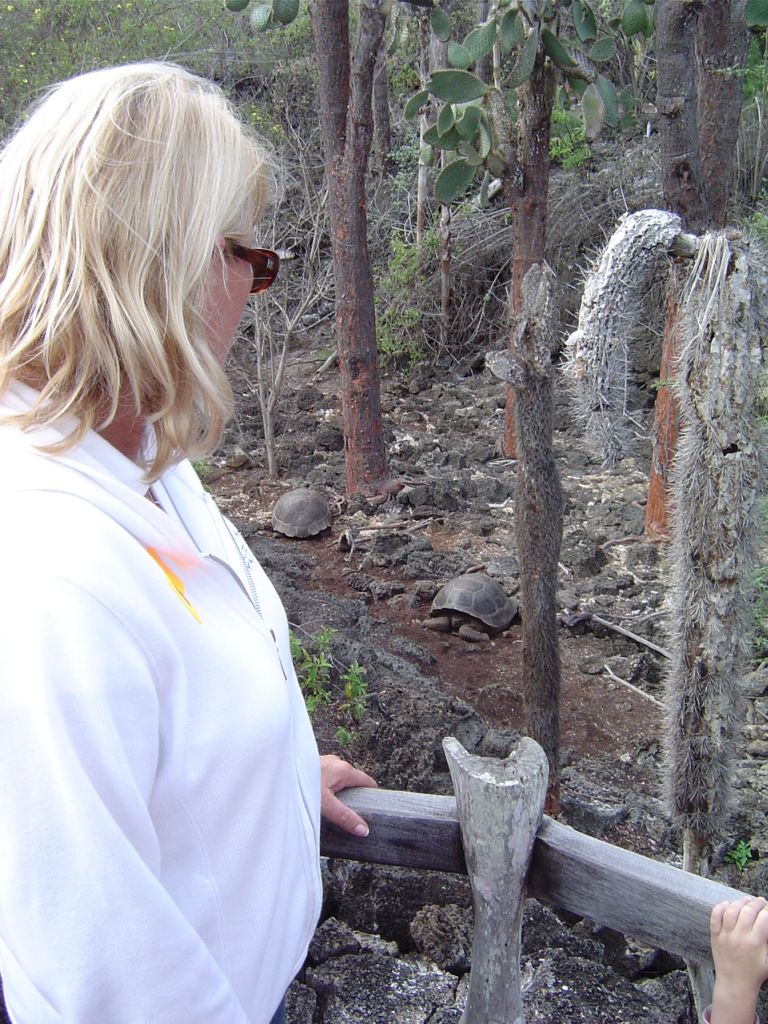
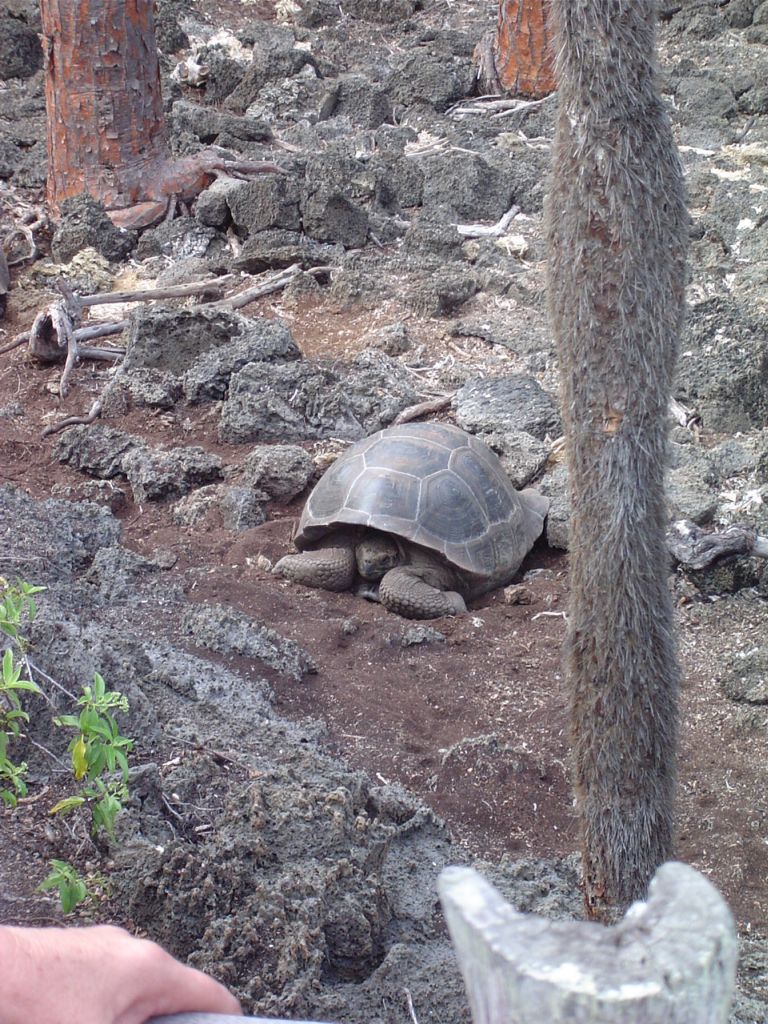
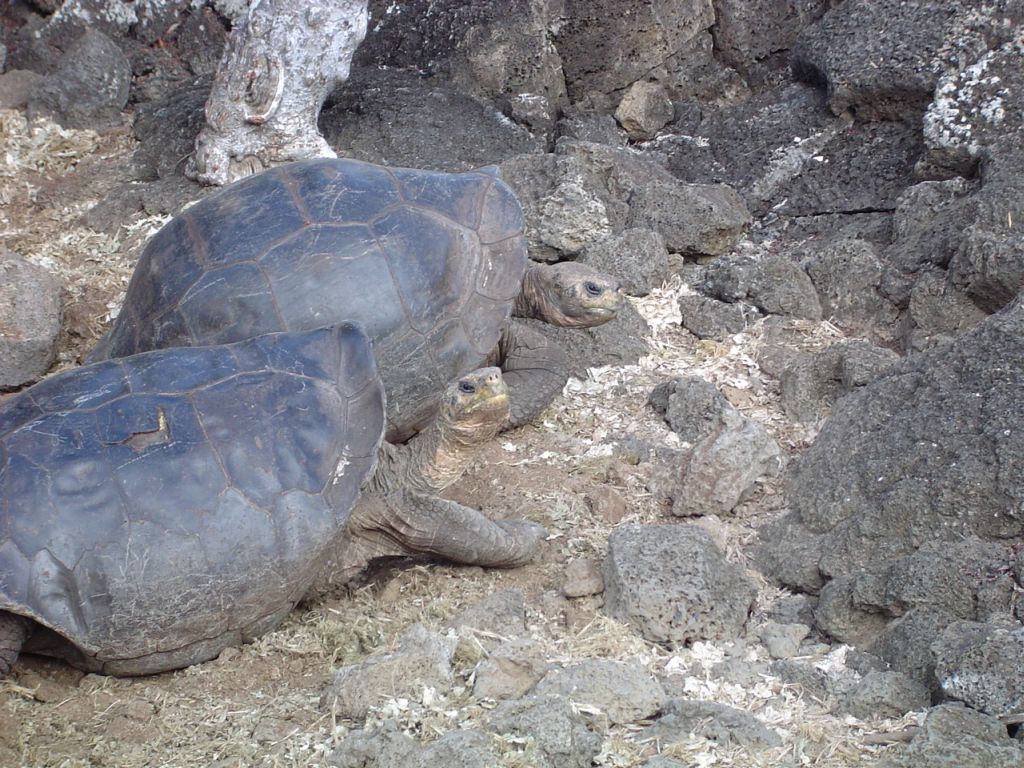
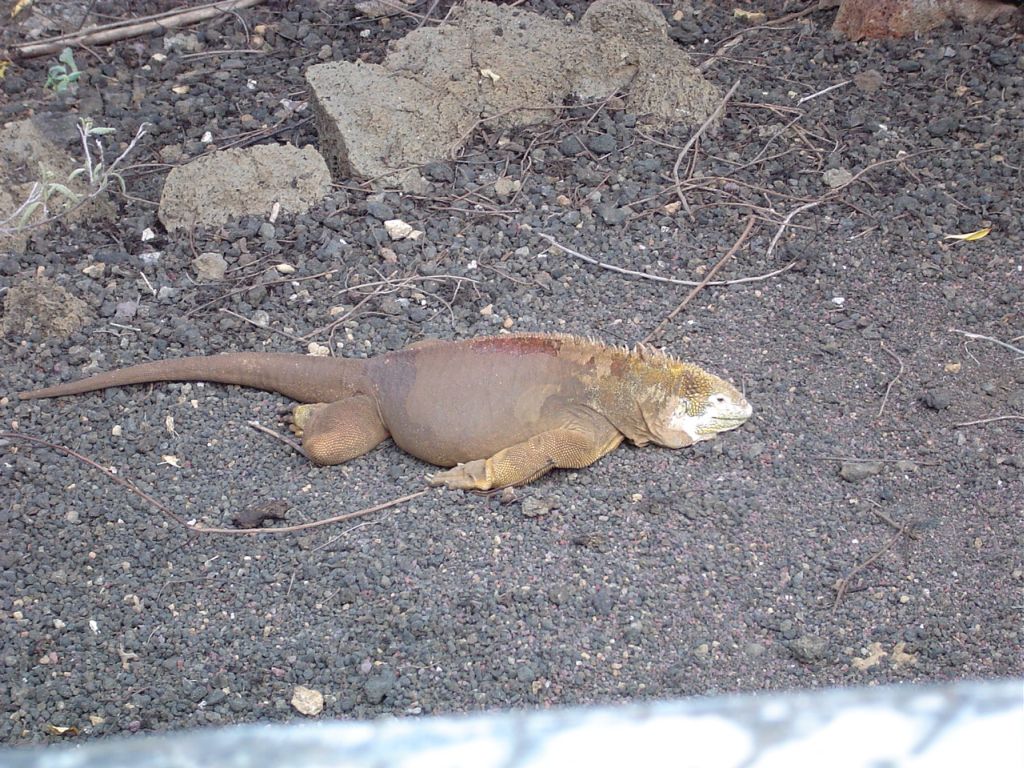
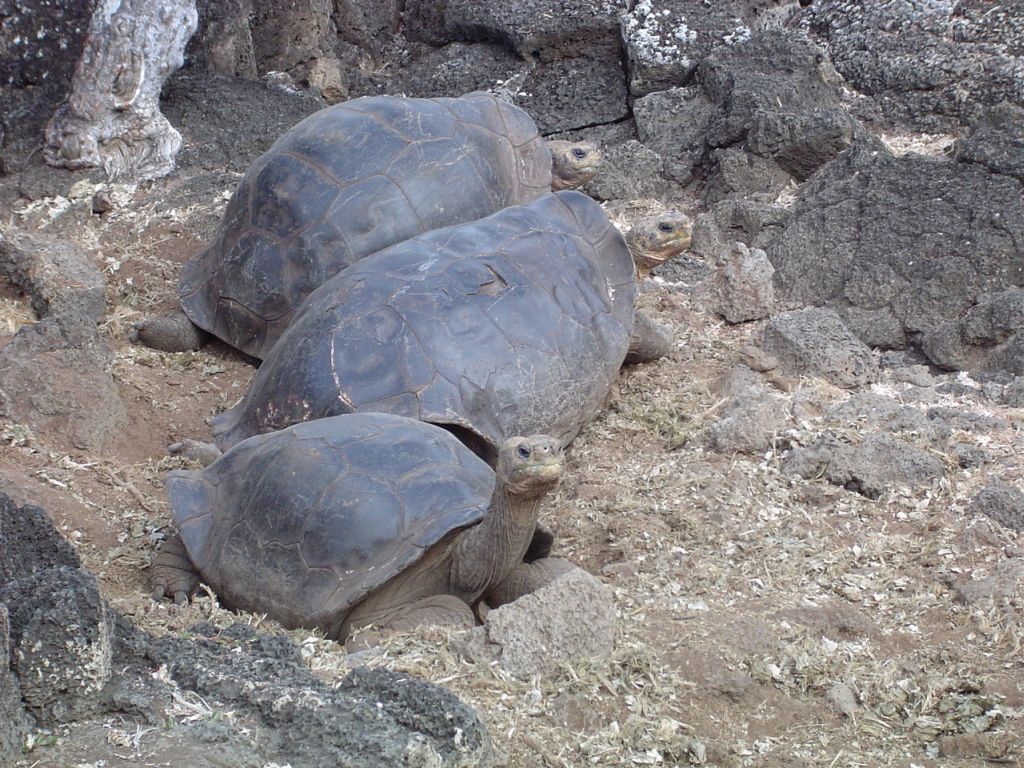
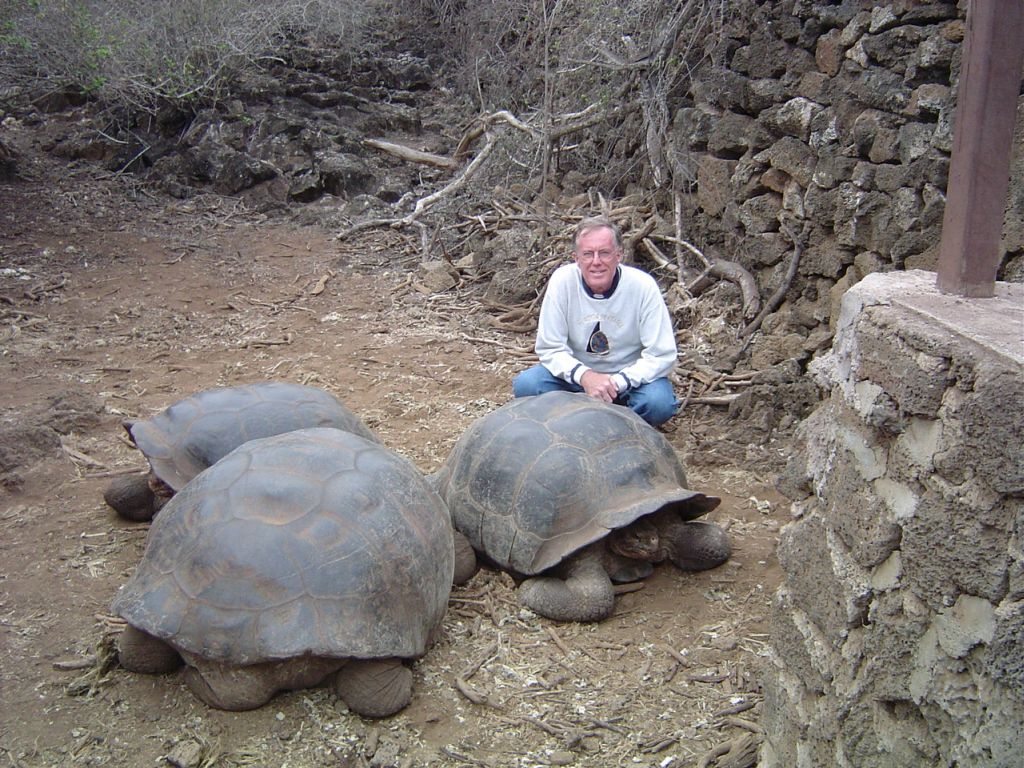
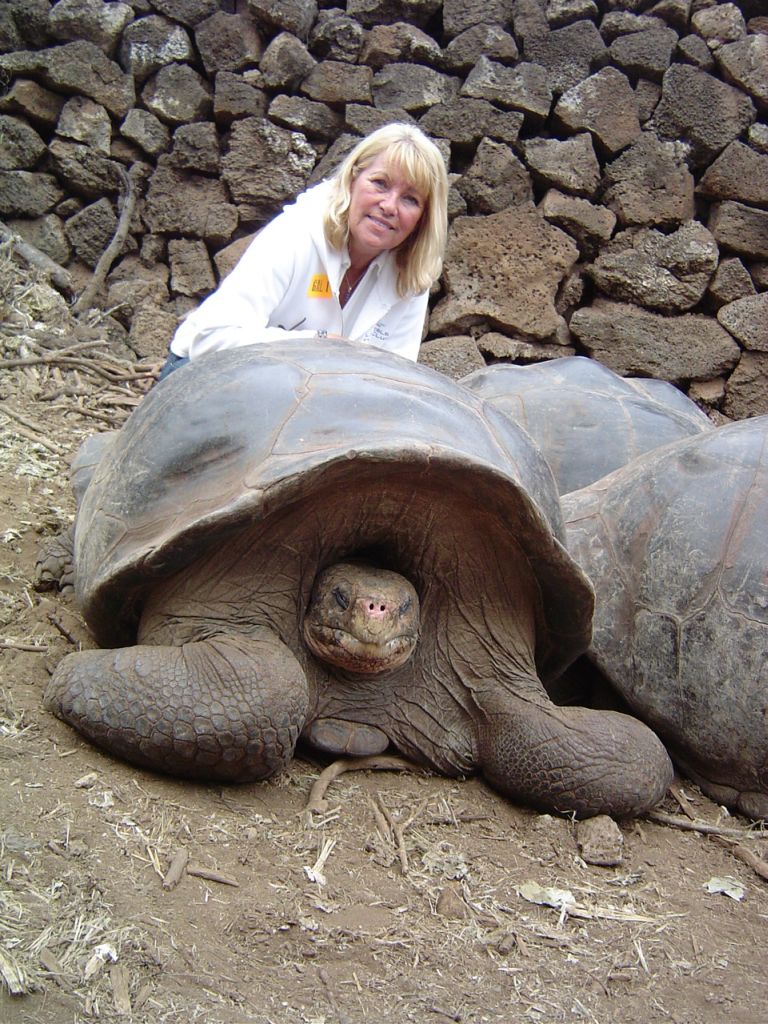
July 28th
The boat started toward Floriana Island at 1:30 AM. We had a smooth five-hour ride overnight, but engine noise prevented sound sleep. After breakfast, two groups of ten disembarked on the inflatable boats for a "wet landing" (requiring wading ashore) at Cormorant Bay, named for cormorants that don't live there. Sea lions do, however, by the ton, rolling around in the sand and bellowing at each other. We walked past a shallow lake, three times more salty than the ocean, to see a dozen flamingos poking around for fish. Ray Bay, another kilometer or so, had many rays lying in the sand along the shore. They swan to deeper water as we shuffled along the water's edge. One of our group spotted a penguin swimming in the surf. I missed it, along with a chance to see flamingos and penguins on the same island.
The guides made sure that everyone understood that nothing was to be taken, nothing was to be left, and that the animals weren't to be approached closer than one meter. The animals weren't informed, however. The younger sea-lions often approached the tourists who sat quietly on the beach. The older ones have the tourist thing figured out. In spite of the fact that ten ships anchored near us, each carrying 20 visitors, there was no sign, other than footprints in the sand, that 200 people had been ashore that day. Trails are marked and leaving them is prohibited.
After lunch and a siesta, we disembarked again at Post Office Bay. A small wood barrel there was used as a communications center for the South Pacific in years past. Now it serves as a place to drop off a post-card addressed to a friend, hoping someone near them will take it, put a stamp on it and drop it in the mail.
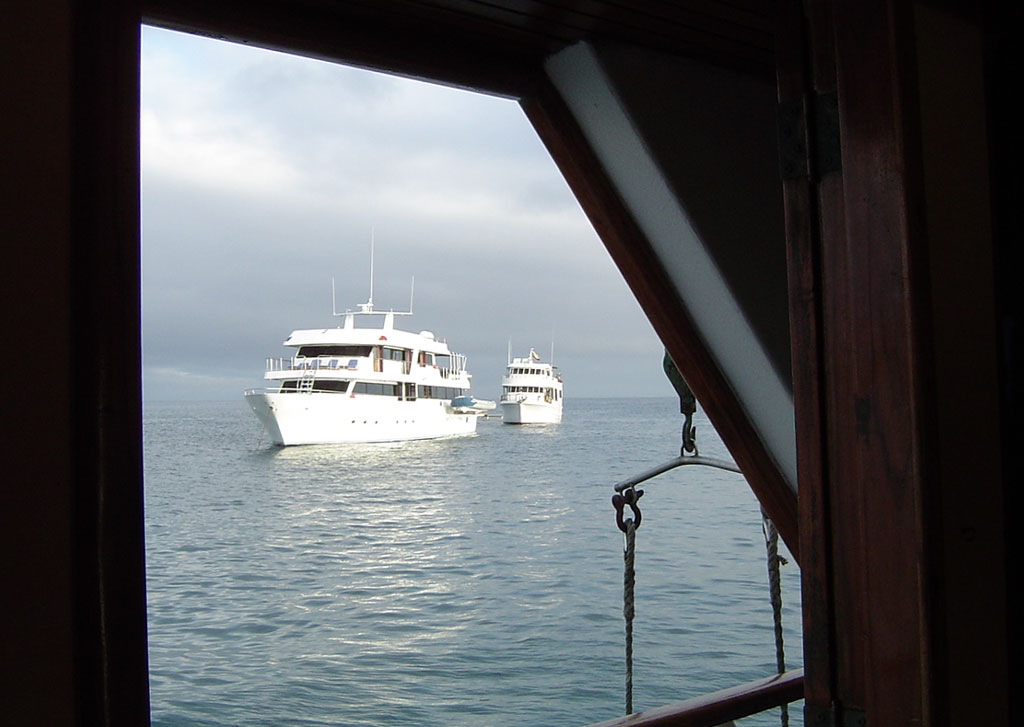
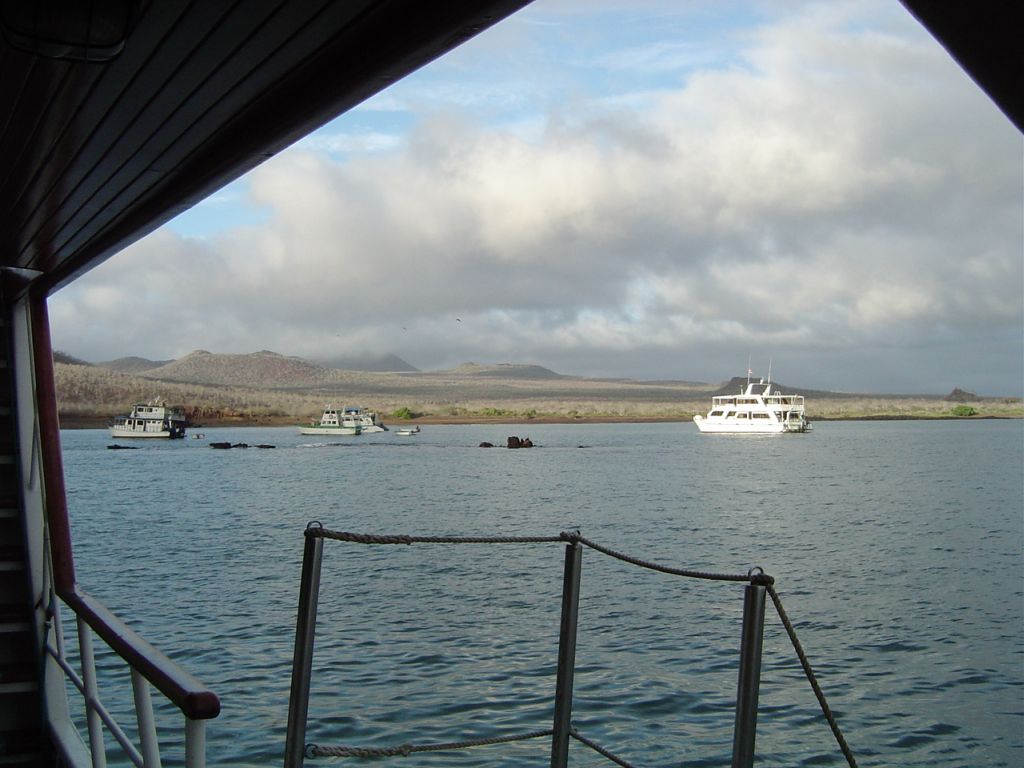
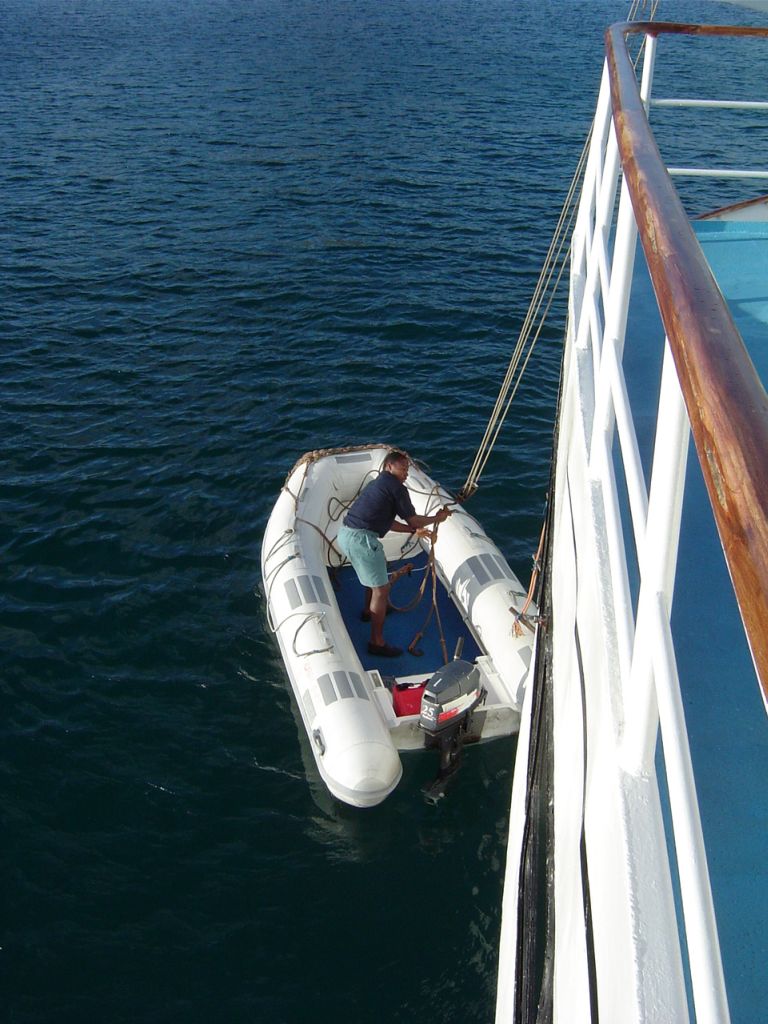
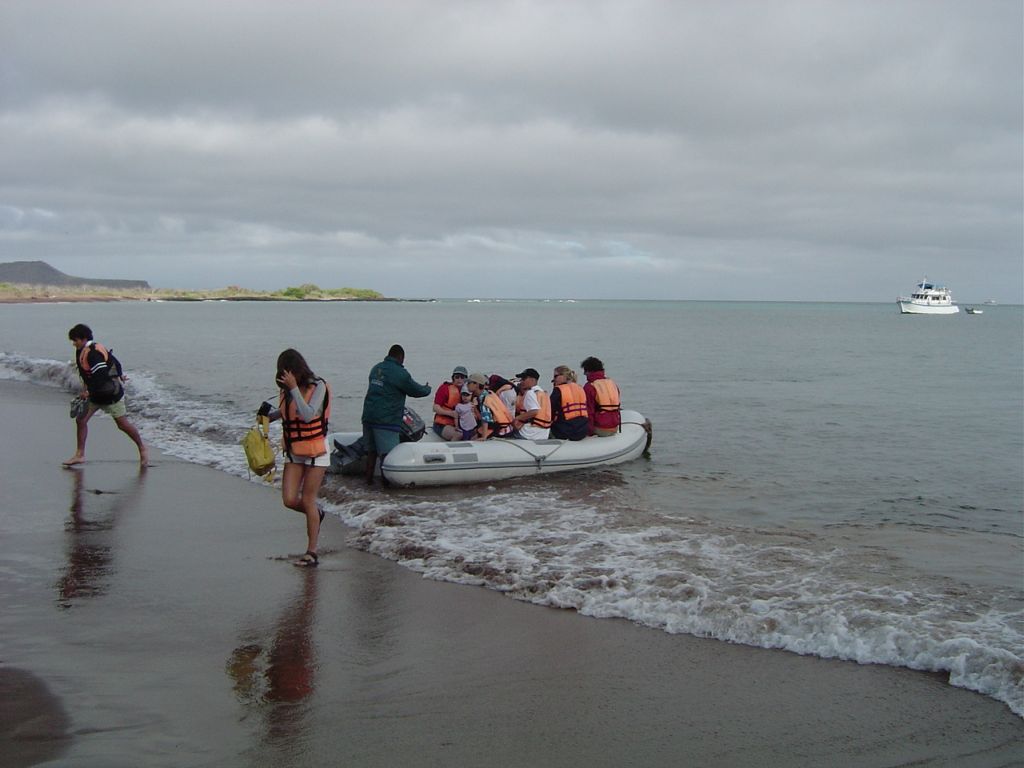
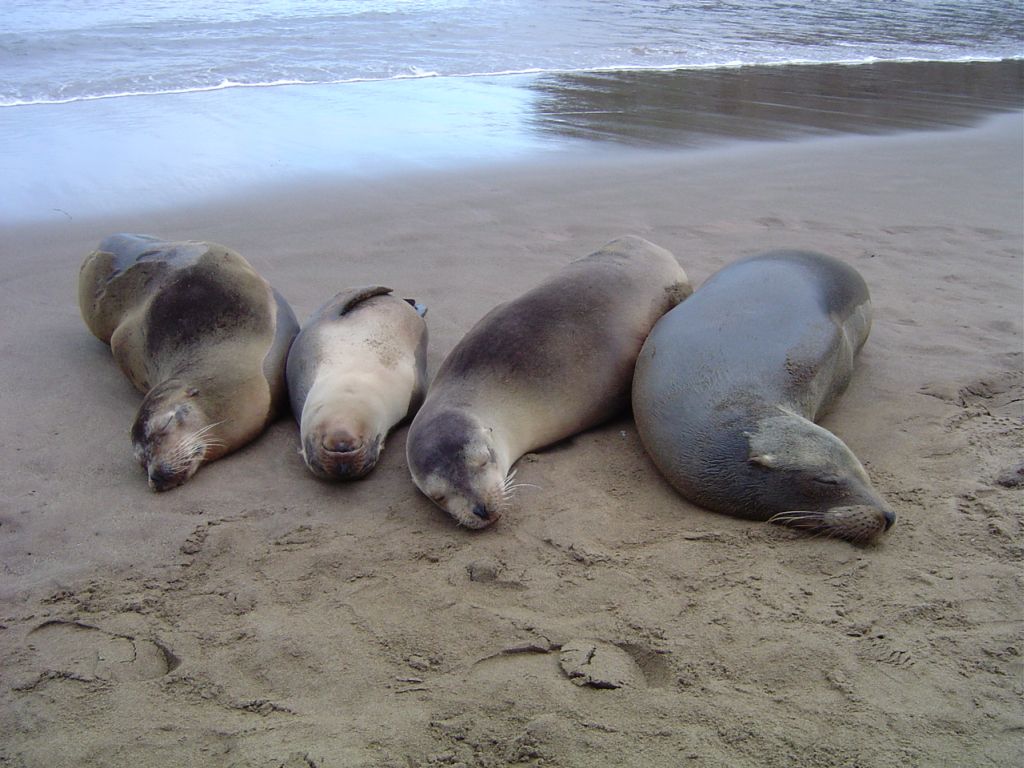
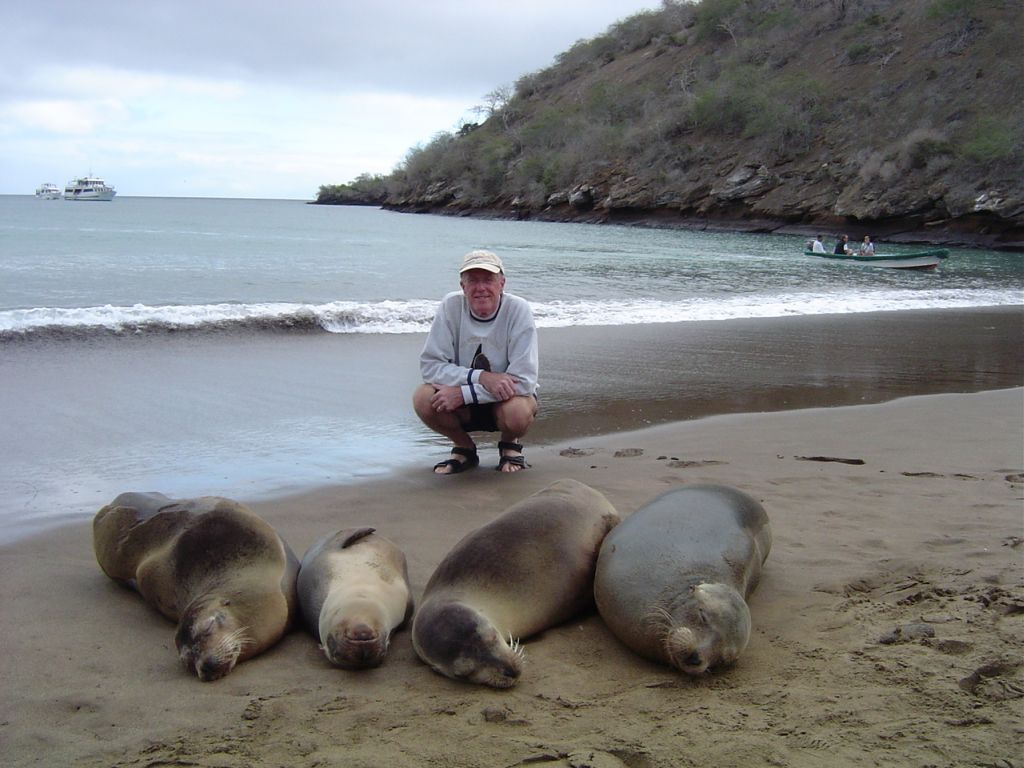
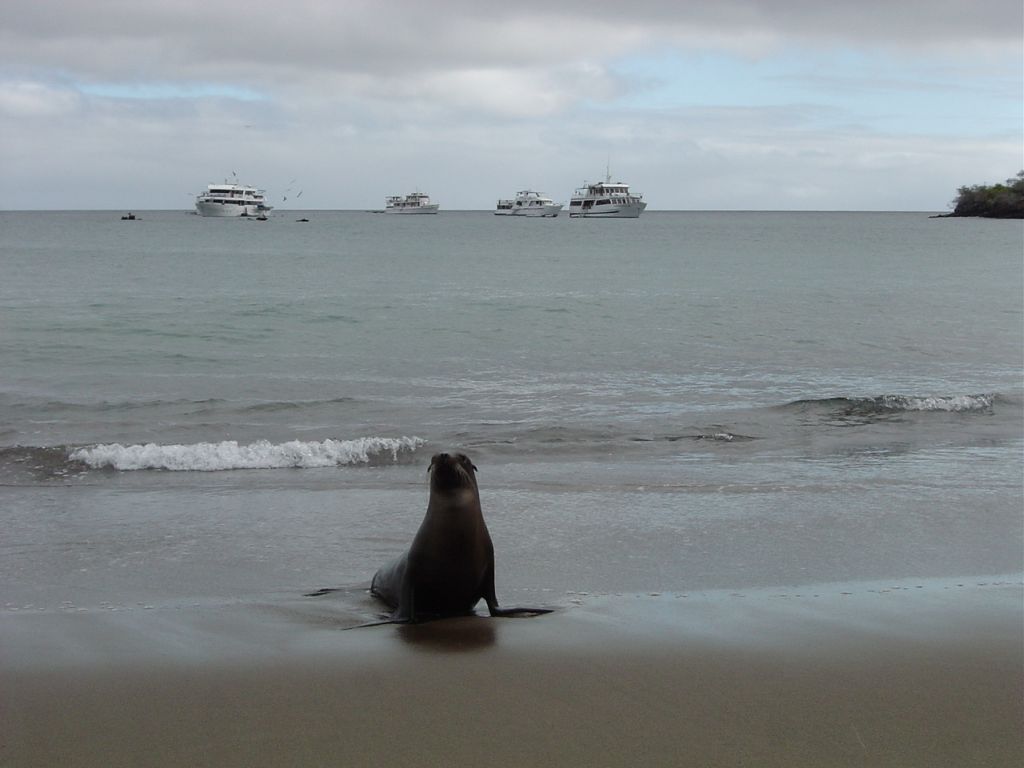
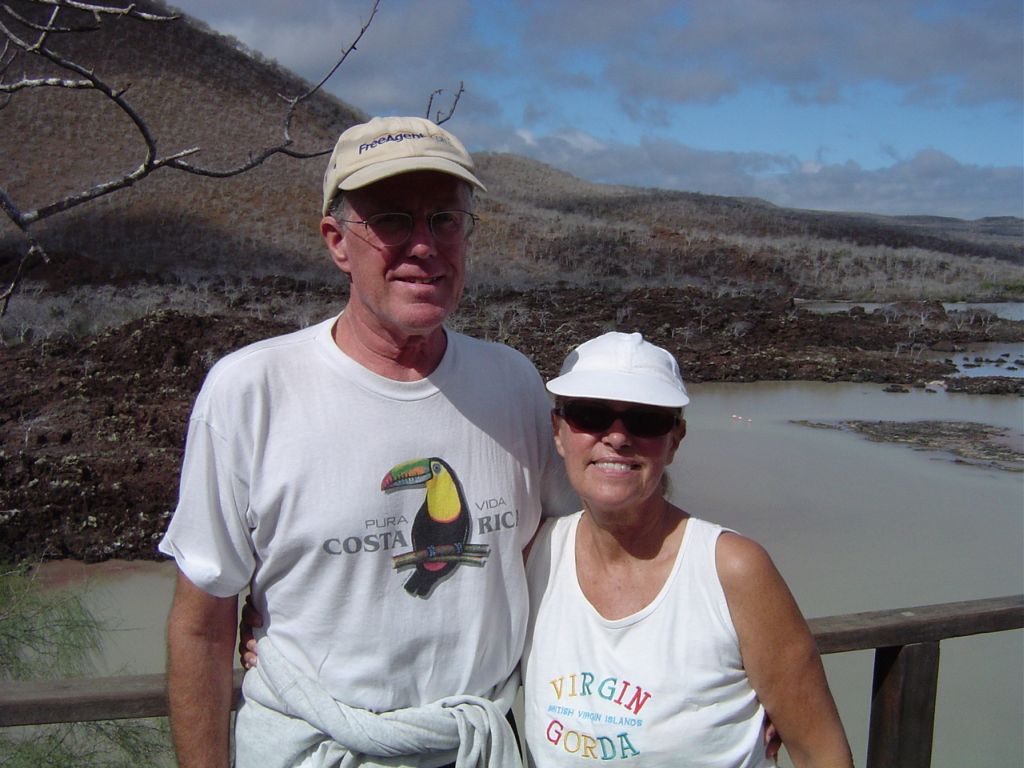
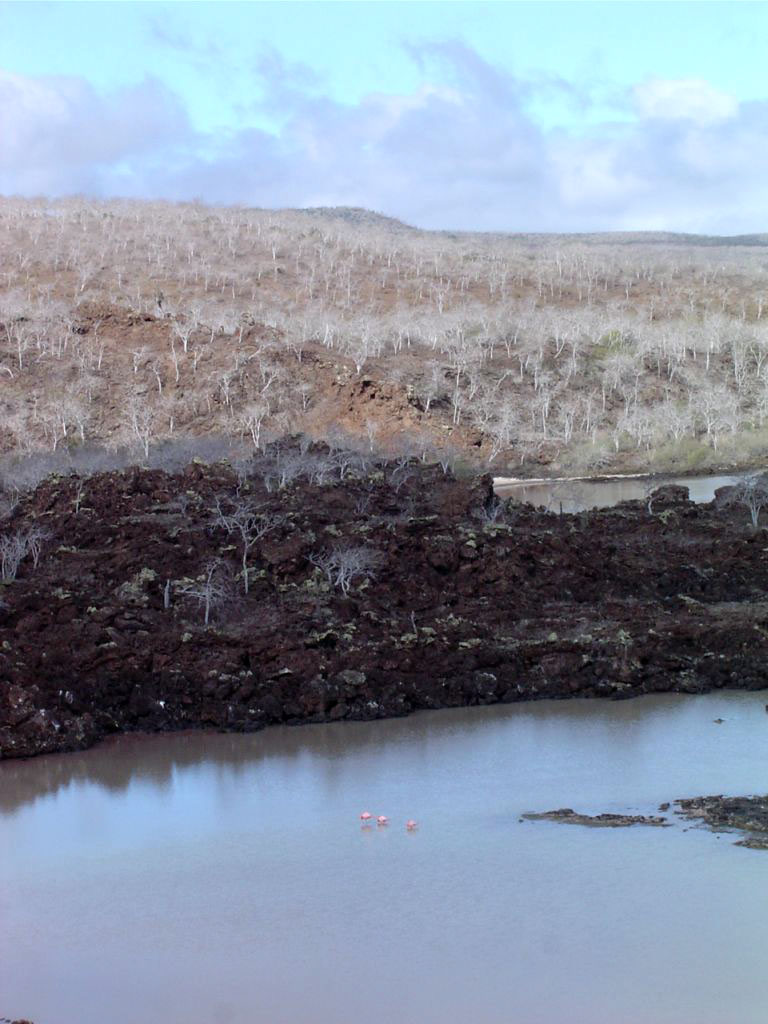
Flamingos come in only one size - small
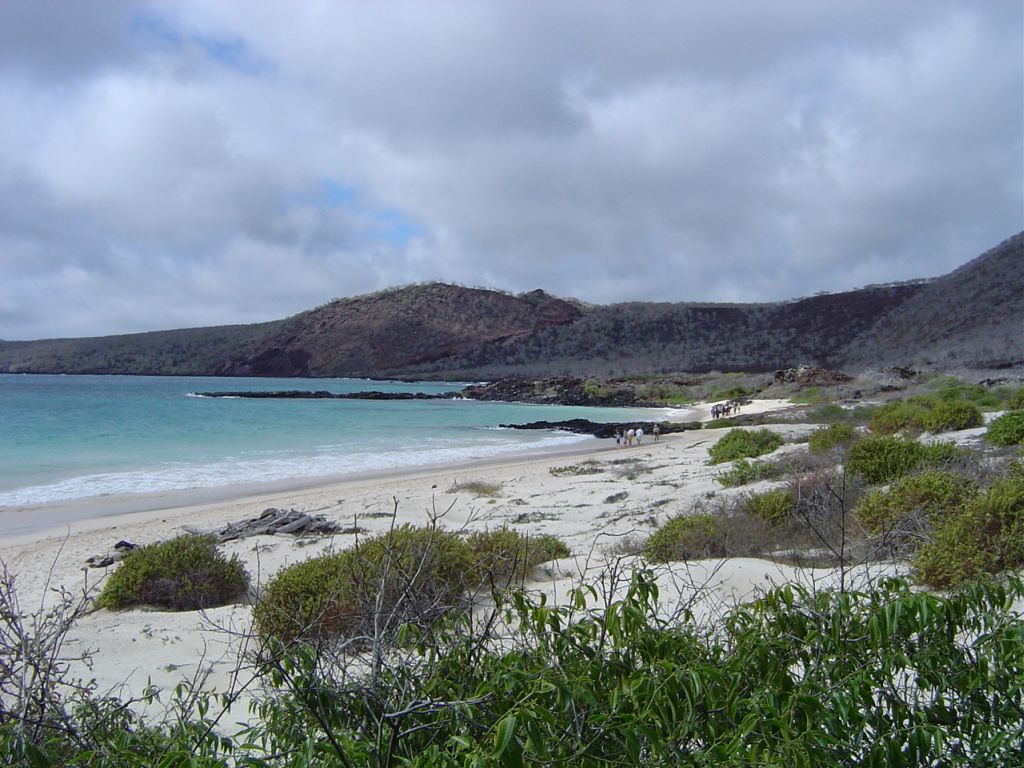
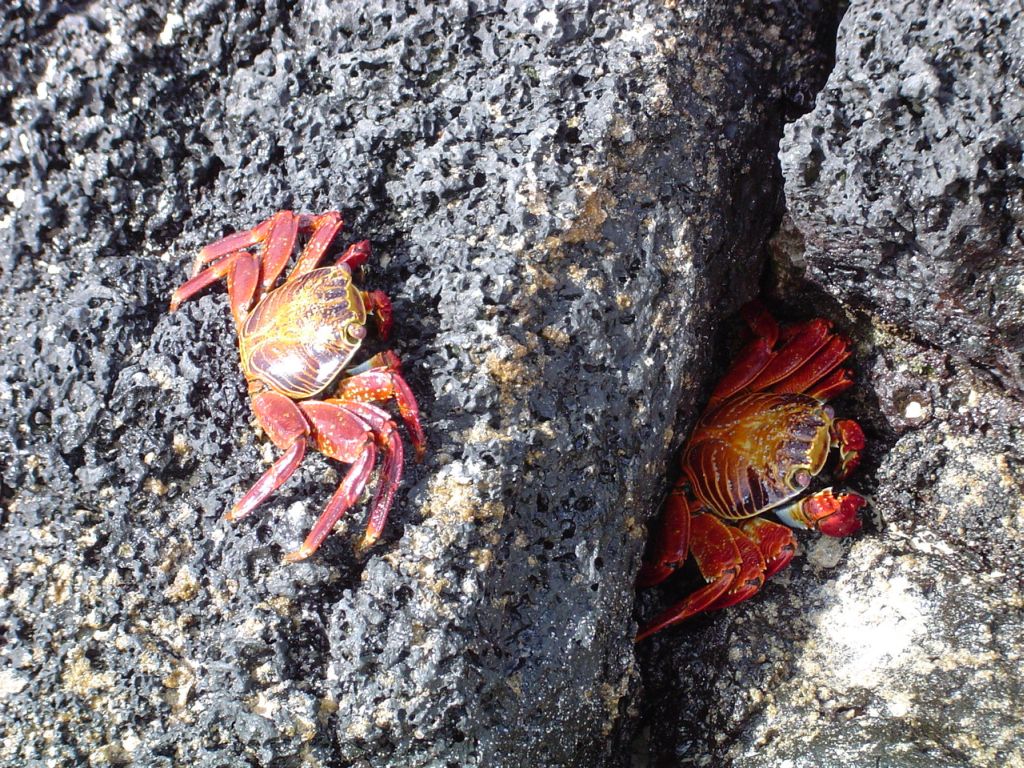
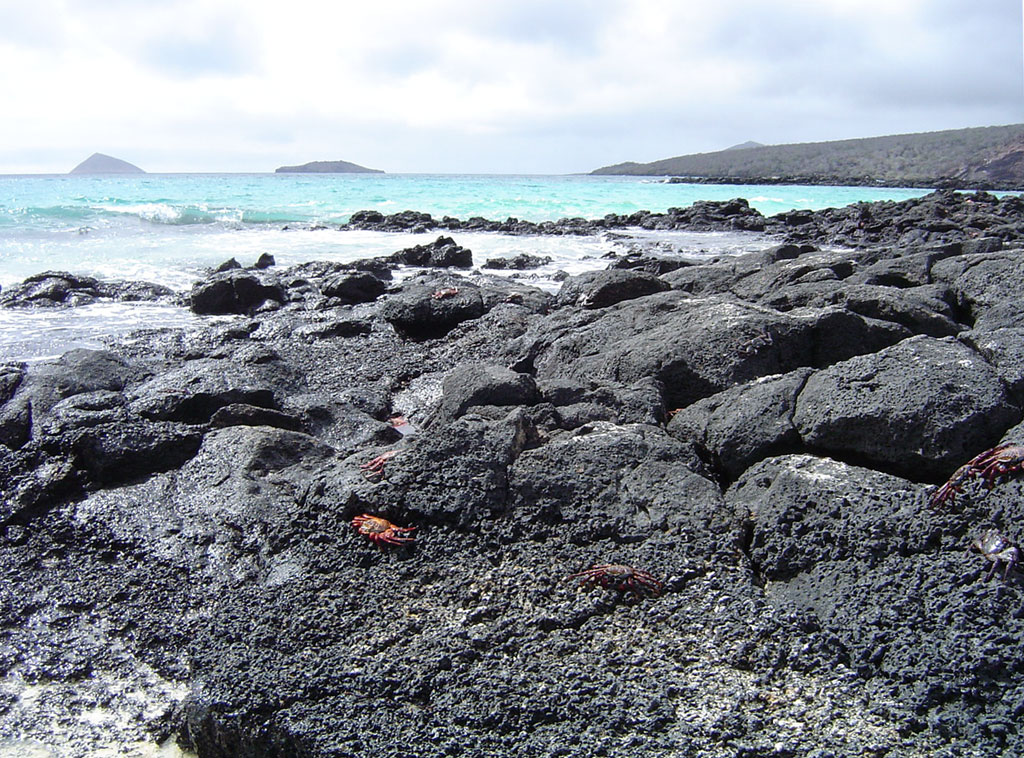
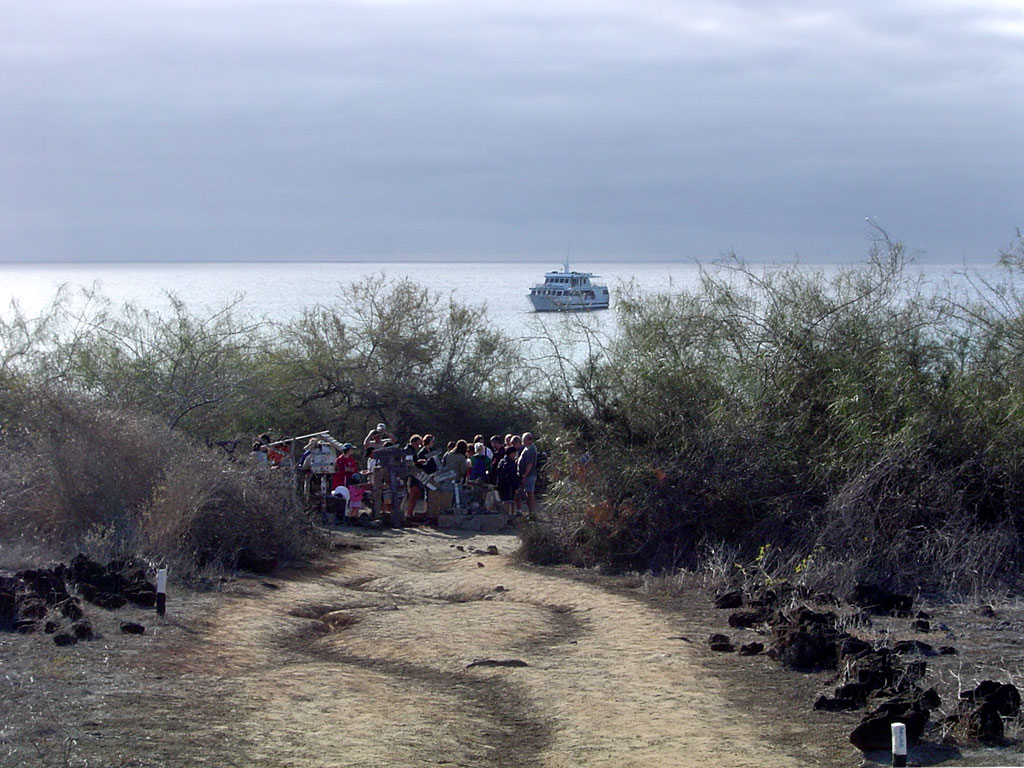
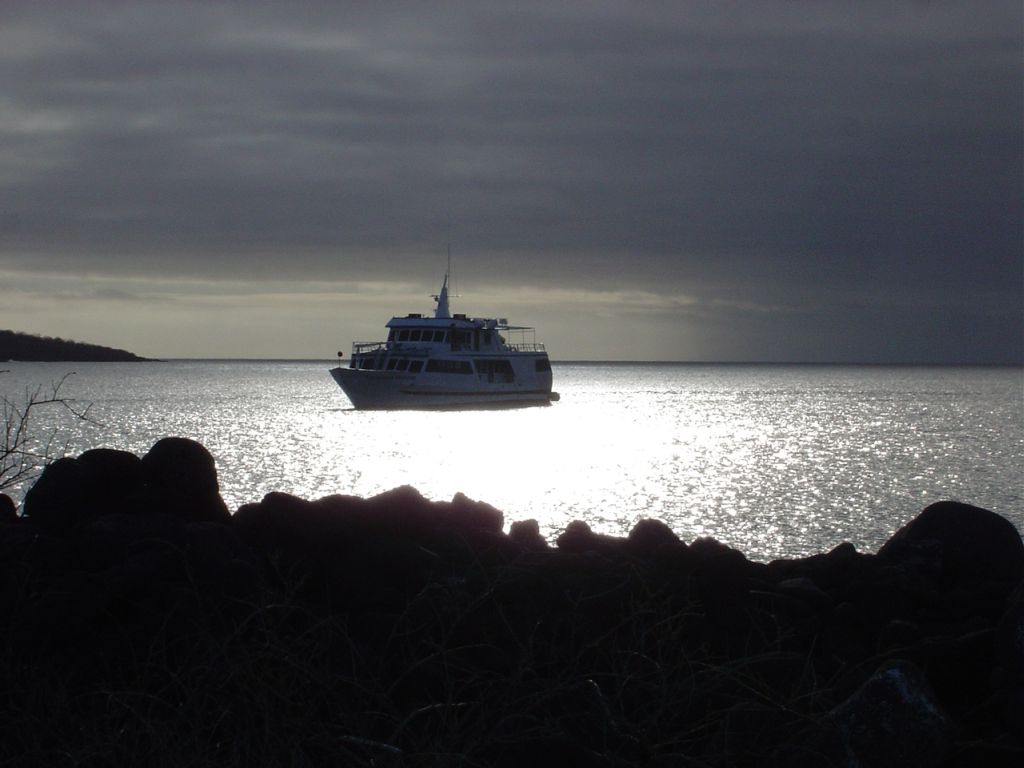
July 29th
A rougher overnight passage to Espanola Island started at 7:00 PM, just after dinner, and ran until dawn.
Gardner Bay, featured the marine iguana. Curious little chaps, they followed us along the trail.
Our first chance at SCUBA diving blew up on us before we left the dock; all the available equipment had been spoken for. The second opportunity came and went as the crew from a boat anchored near ours couldn't produce the spare tanks they thought they had. I gave snorkeling a try and found the visibility to be only fair around a small outcrop of rocks about 100 yards offshore. The advertised white-tipped reef sharks didn't materialize.
Our first "dry landing" at Puerto Suarez led us to Albatross International Airport, nesting and flight area for hundreds of the birds. They lay their single half-pound eggs on open ground without apparent regard for shelter from other birds or animals while the eggs are incubated. A dry landing is followed by a shoe rinse as the boat is boarded, to keep organisms from one island from traveling to the next.
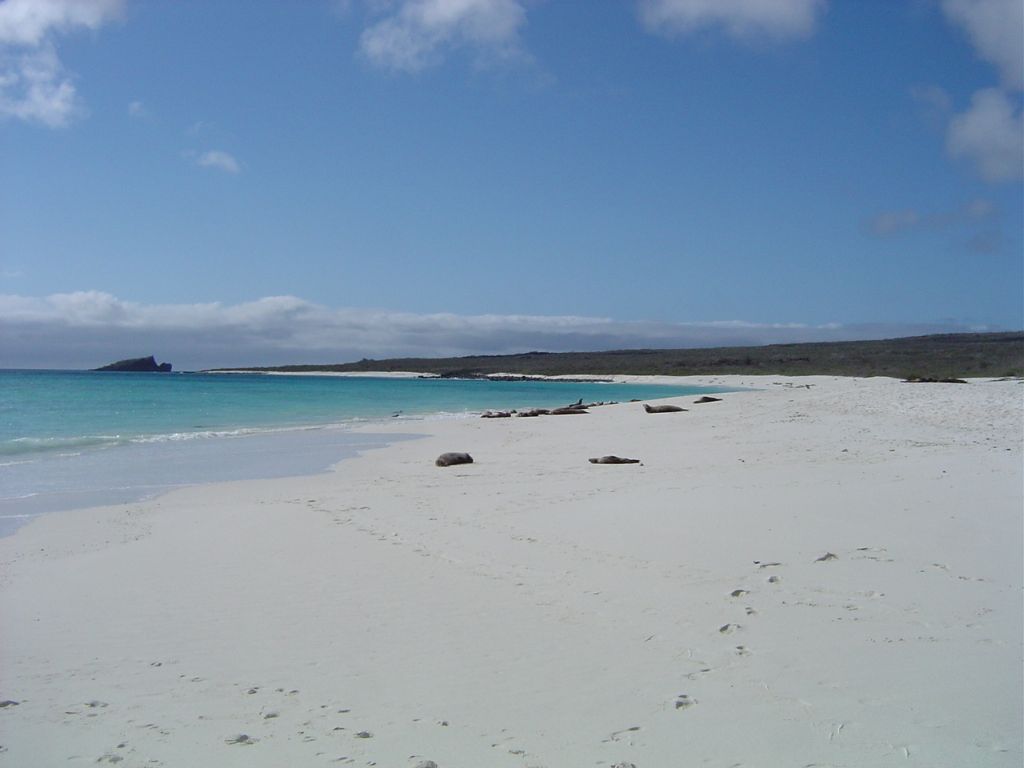
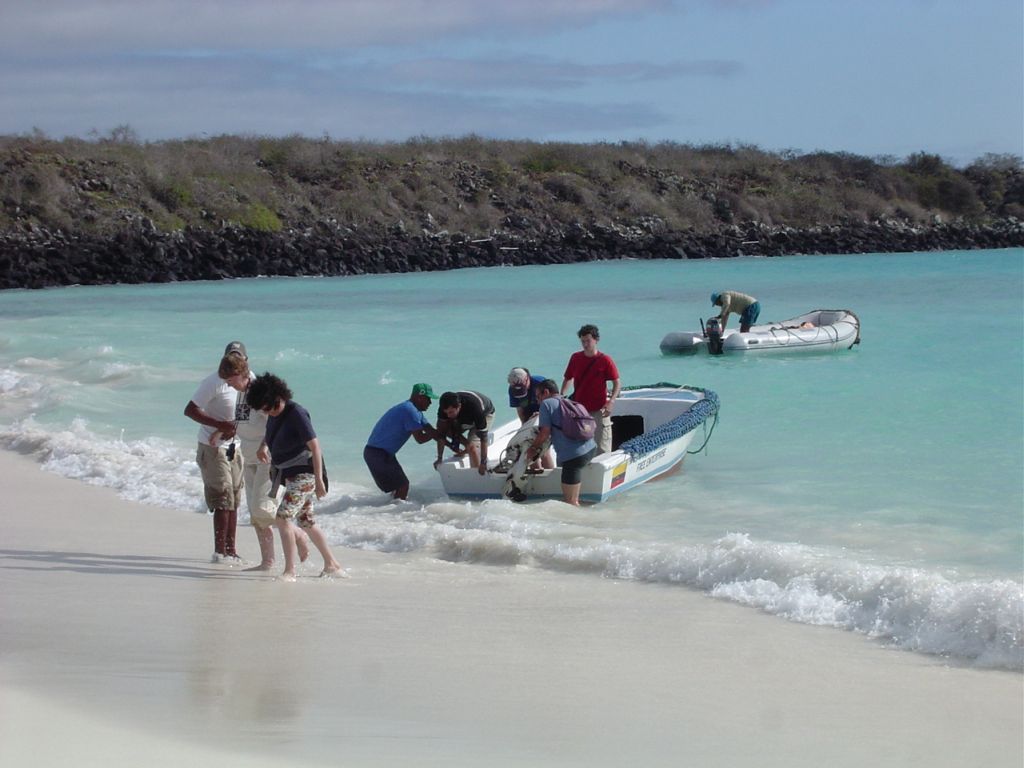
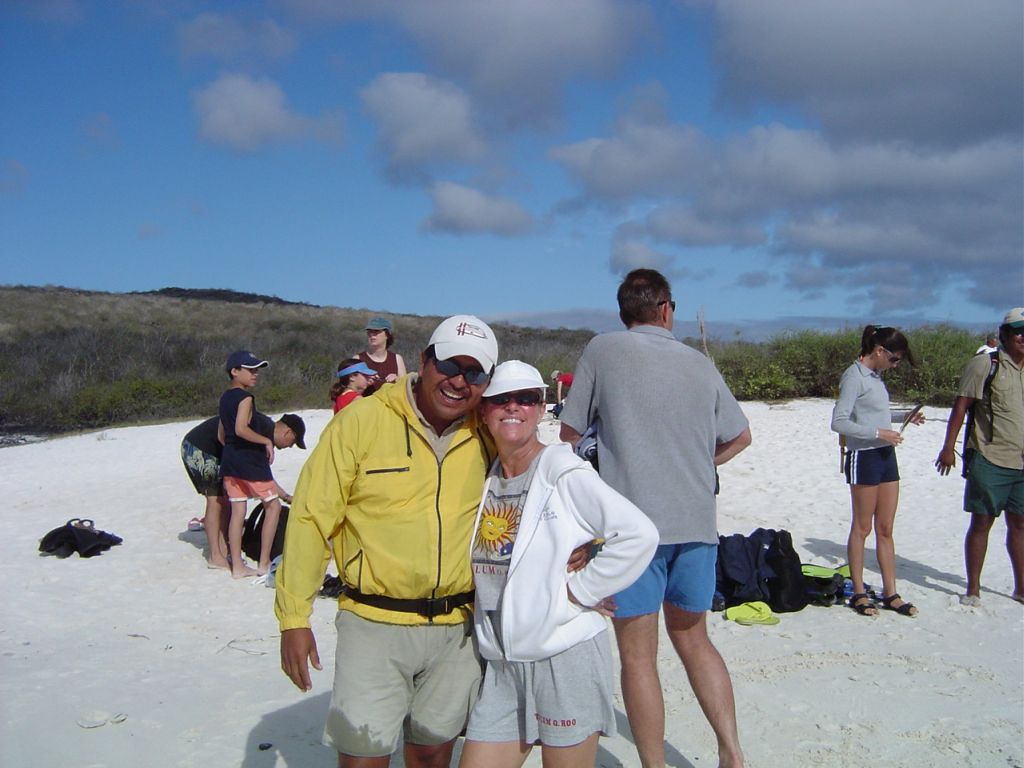
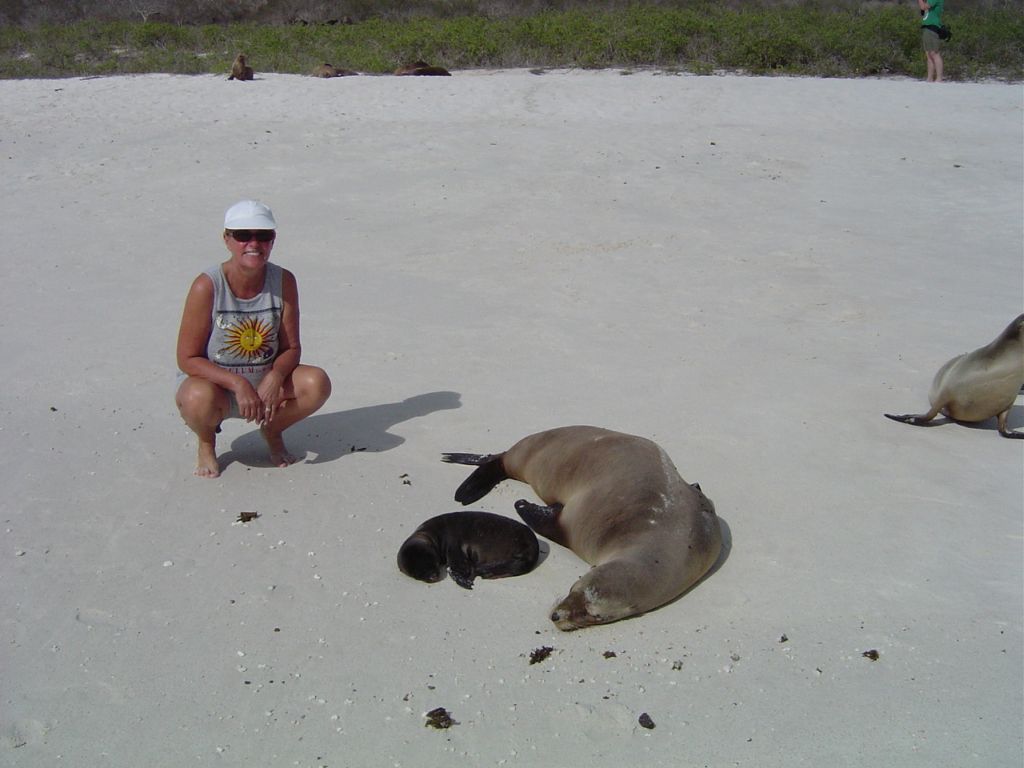
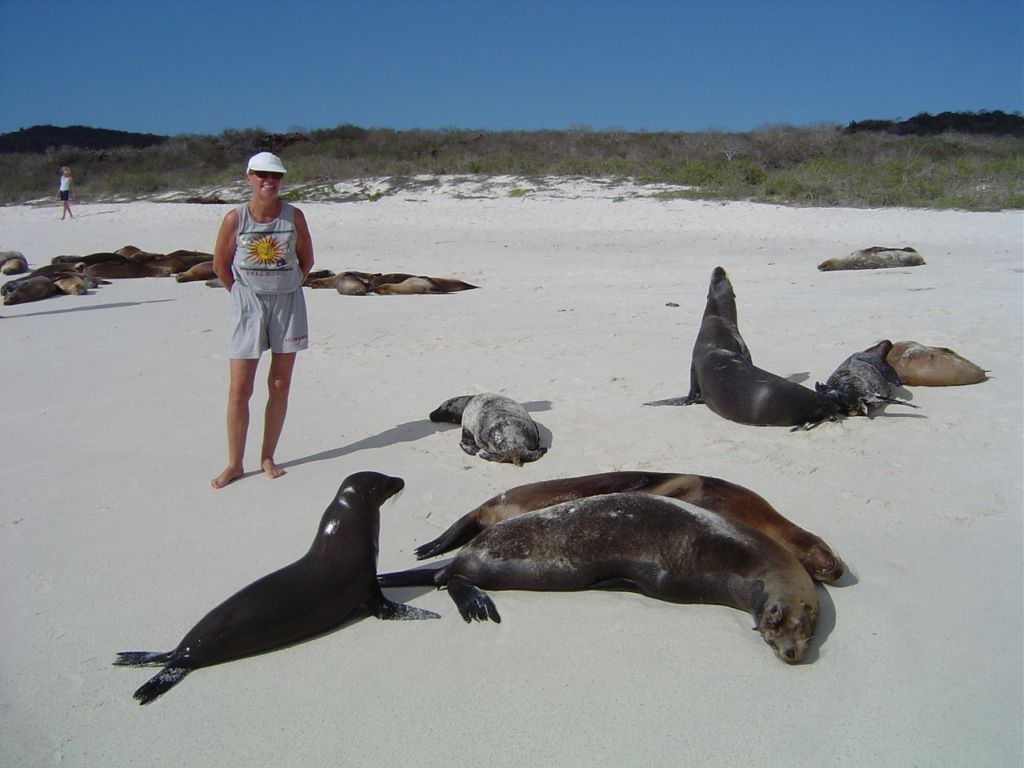
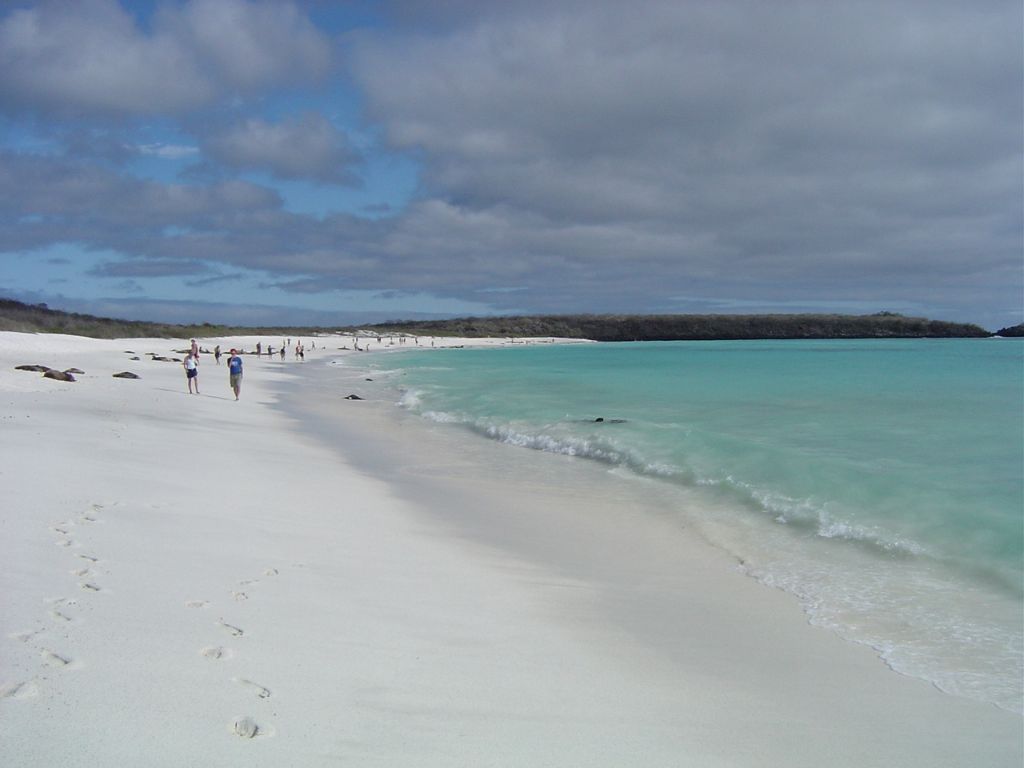
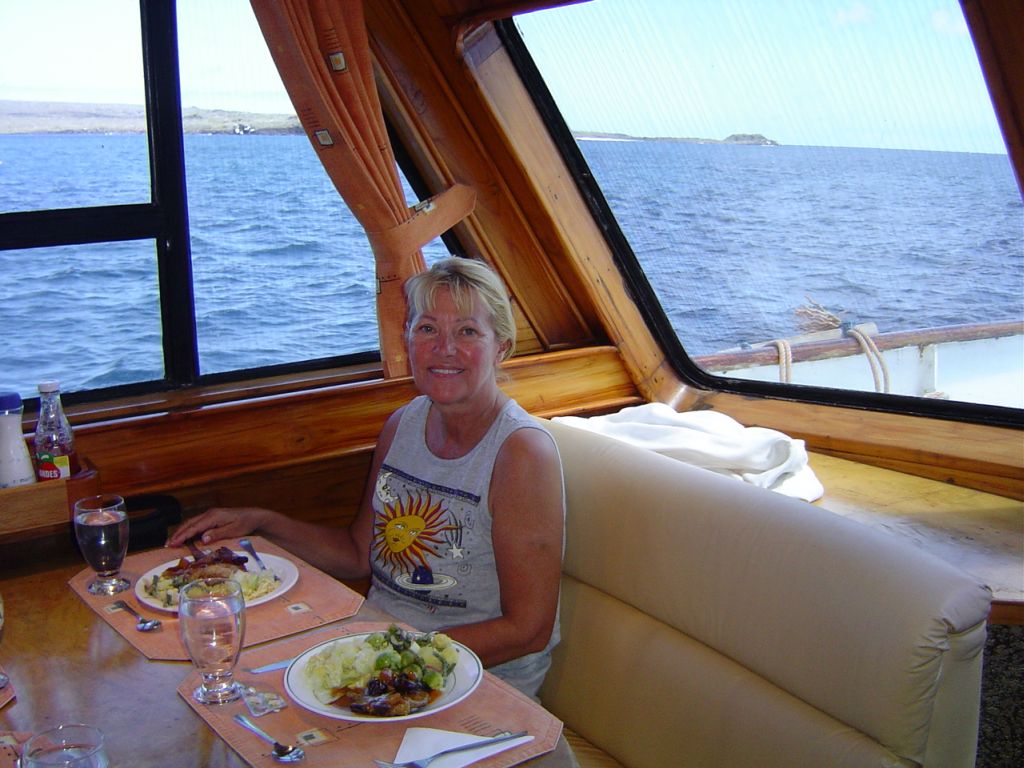
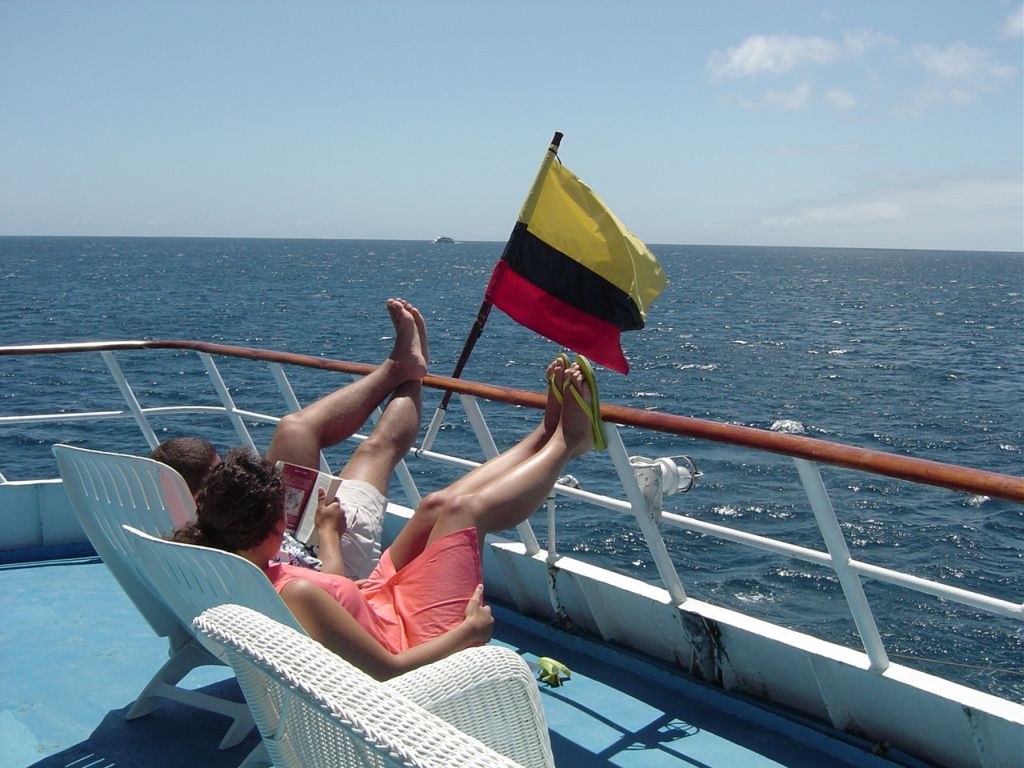
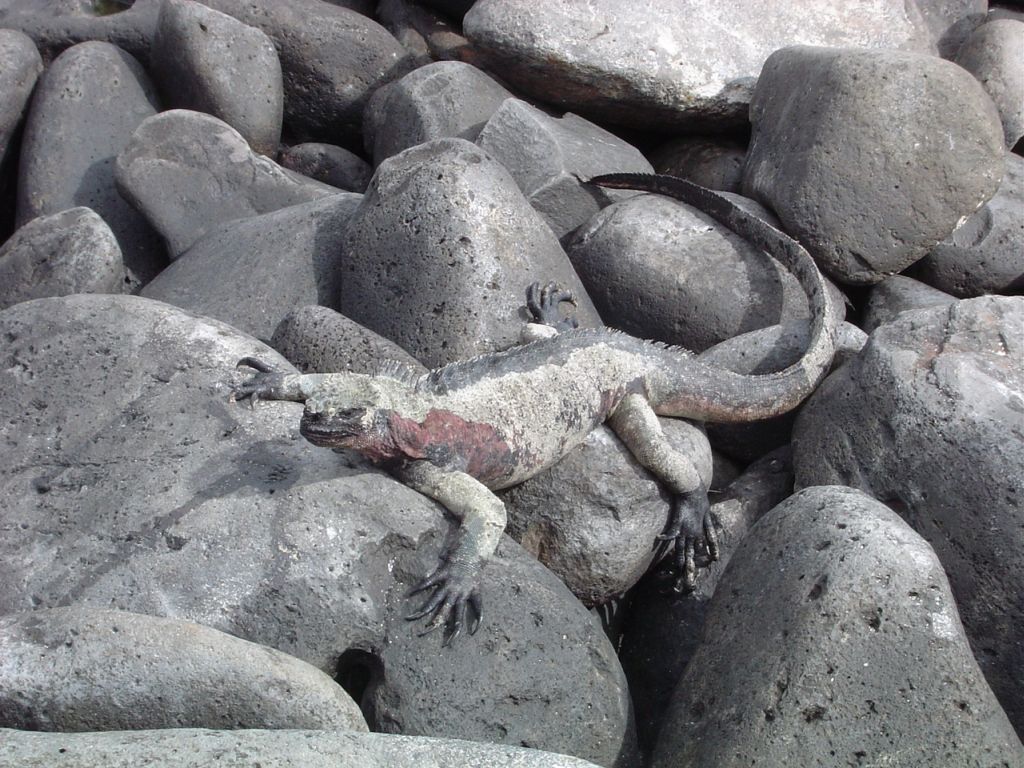
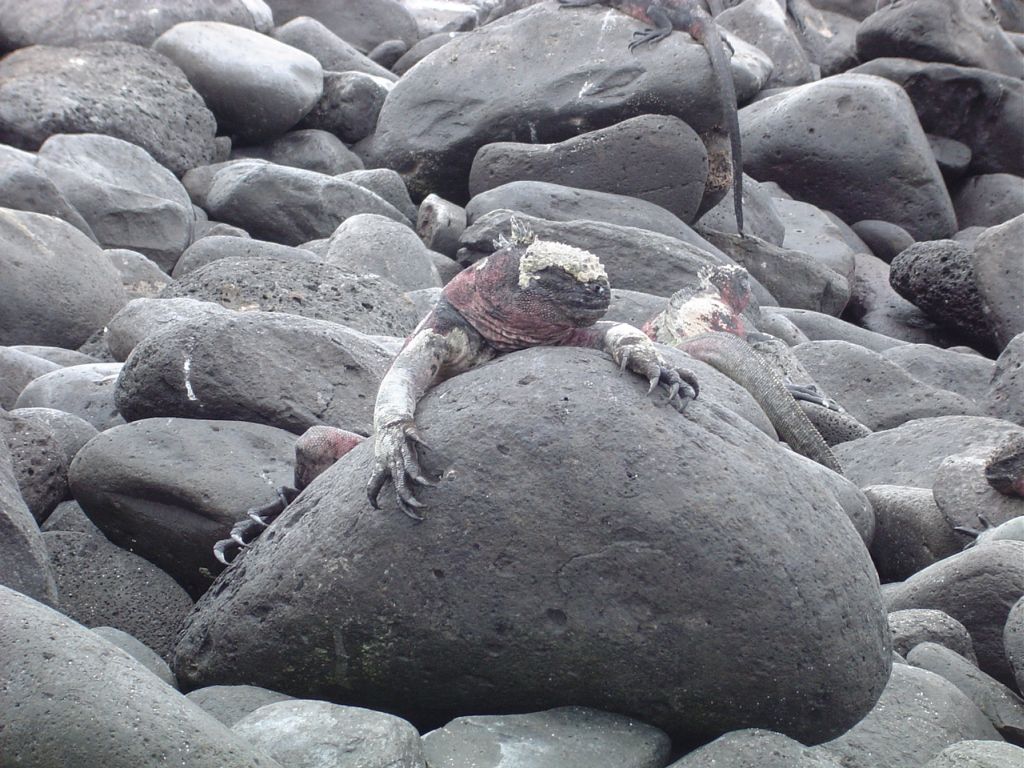
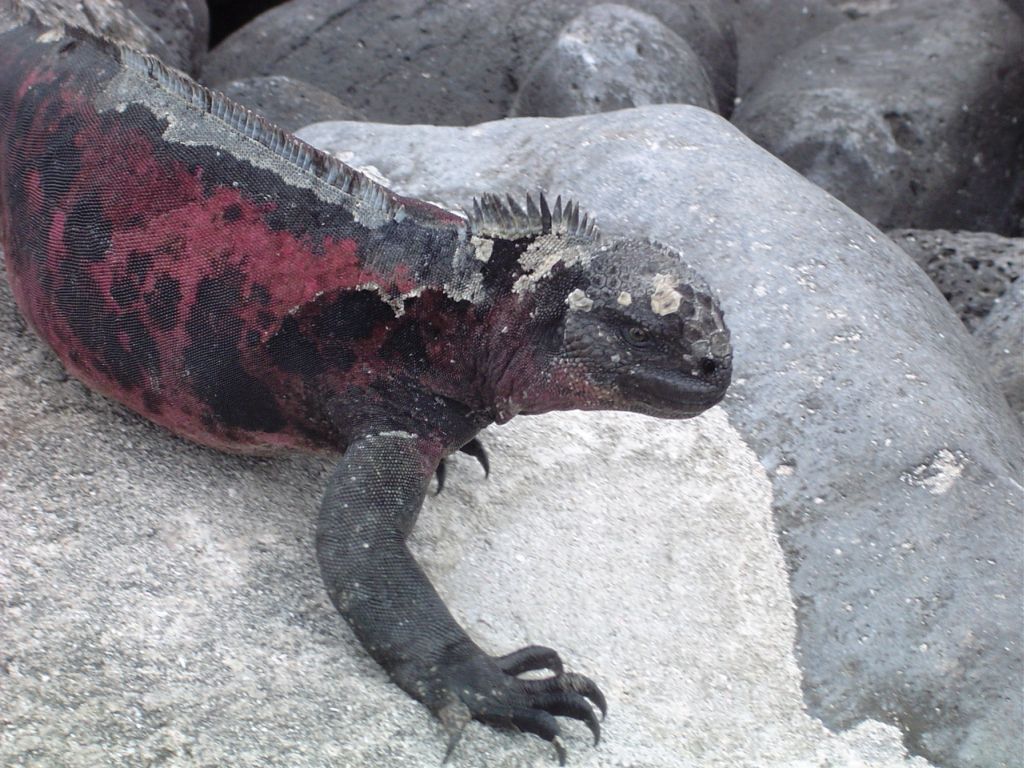
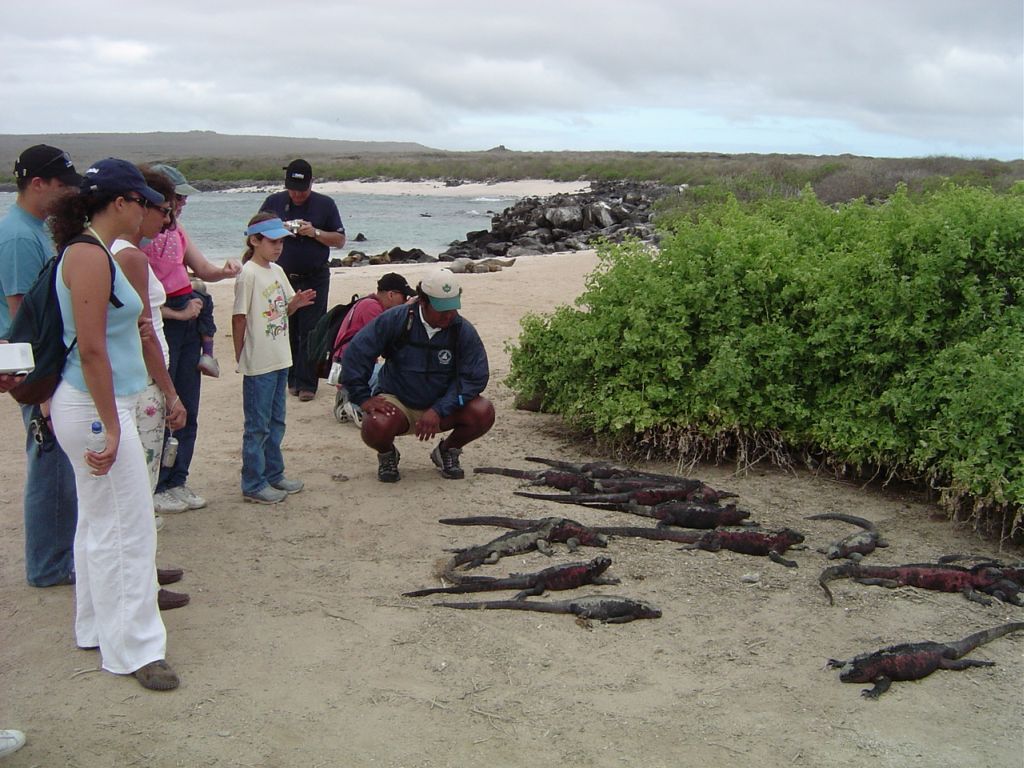
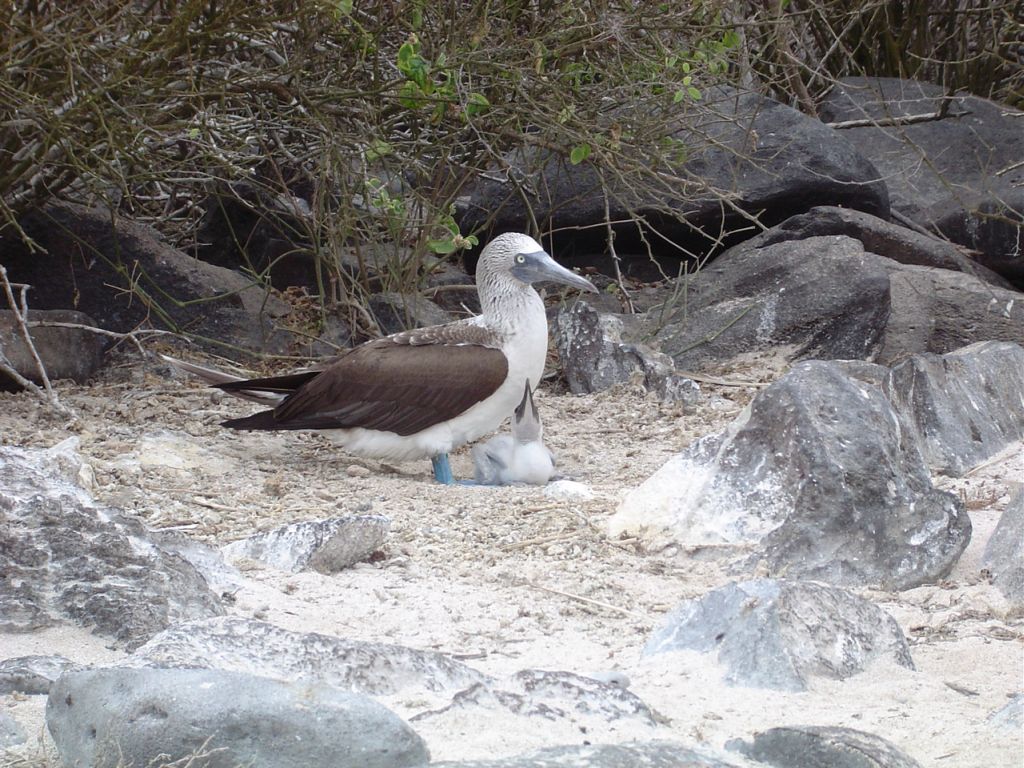
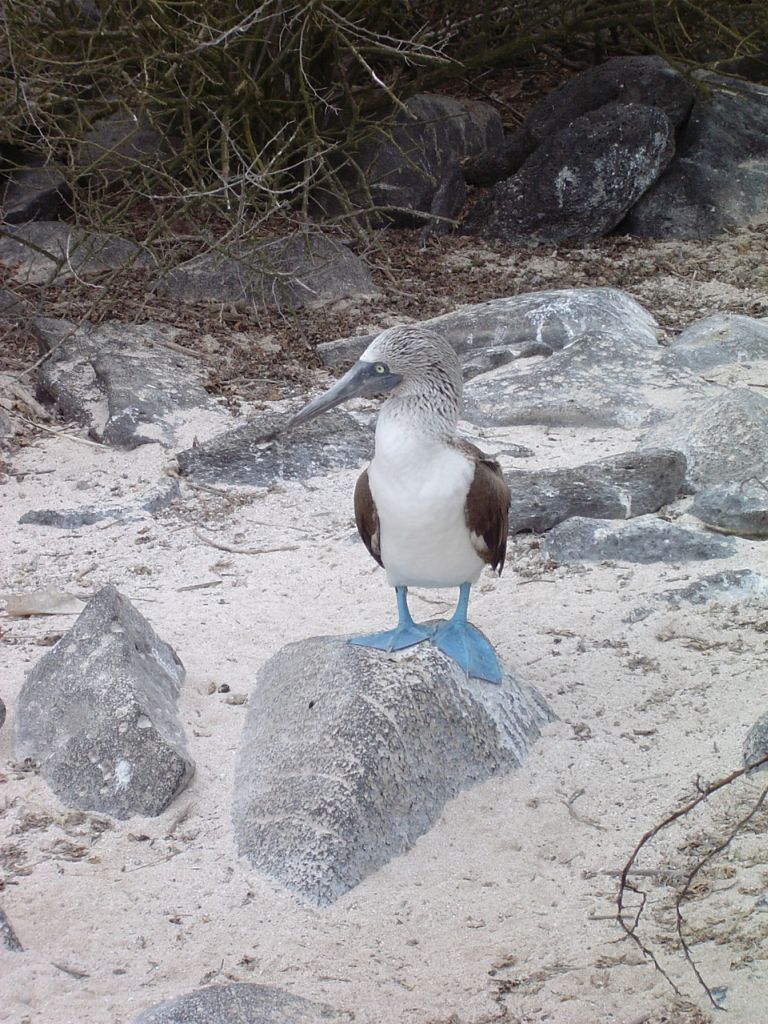
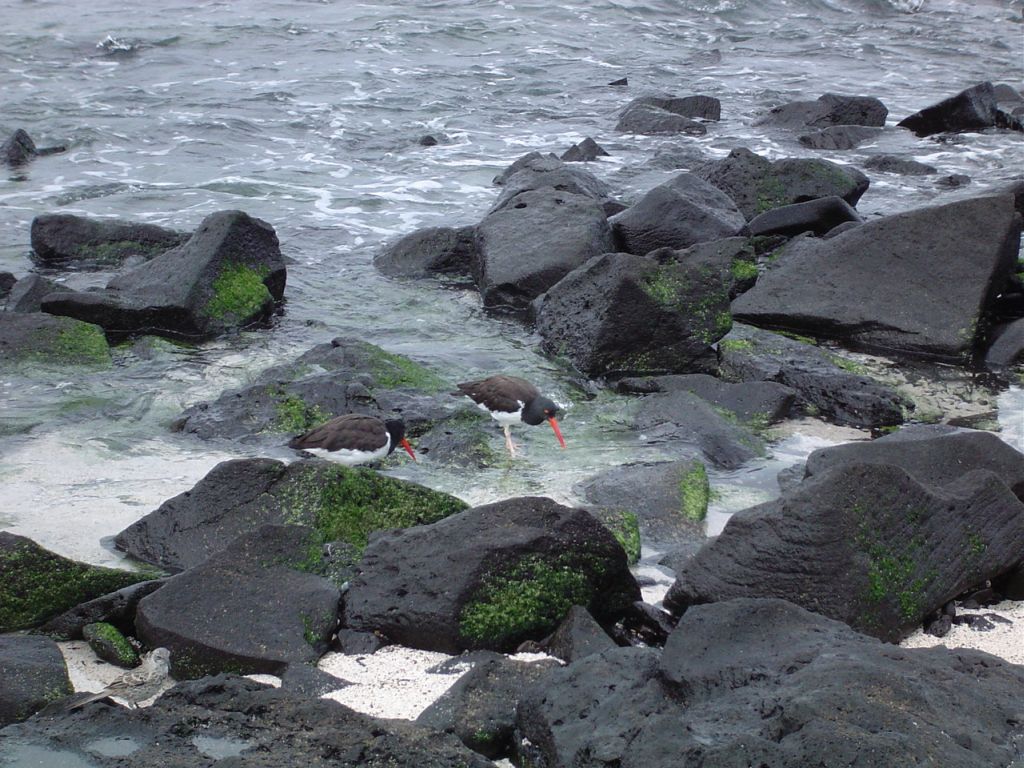
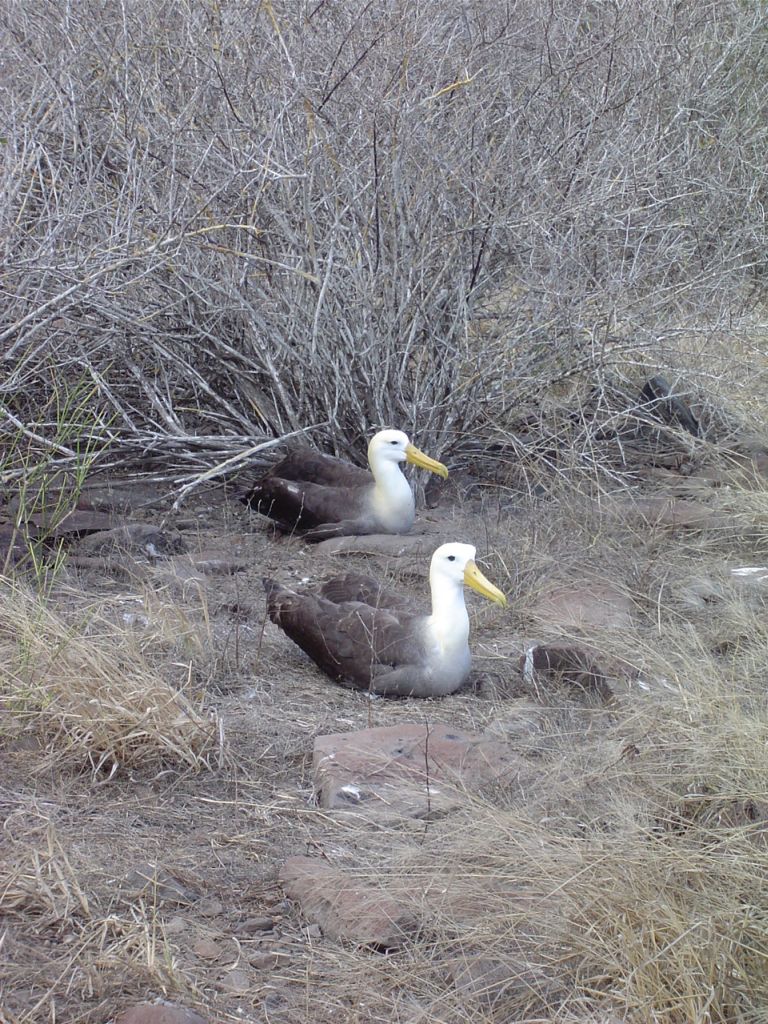
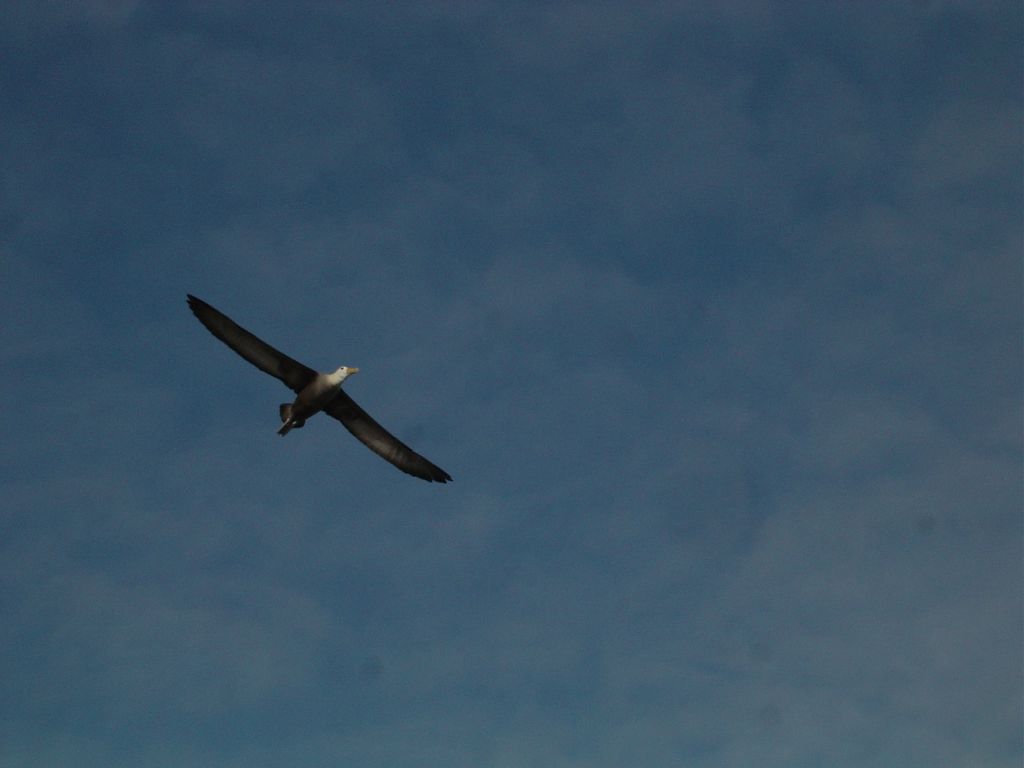
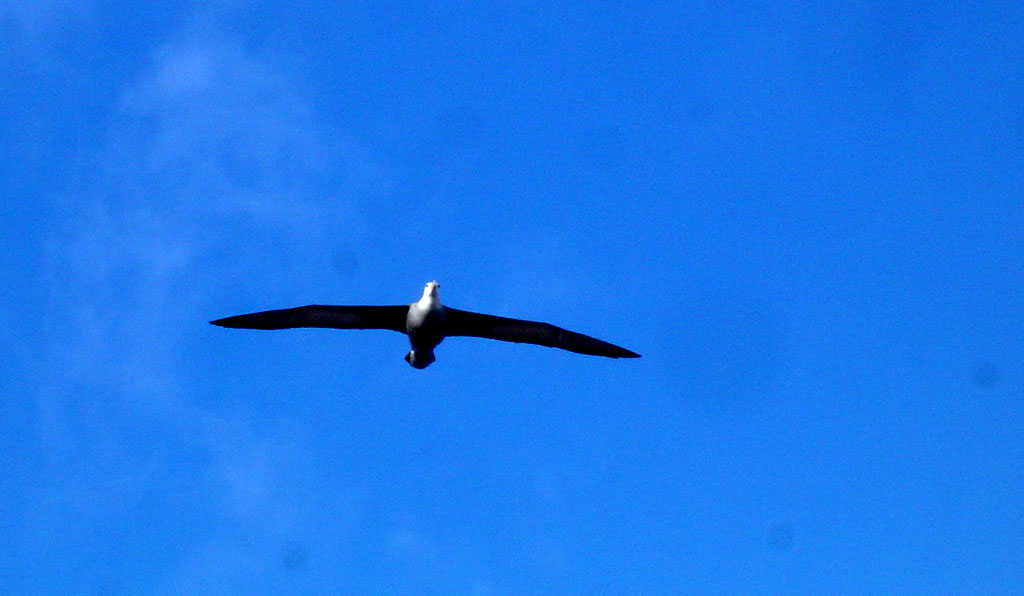
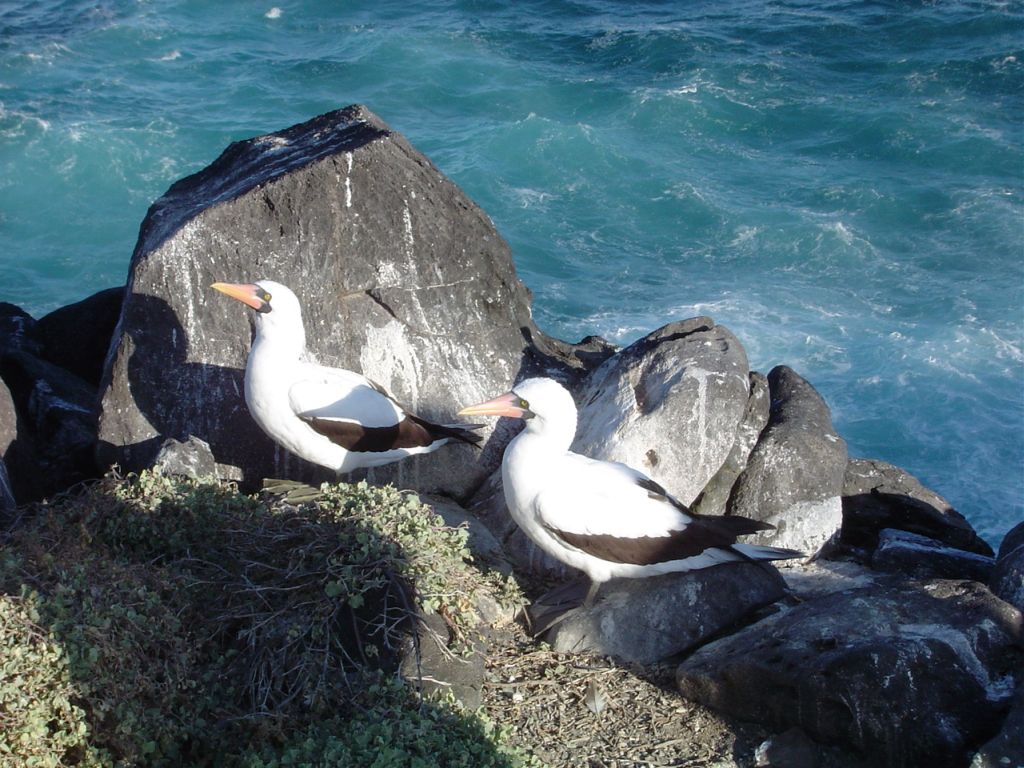
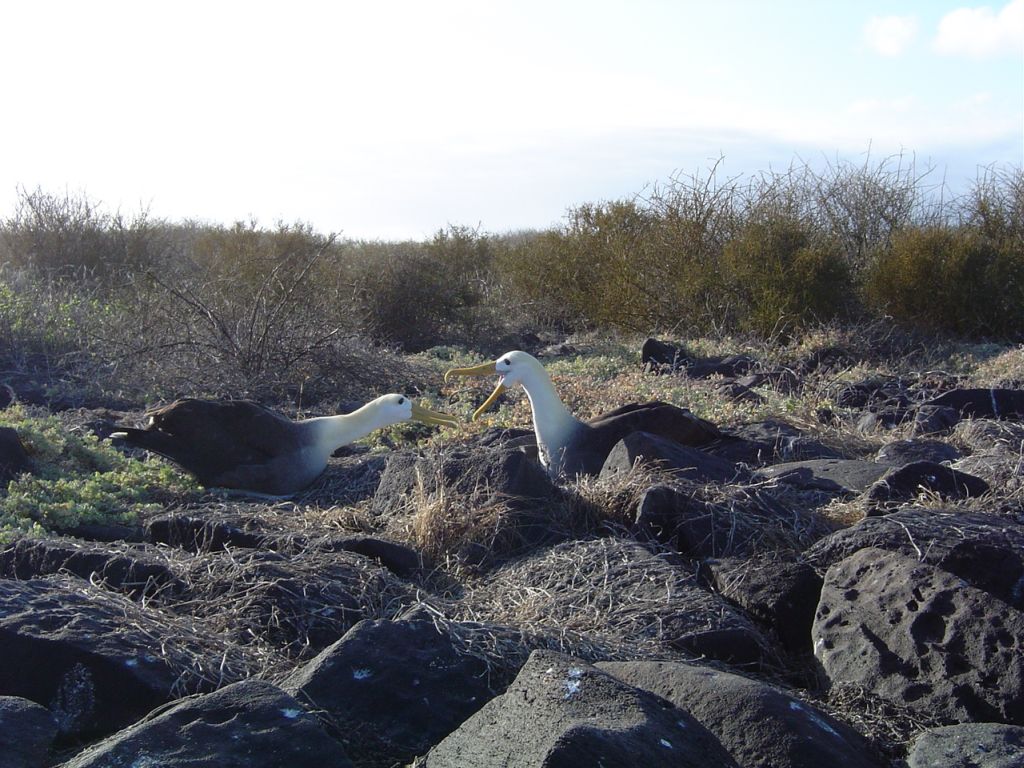
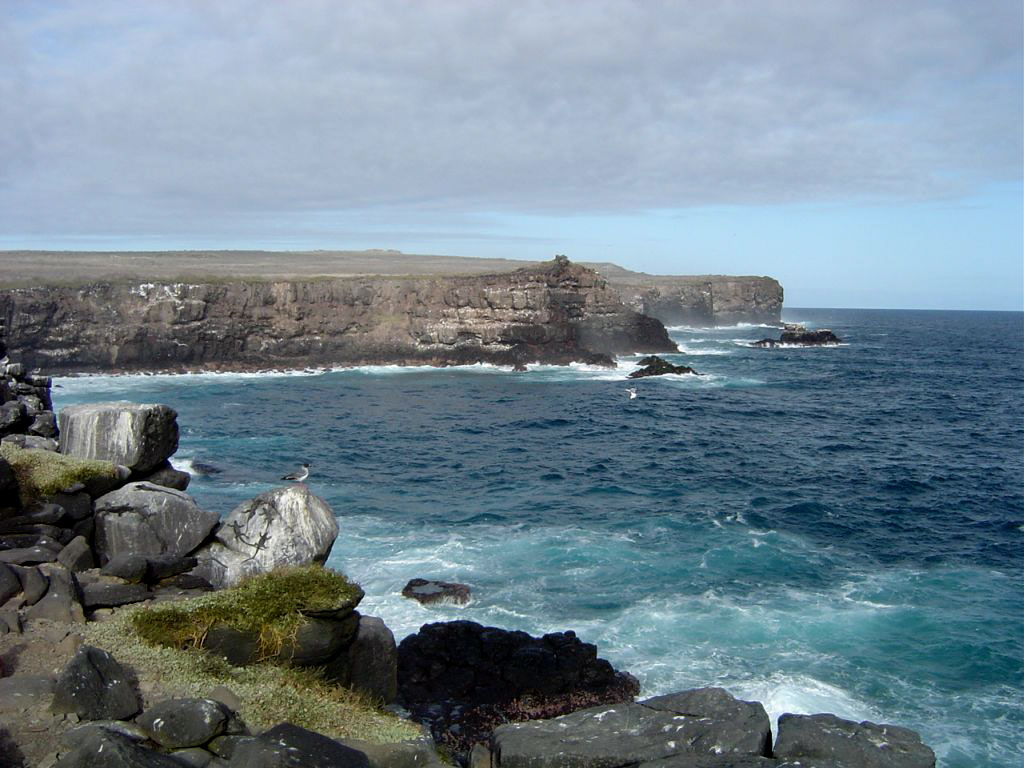
July 30th
Disembarked on North Seymour Island before breakfast to see the frigate birds who make this their home. The males puff up a red bladder under their beaks and flap their wings to attract a female. Several generations of blue-footed boobies live here as well, noted by different colored plumage. The juveniles point into the wind and flap their wings hopefully, while their older relatives, well versed in aerodynamics, are folding their wings and diving straight down into the water from 50 feet to catch fish.
We got off at Baltra after breakfast. Much to our amazement, there was a flight on Emetebe Airlines leaving for San Cristobal in 20 minutes, instantly resolving the long-standing issue of how we would get from Santa Cruz Island to San Cristobal Island. We canceled our plan to stay in Puerto Ayora for one night and launched for Don Guido's ham-radio-oriented hotel in Puerto Baquerizo Moreno without hearing from them regarding our request for a room. Upon our arrival, we found that the hotel no longer exists. Well, actually, it does, but all of the rooms have been rented to the local police for the next five years! Guido, HC8GR, ever the polite host, invited us in for lunch at his home next to the hotel, took us on a tour of the island, then to the ham-radio contest station, HC8N, where we spent the night in the three-story "shack" that bunks twelve. What a station it is, with six kilowatt linears, six TS-930's, a TS-850 and a TS-690 dedicated to 6m. The antenna farm consists of five towers: three have four fixed beams each on 20m, 15m and 10m, pointed in the most appropriate directions. Another has 40m and 80m beams, while the last has a Force 12 beam and 7 elements on 6m, pointed to the states. We talked to Guenter, HP1XVH, our friend in Panama, on 20m, and listened on 6m, but heard nothing. There is a beacon, HC8GR/b, with maybe 20 watts to a halo on 50.035 and another, never reported, on 144.237.
Guido isn't too active, but enjoys 6m at home (IC-706 and 6 elements) and on the hill, 18 km away, where he spends many nights, in spite of the wind, fog and cold weather and the wife and three kids left behind.
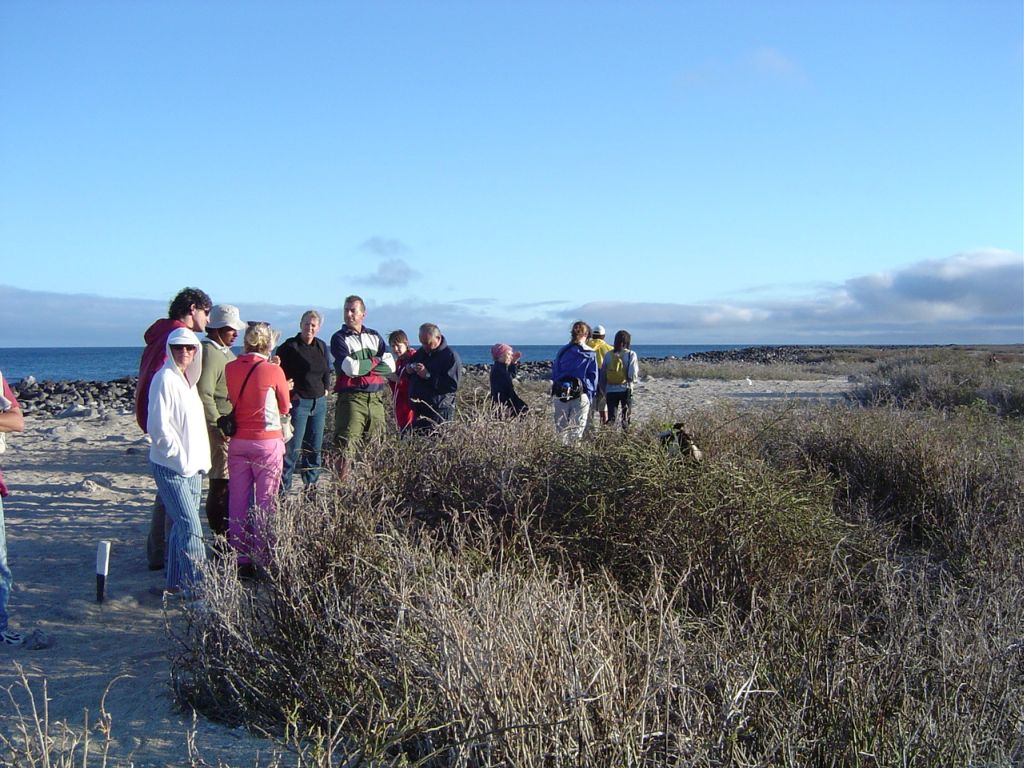
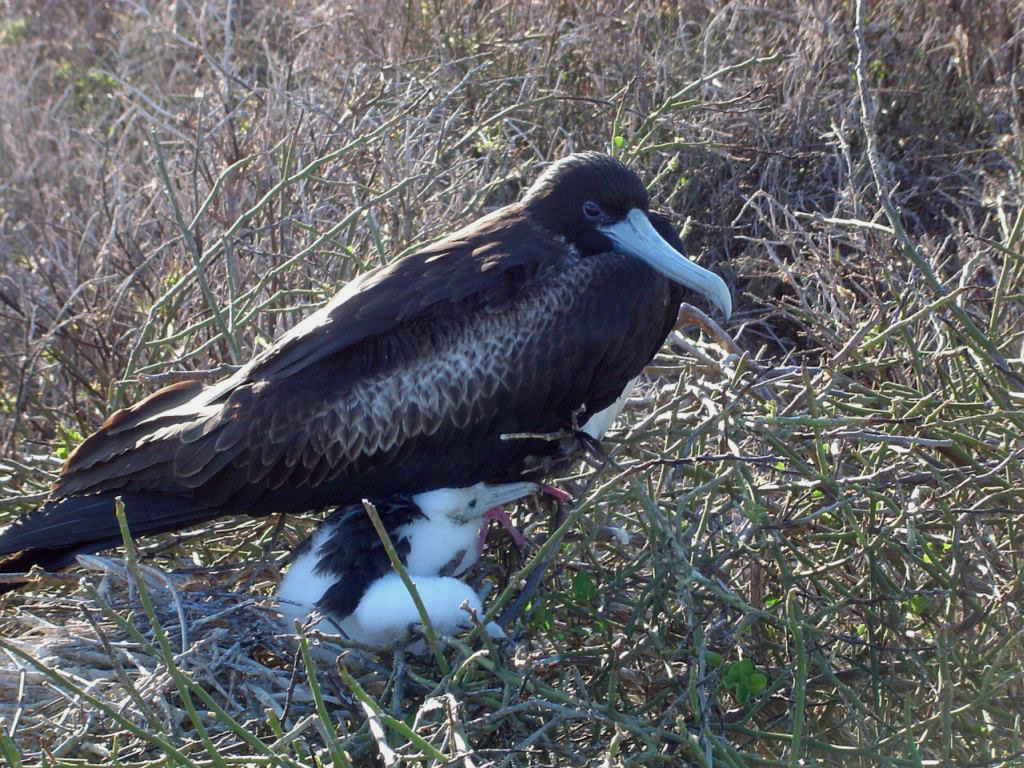
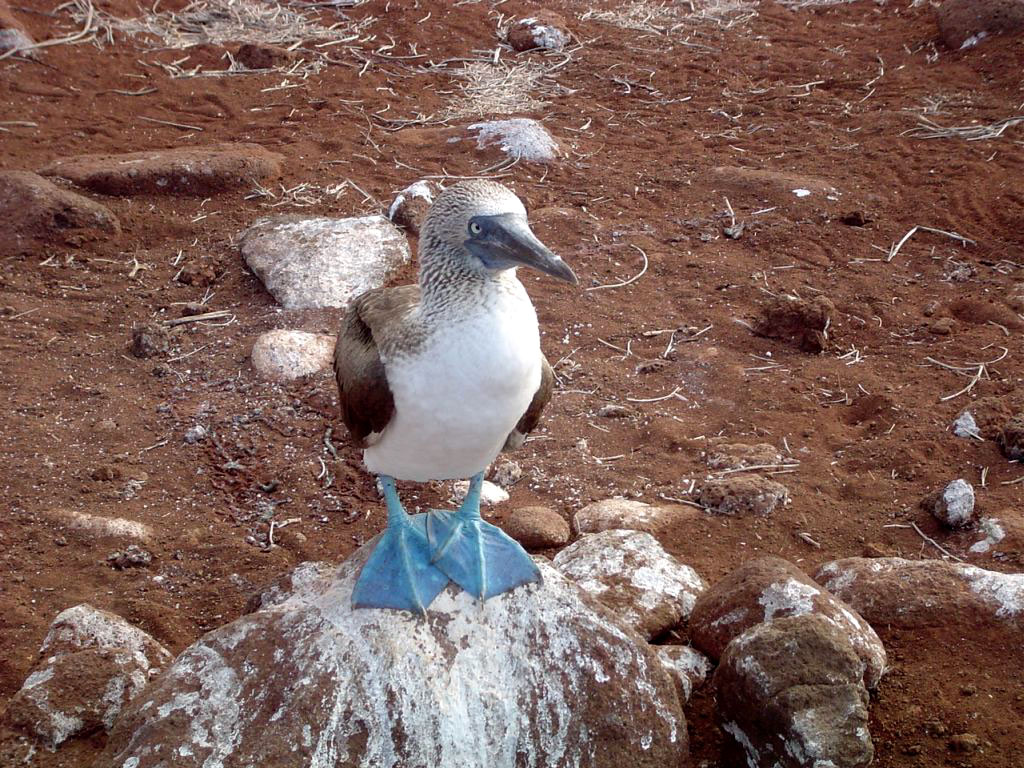
I own this rock
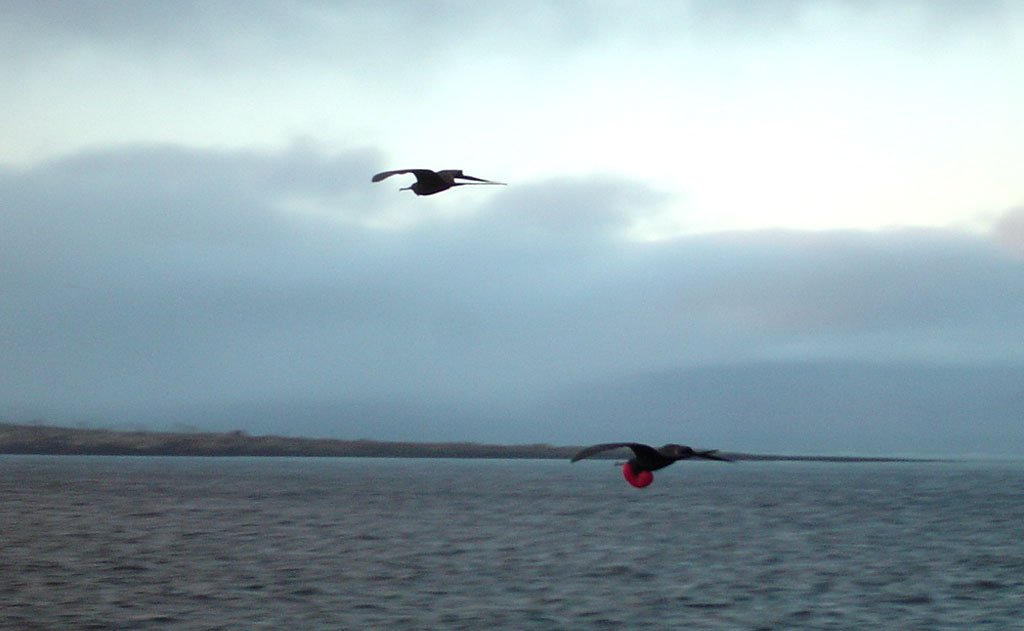
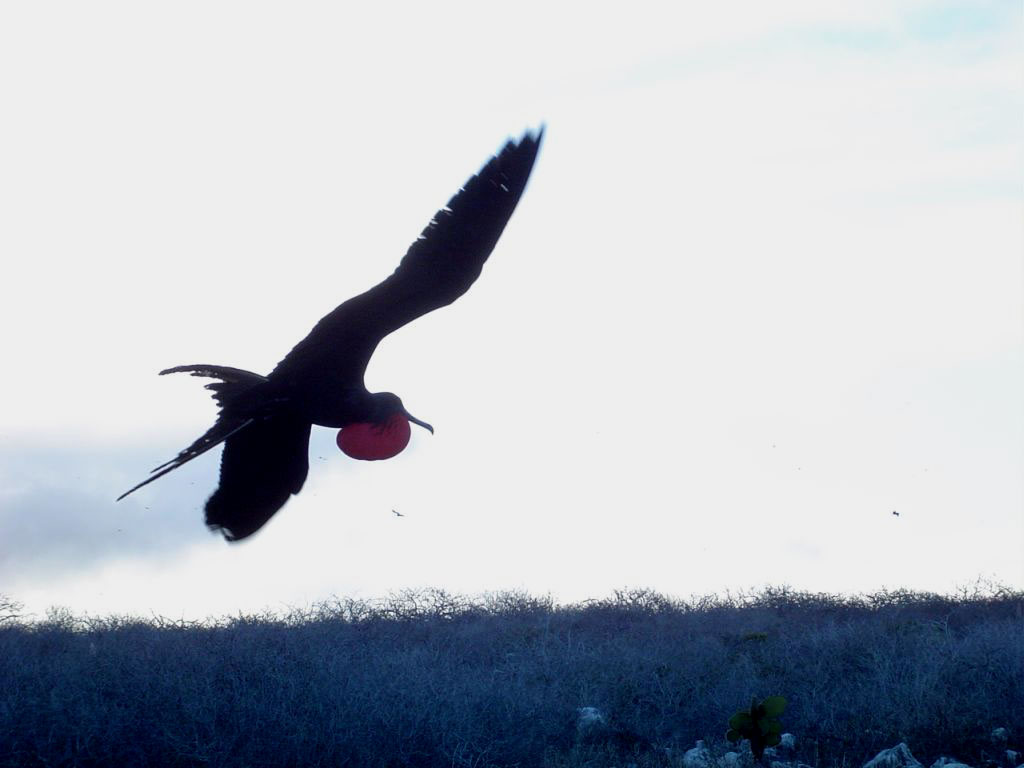
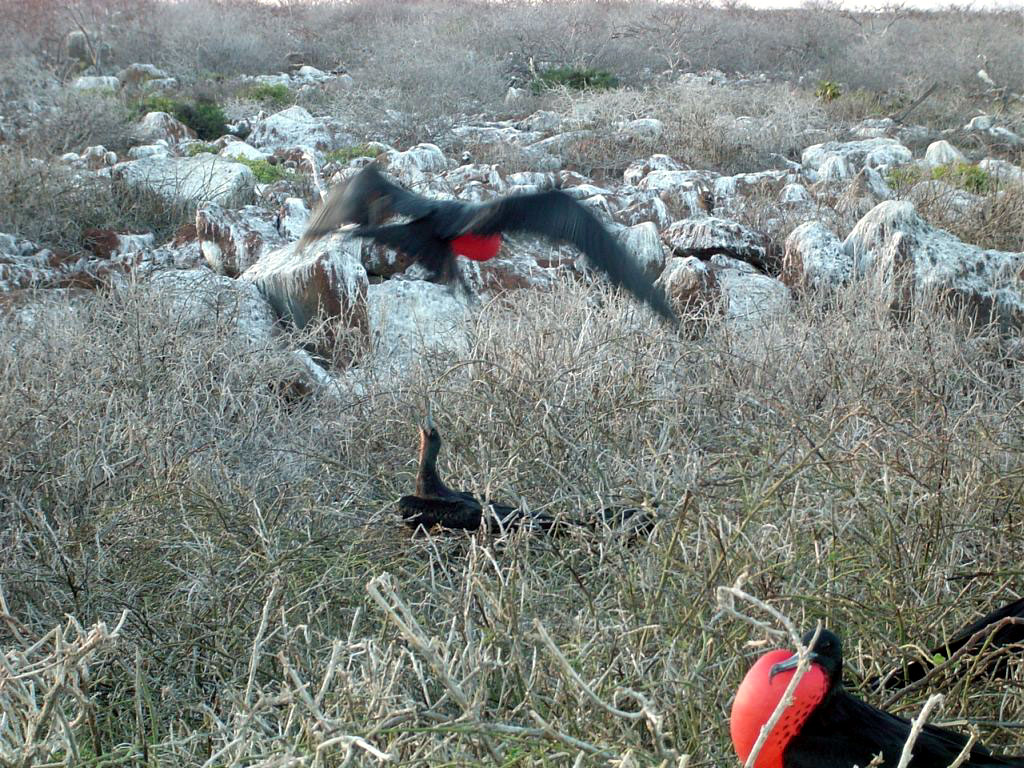
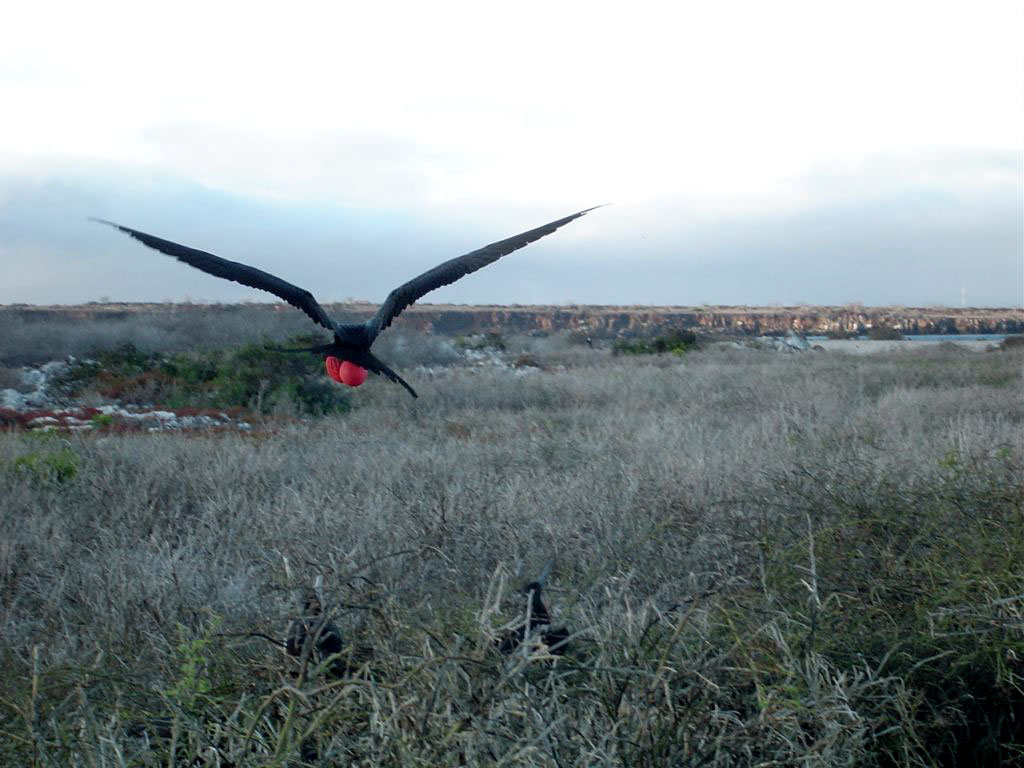
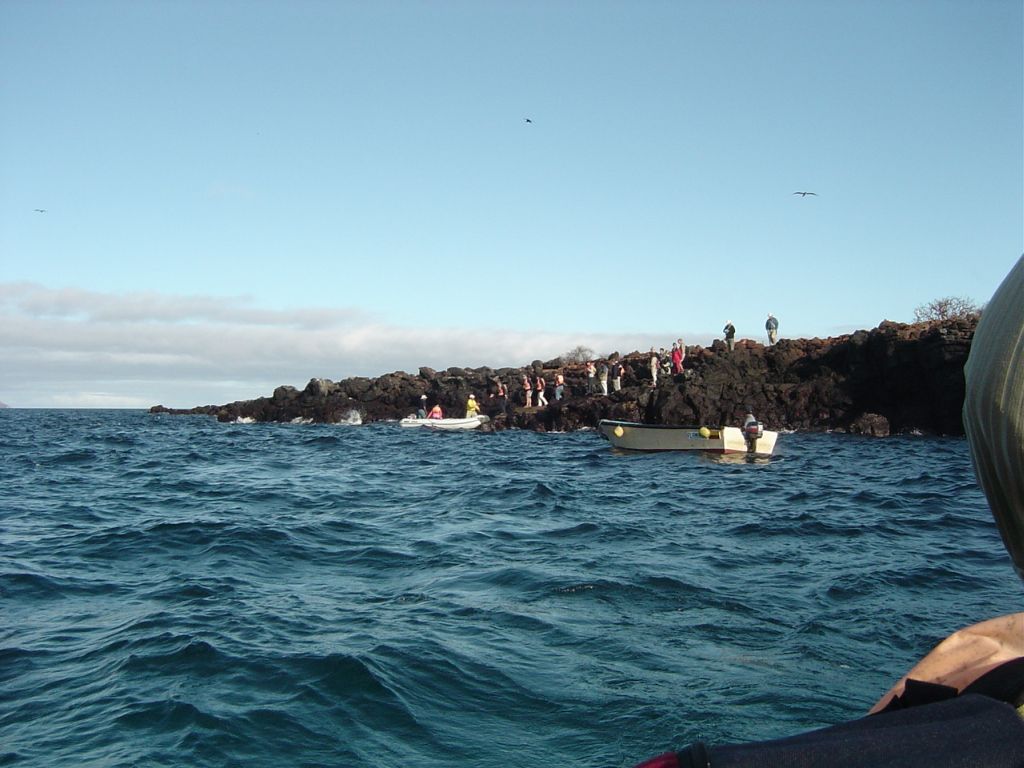
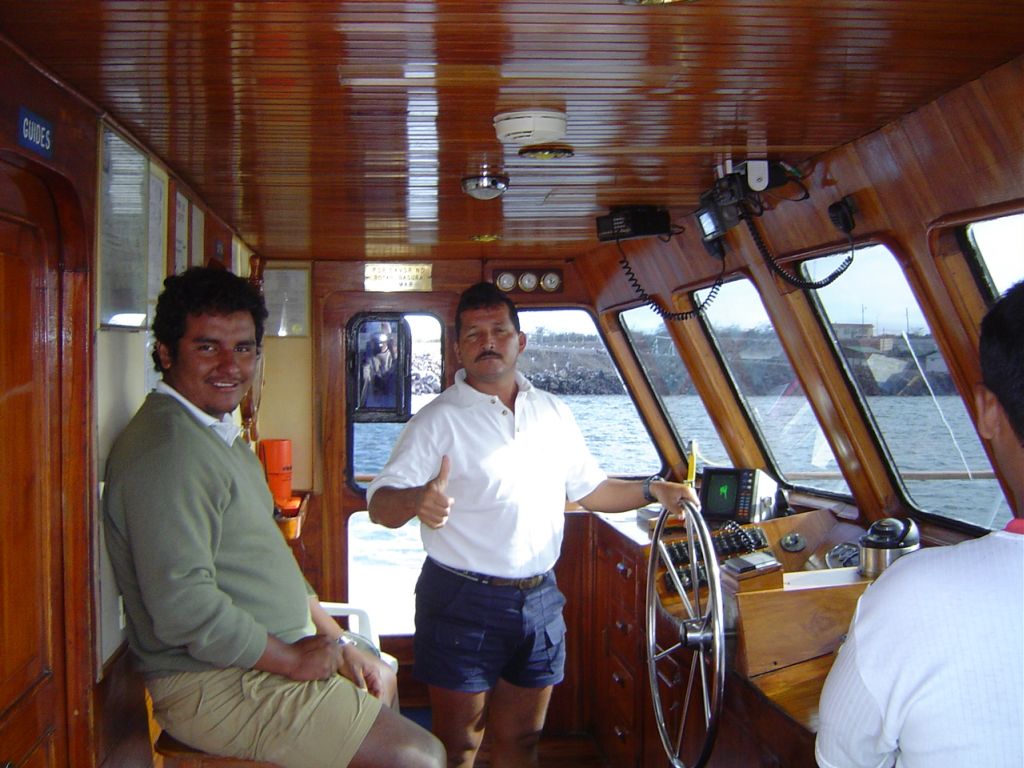
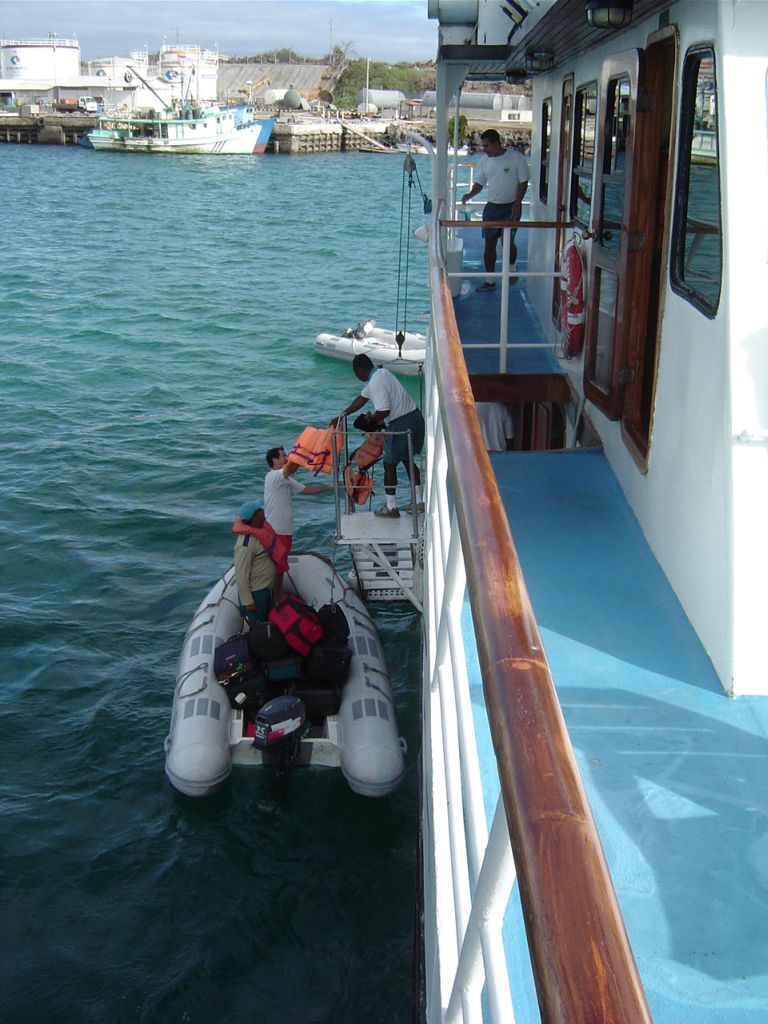
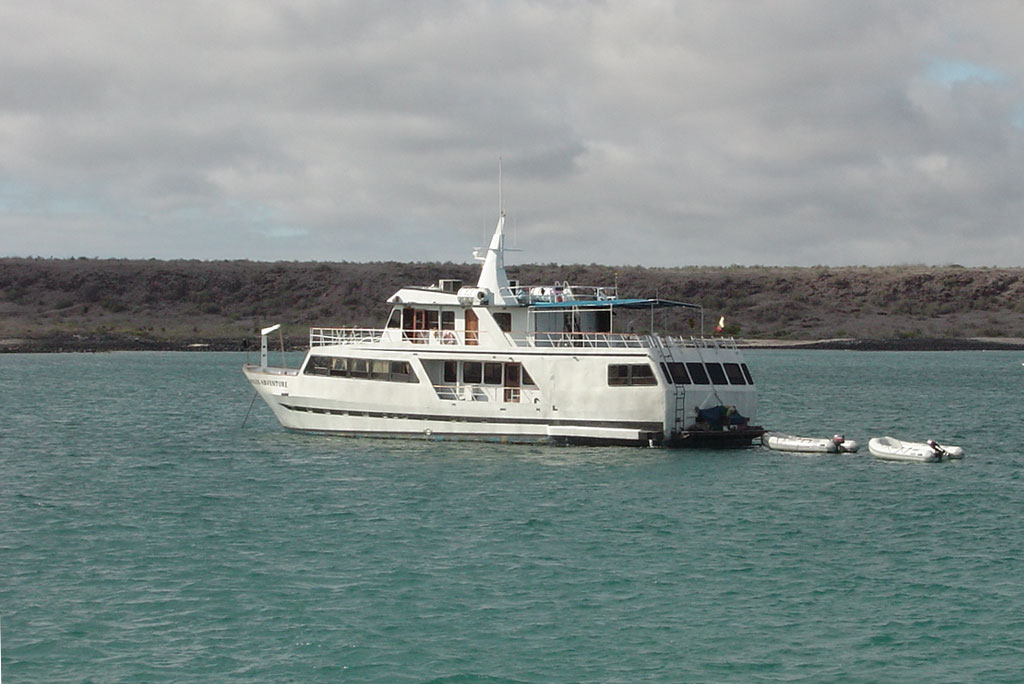
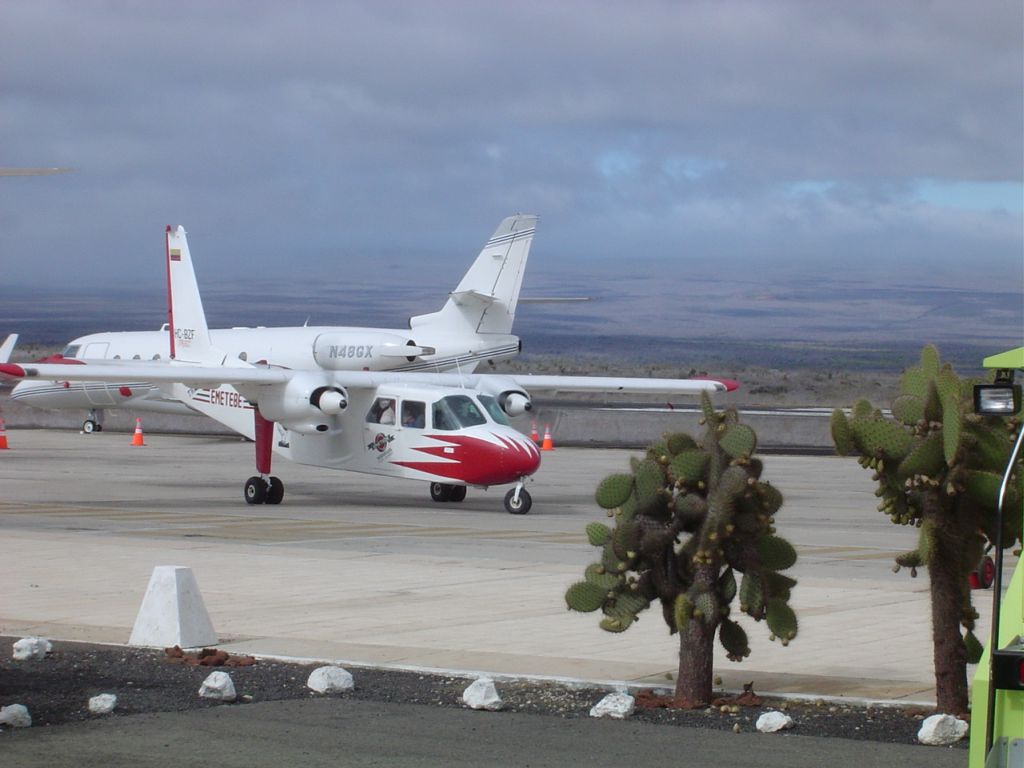
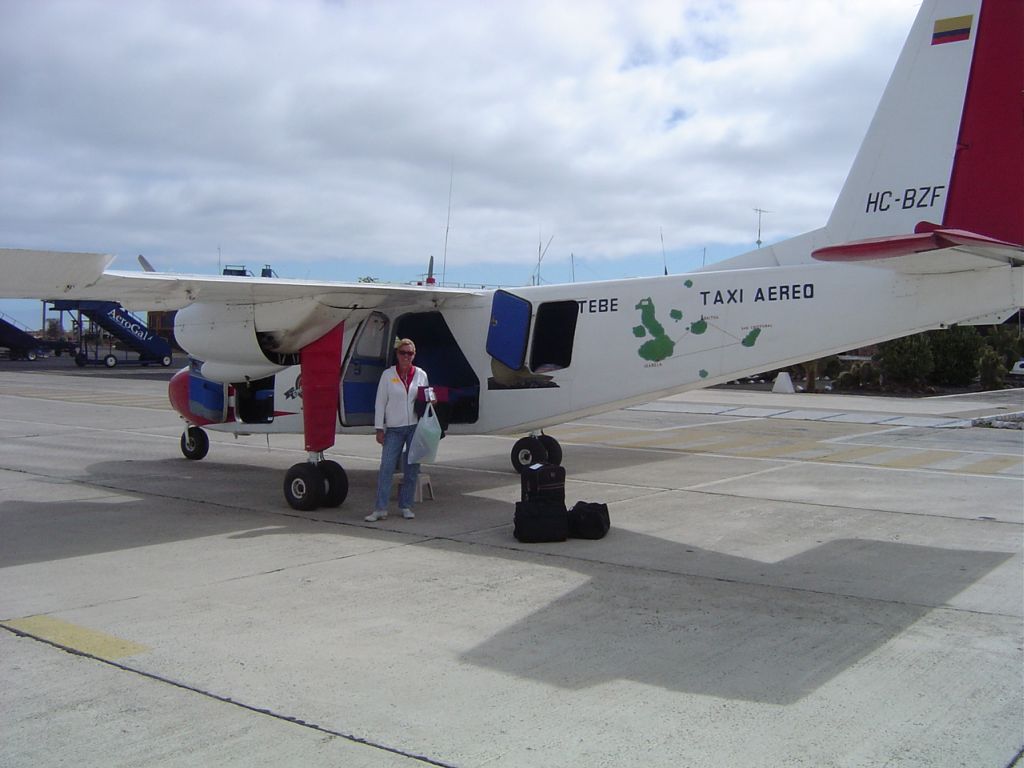
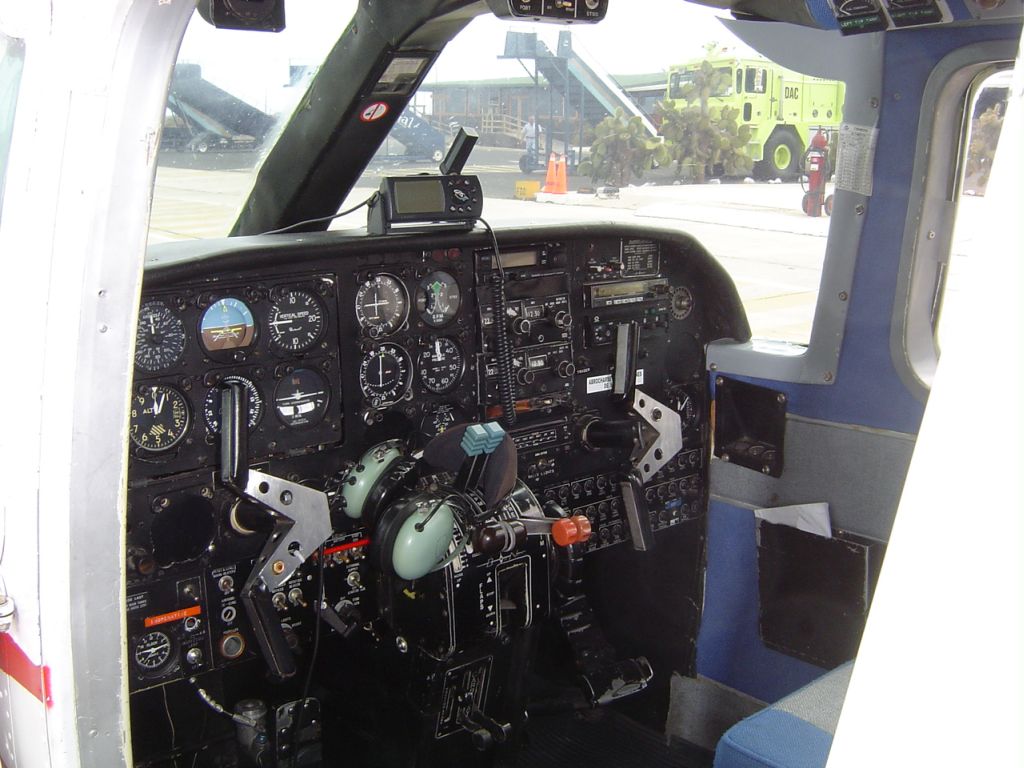
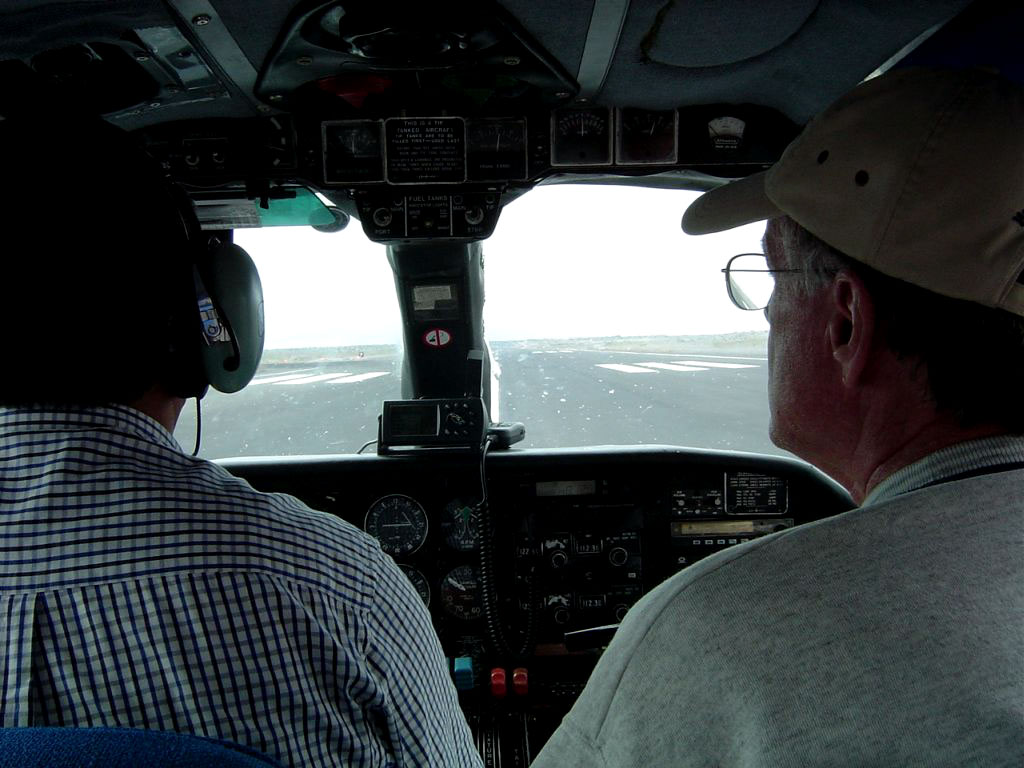
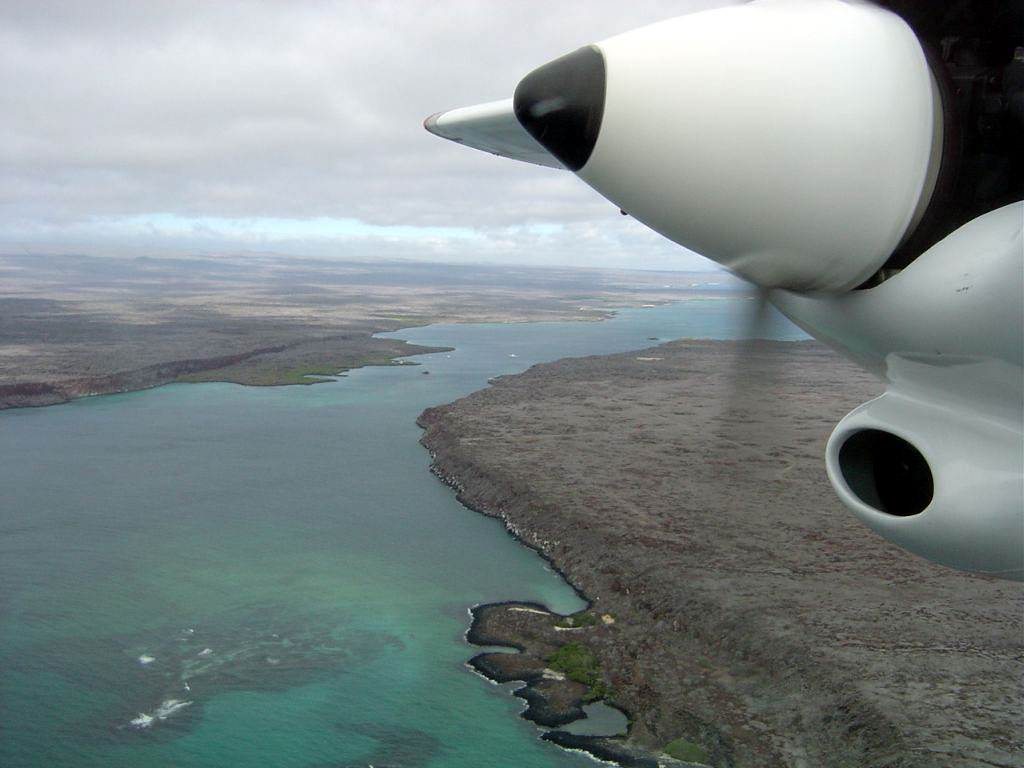
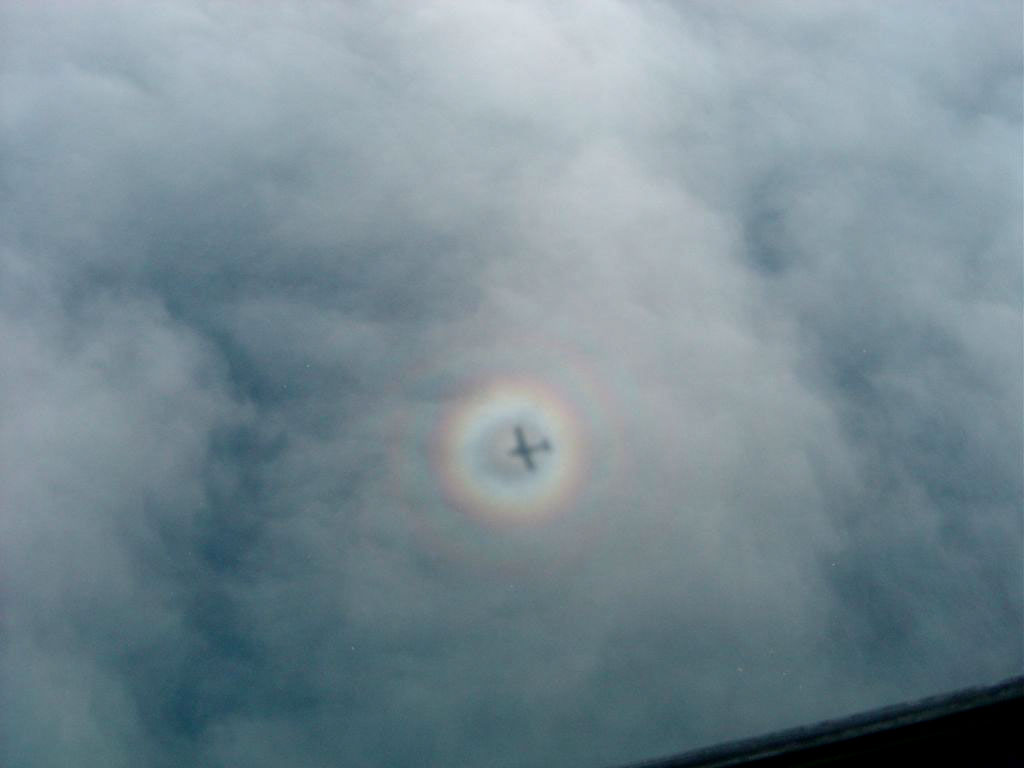
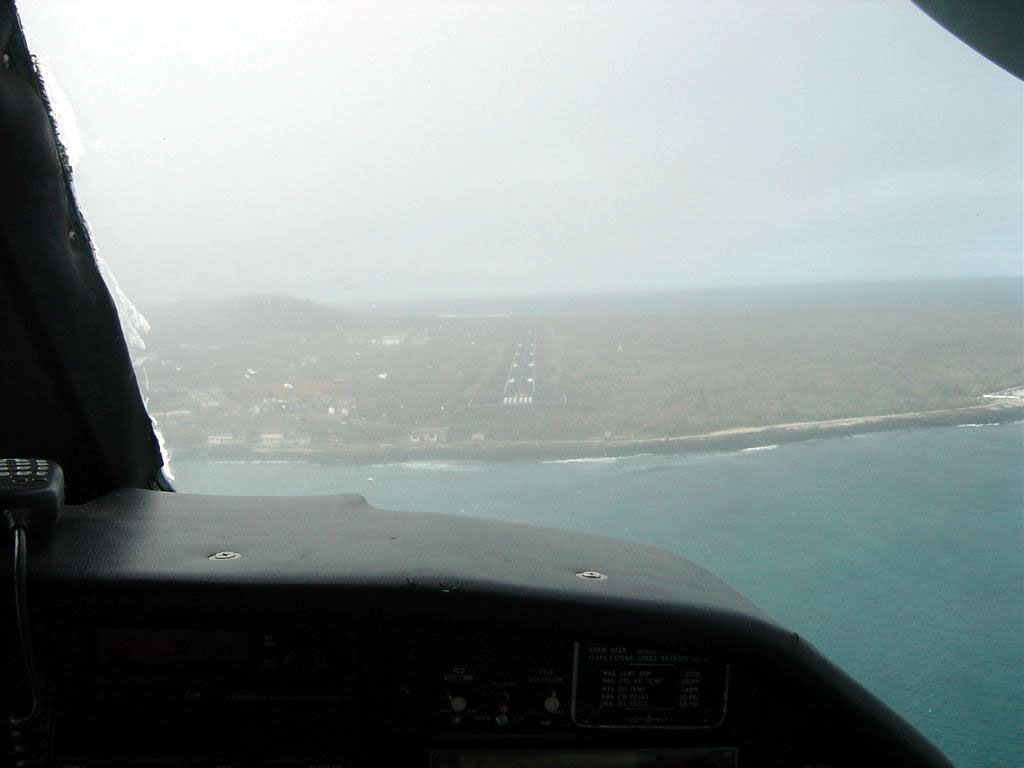
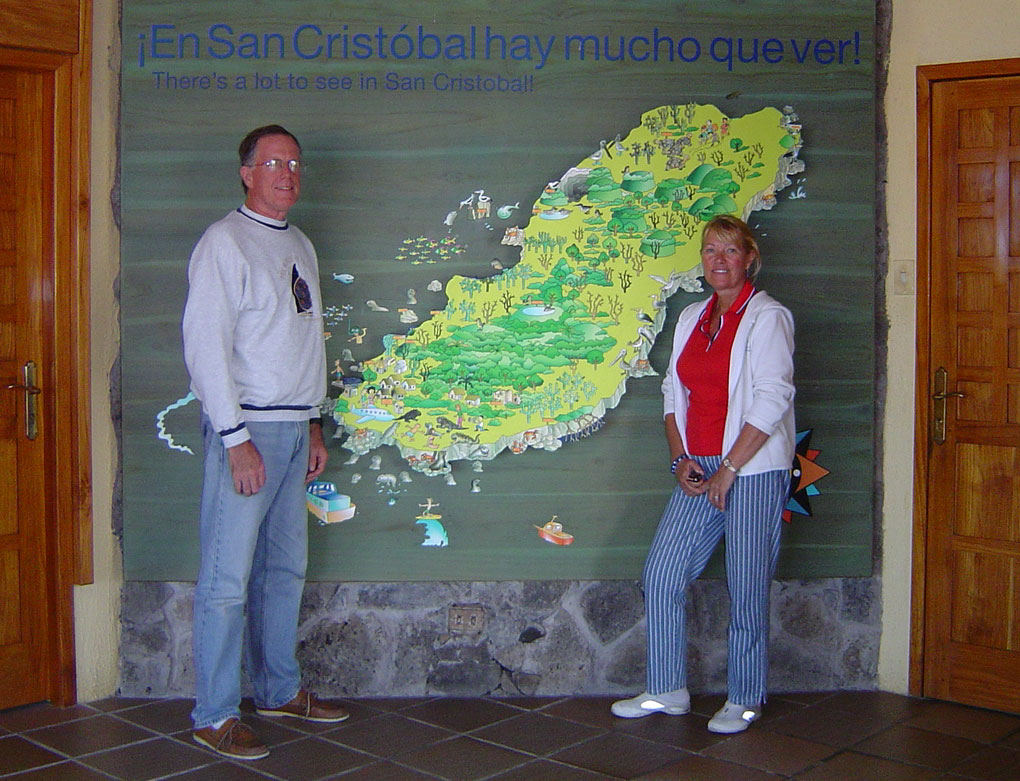
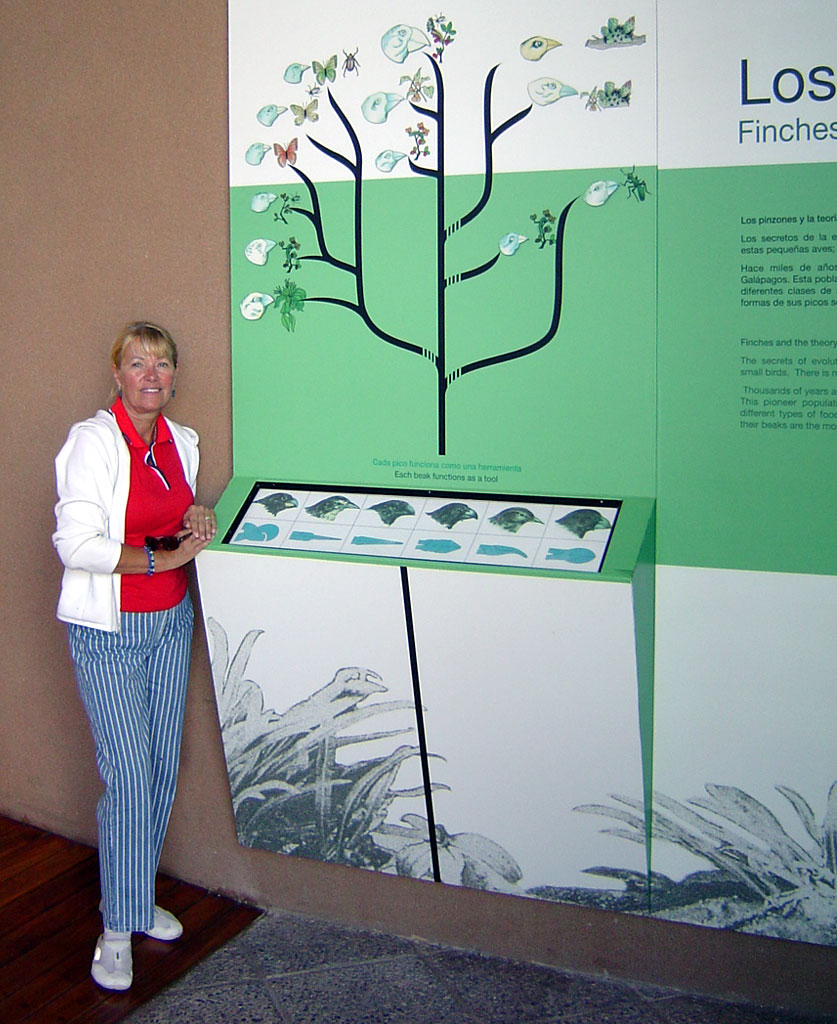
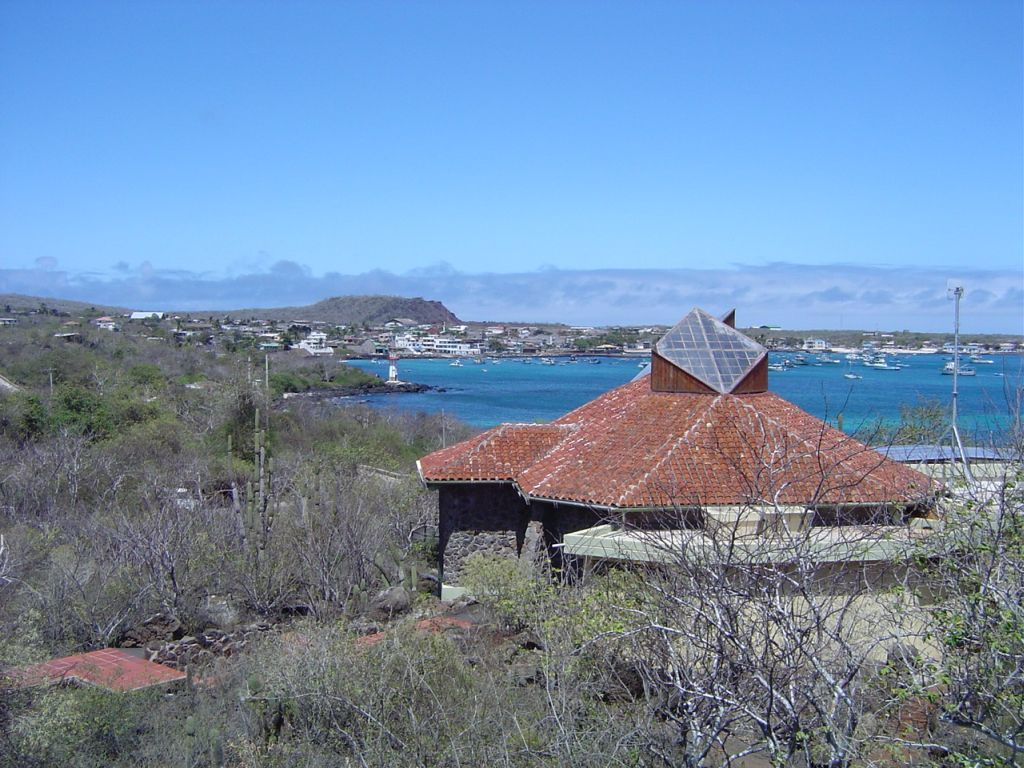
July 31st
Today was Guido and Chelita's 40th wedding anniversary. We brought a bottle of champagne to the afternoon celebration with family and many friends.
A ham license is far more than an authorization to transmit. It's a membership in a world-wide fraternity. What other group can you name that would invite a pair of perfect strangers into the family? I made a CD for Guido with all the photos we took in San Cristobal, at the ham station and at the party.
Fearing that we would wear out our welcome with Guido, we checked into the Isla Galapagos hotel. The manager brought a small refirgerator into the room in response to our request for a TV set. Out with the fridge, in with the TV. The manager also agreed to replace the mattress on our bed, as hard as a rock, which he did by exchanging it with the one in Room 1, a process that began as we walked into town for lunch.
After a siesta in our now fully furnished room, we had dinner with Herbert, HC8DH, an introduction organized by Guenter from Panama.
As we walked back to the hotel after dark, low clouds obscured the "Blue Moon", as the second full moon during any month is called.
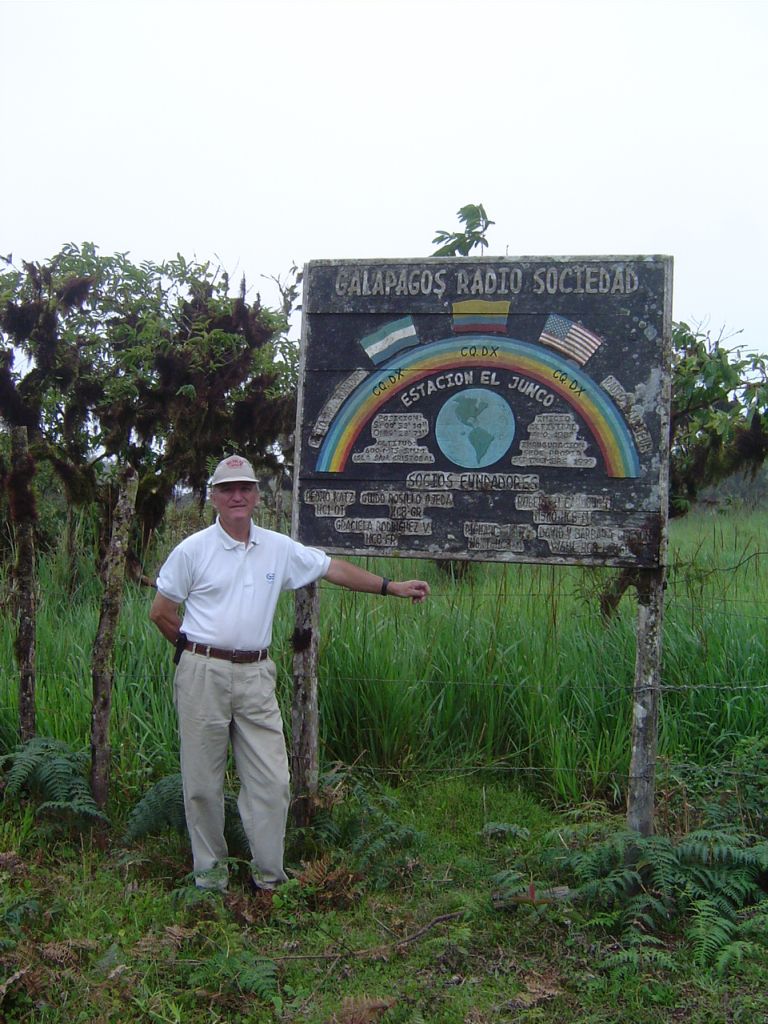
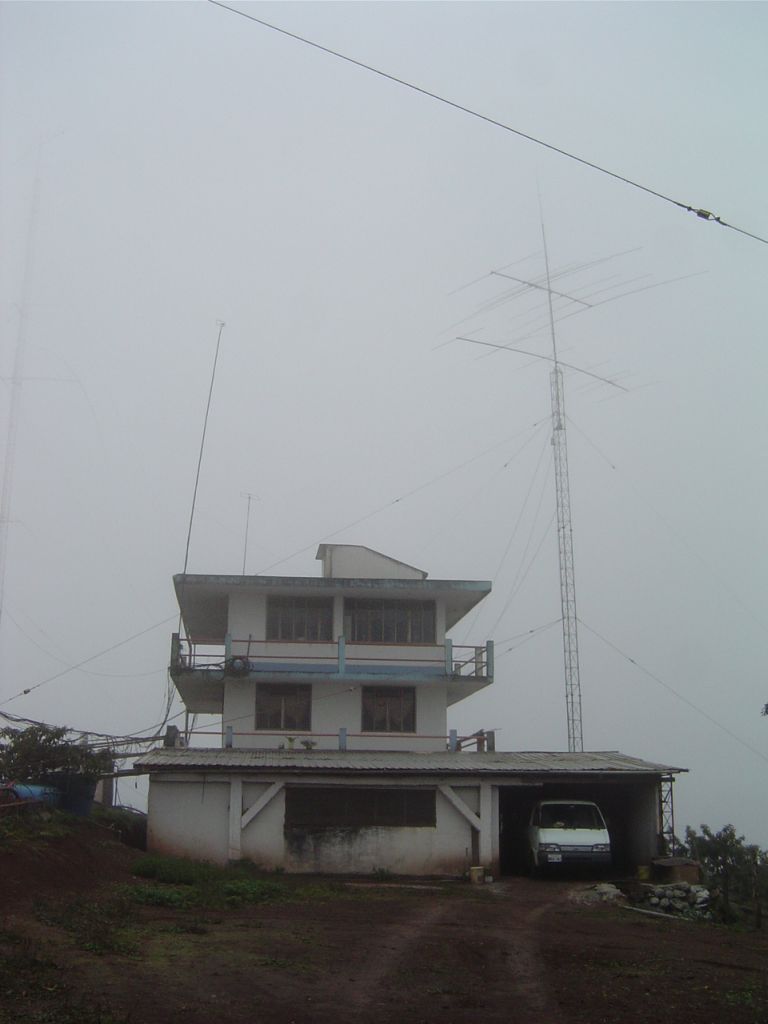
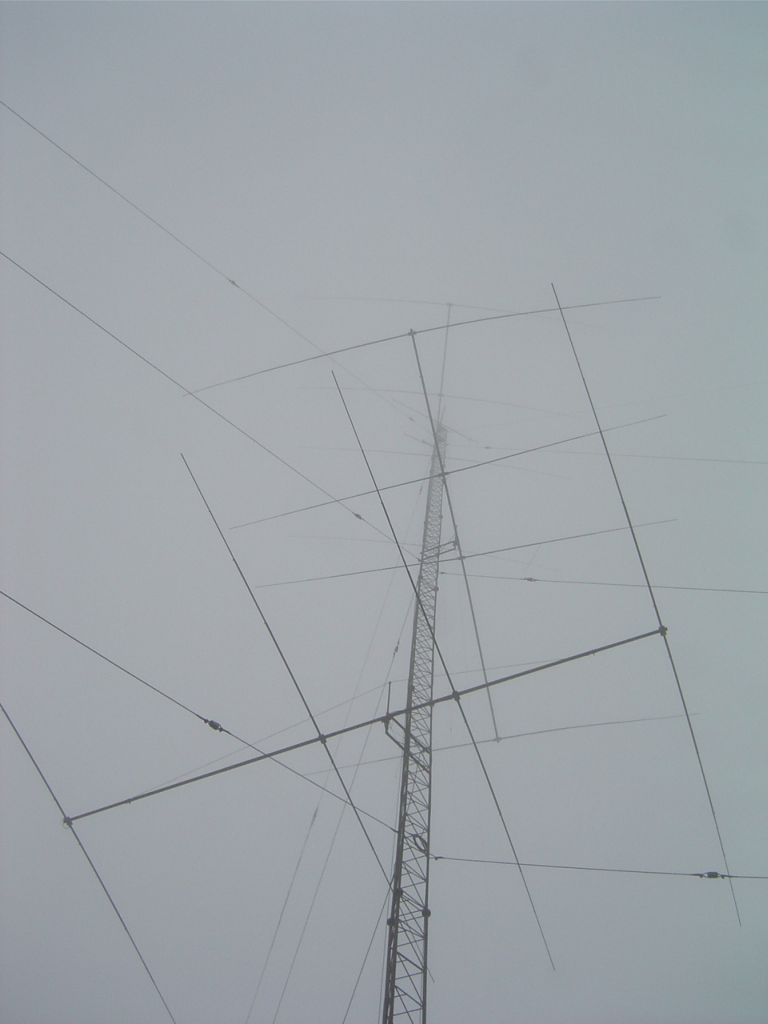
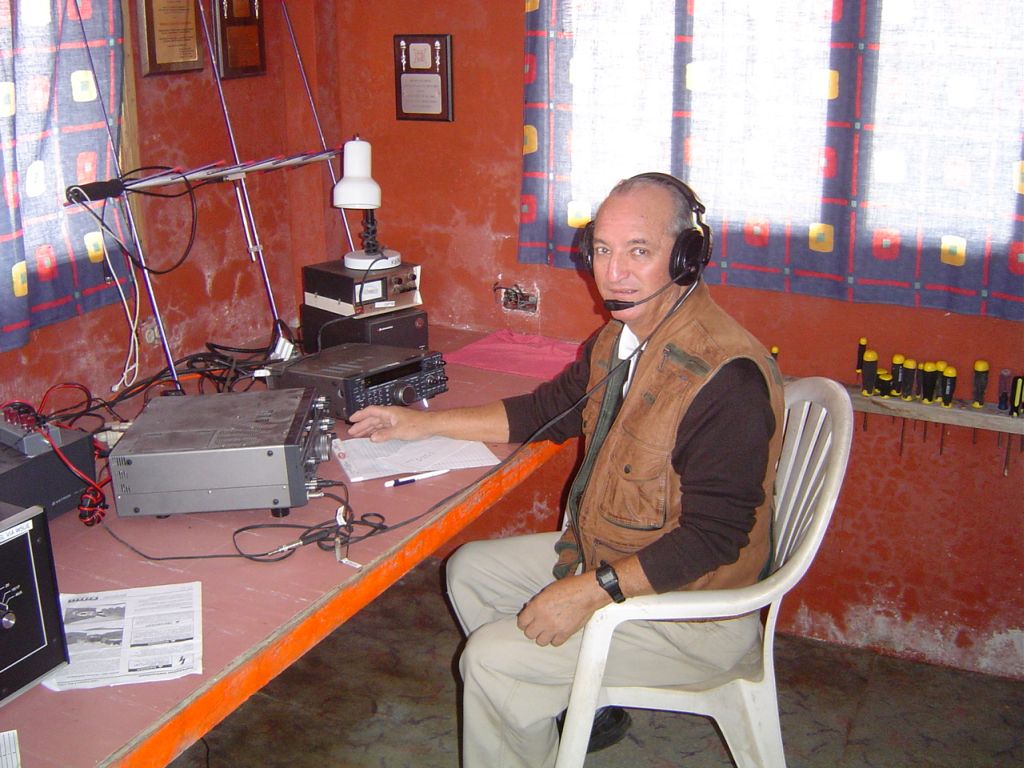
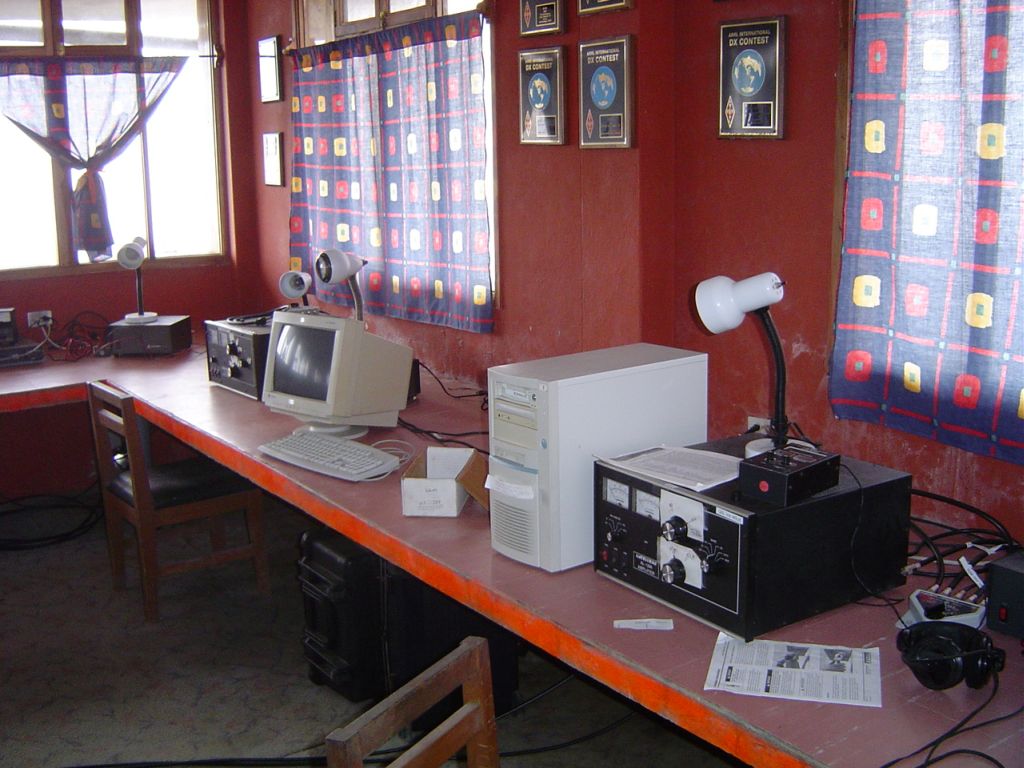
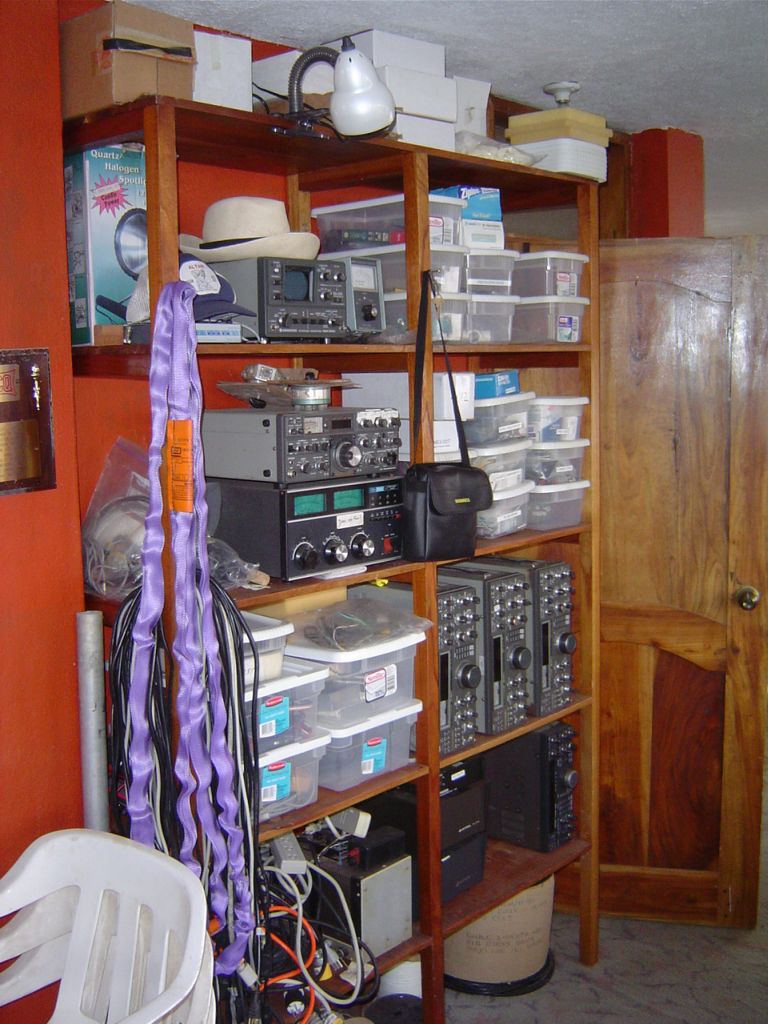
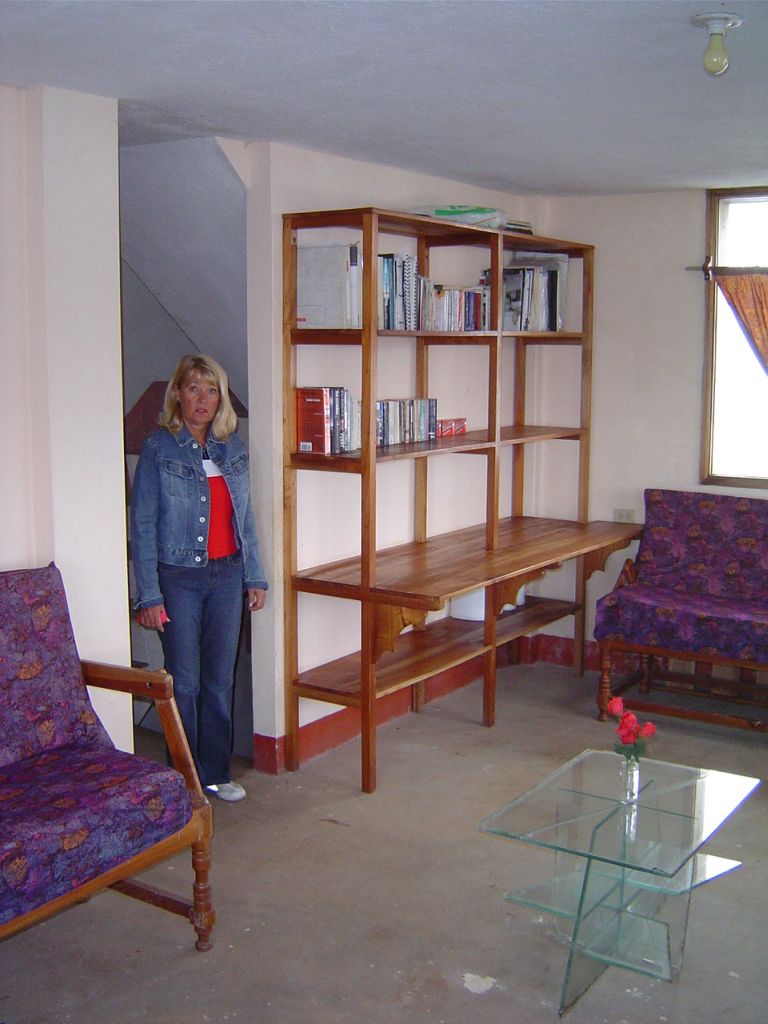
Little Girl Lost
